

Catamaran VS Sailboat, 9 Important Differences You Should Know!
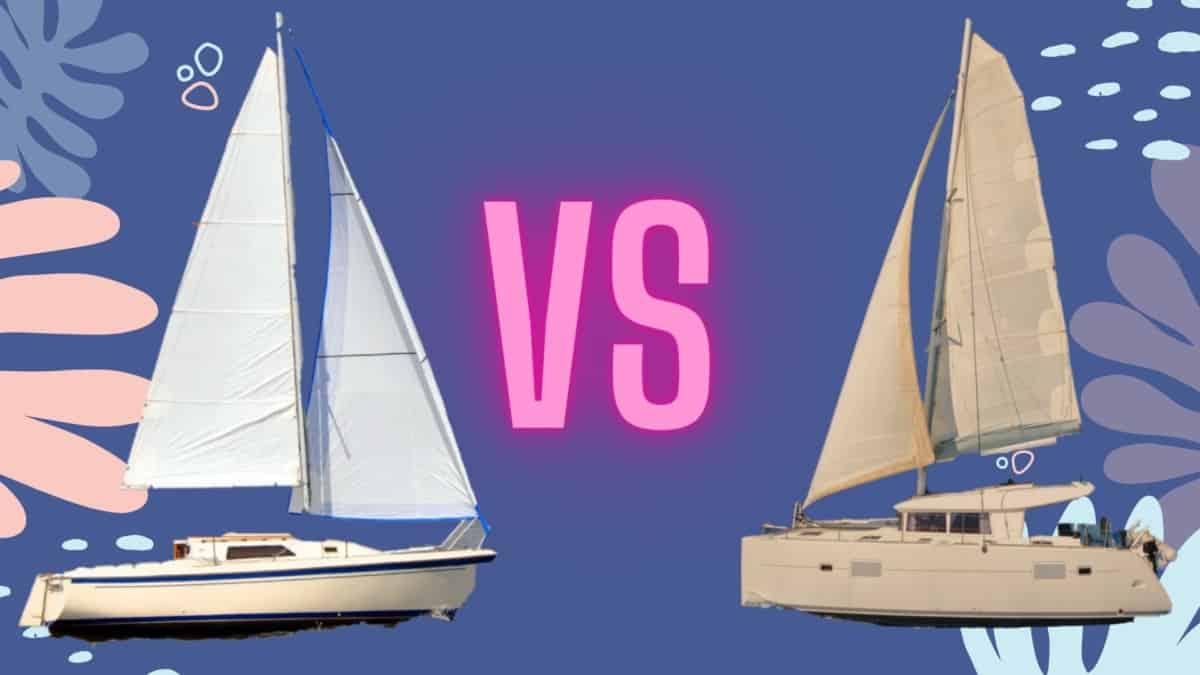
As an Amazon Associate, we earn from qualifying purchases. We may also earn commissions if you purchase products from other retailers after clicking on a link from our site.
This is one of the never-ending questions out there, catamarans vs. monohulls (also known by some just as sailboats). The discussions are wild and are, many times, really hard to follow unless you’re already a vivid sailor. By then, you probably already have your own opinion on what the differences are.
In this post, I’m trying to take a little more pragmatic approach to describe the 9 most important differences that I think you should know about.
Table of Contents
1. Catamarans Have Two Hulls, Sailboats or Monohulls Have One
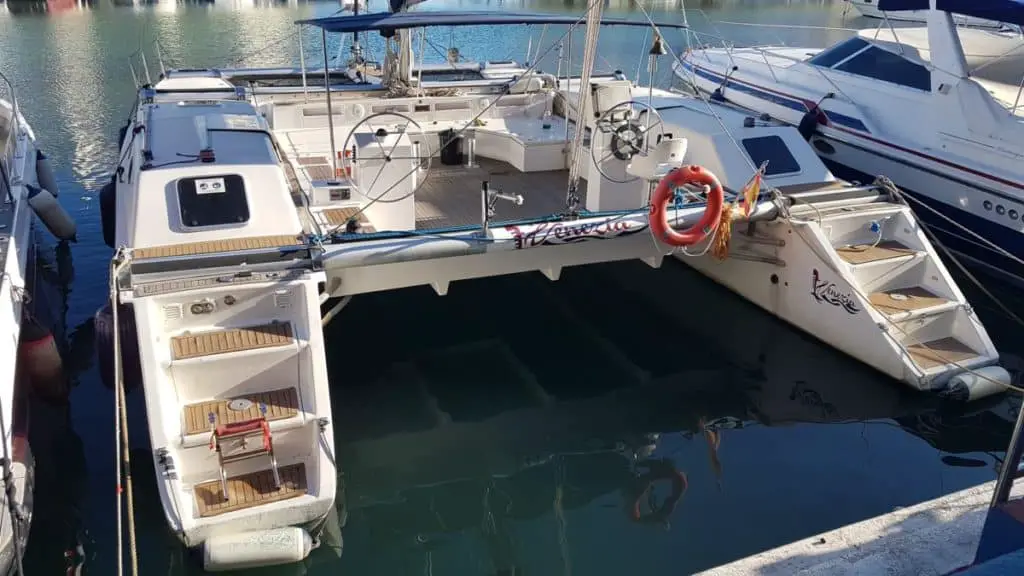
This is the most apparent feature that strikes you when you look at the two boats next to each other; one has two hulls, and the other only one. Mono, as you might know, means one (1).
Having two hulls also implies you need something that connects them, making the boat look a little bit like a manta ray, or is that only me?
2. Monohulls Will Rock From Side to Side
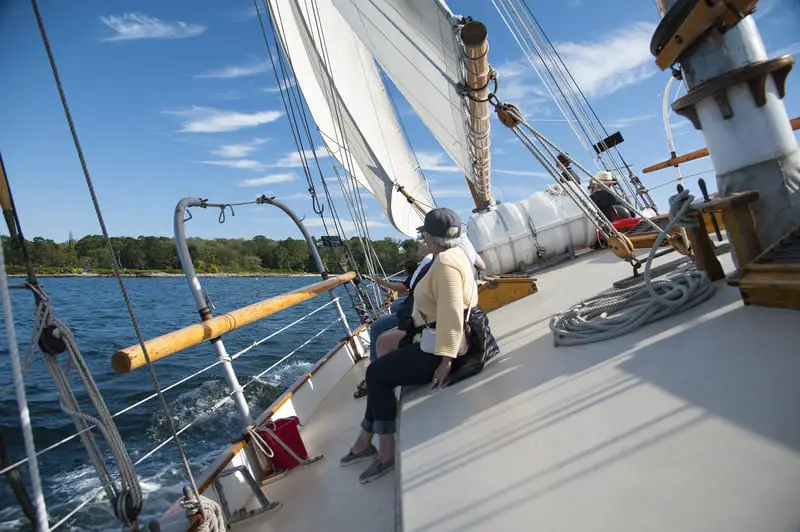
Catamarans don’t heel (leaning to its side in boat language). Therefore, they offer a very different sailing experience, which is more stable and usually more comfortable; this also applies when staying at anchor. The catamaran will move around with the wind, always staying flat, while the sailboat will rock from side to side and might even get you seasick .
This is especially noticeable when the wind is opposing the waves, making the boat have the wind pushing it from one side and the waves banging it from the other side. This makes for a very uncomfortable anchorage on a monohull. Basically, you are the iron, and the wind and wave are your hammer and anvil, not a perfect place to be.
3. Catamarans Offer More Space for the Same Length
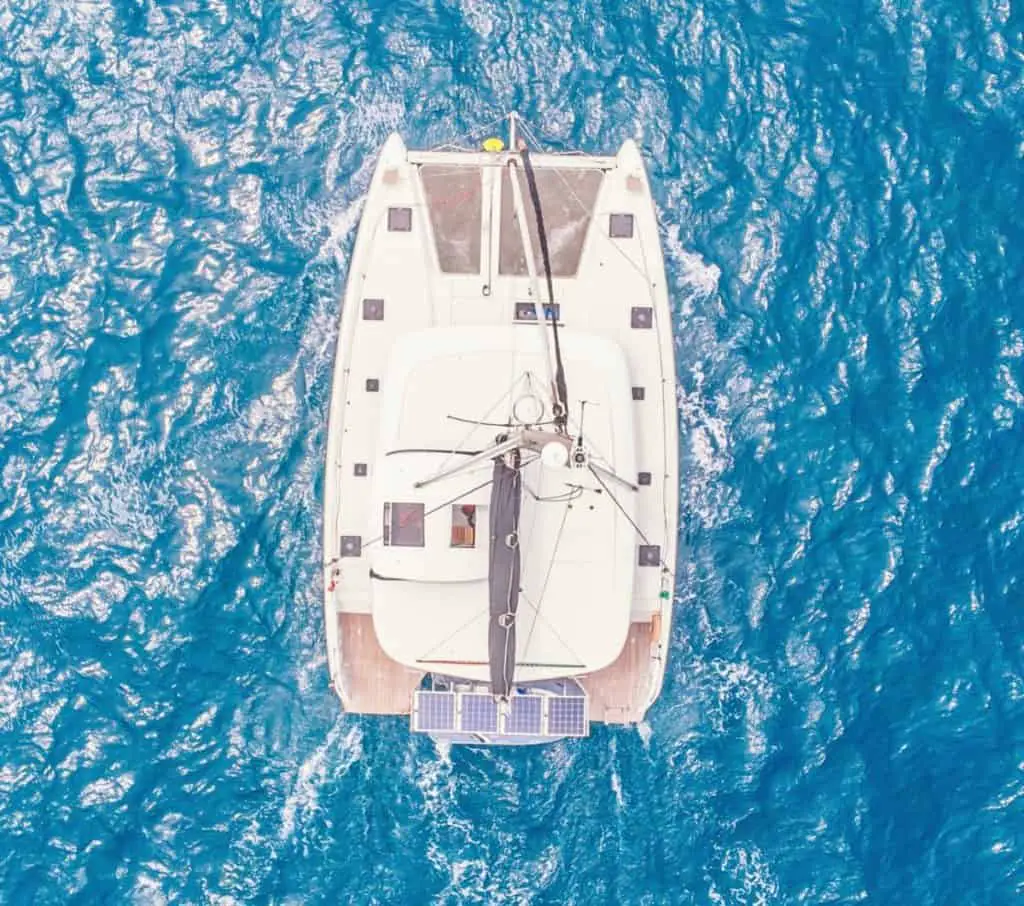
For the same length of boat, let’s say 40ft, you’re getting a lot more space on a catamaran. This is due to the two hulls, but also the big deck that attaches the hulls. There will also be even more space on the outside of the boat, both fore and aft of the mast. In between the bows, you will have either a solid deck or trampolines , which will greatly increase the space.
4. Catamarans Make Horrible Noises While Sailing Upwind
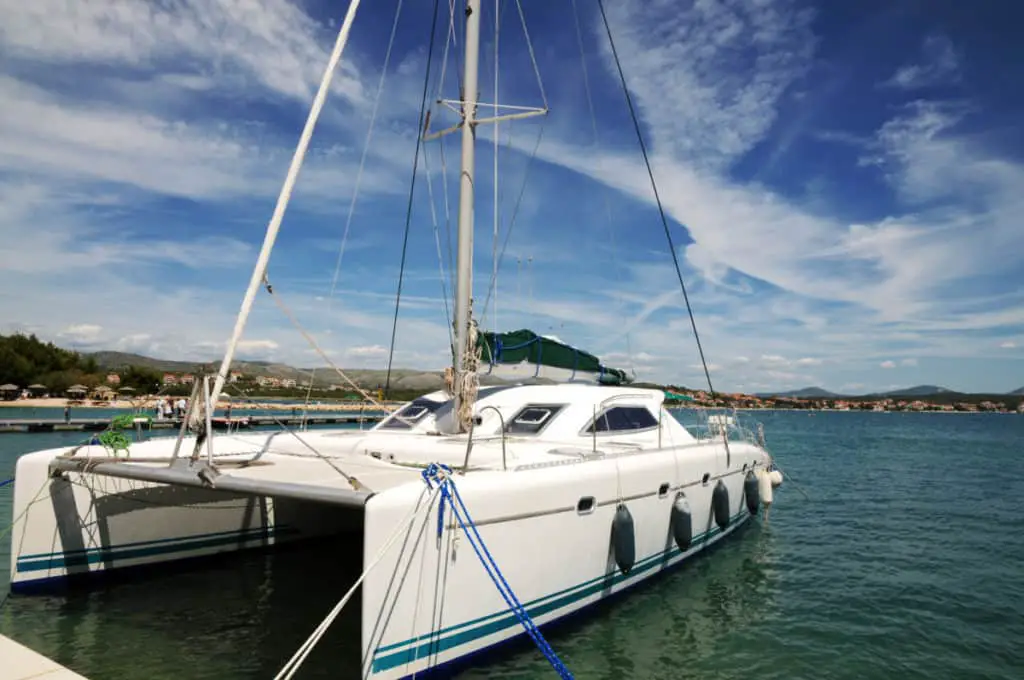
The distance between the water surface and the deck’s underside is called bridge deck clearance ; if it is not big enough, even small waves will start smashing into the underside.
This repeated cycle of waves hitting the boat does induce not only great noise but also a lot of vibrations and discomfort to the crew.
This problem is something that just doesn’t exist on monohulls (only one hull) and also is a strong argument from those who prefer monohulls.
The noise might not be a big deal when traveling coastal waters for a few hours a day, but consider going days on end straight into the wind, hearing that banging noise, ad a little motion sickness, and you will pretty soon wish you were on a monohull 🙂
5. Monohulls Are Slower Than Catamarans
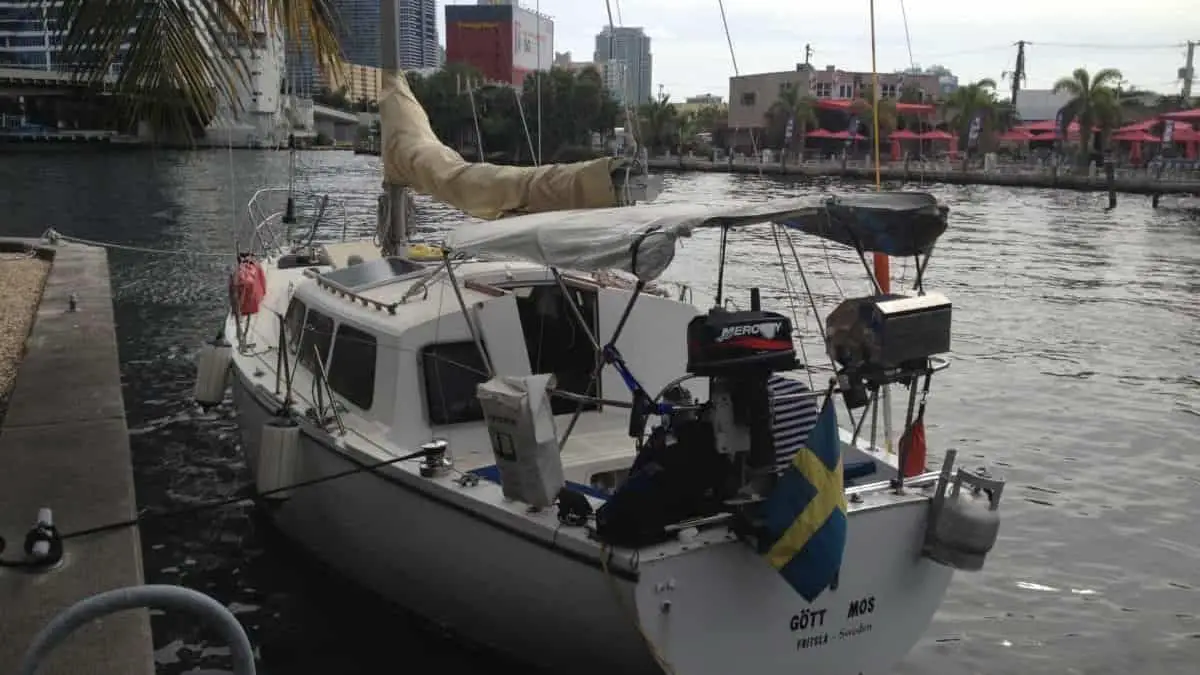
At least that is the short answer, this applies if we only compare the length of the boat, but if we compare the total length in the water, it’s a different story. Much of this speed comes from the decreased drag, bigger sails, and a catamaran’s lesser weight.
Here are some articles when you want to better understand catamaran speed:
- Cruising catamaran speed
- Fastest cruising catamarans
- Catamaran hull speed calculator
- Are trimarans even faster than catamarans?
- 20 Performance cruising catamarans
6. Catamarans Offer Less Helm Feedback
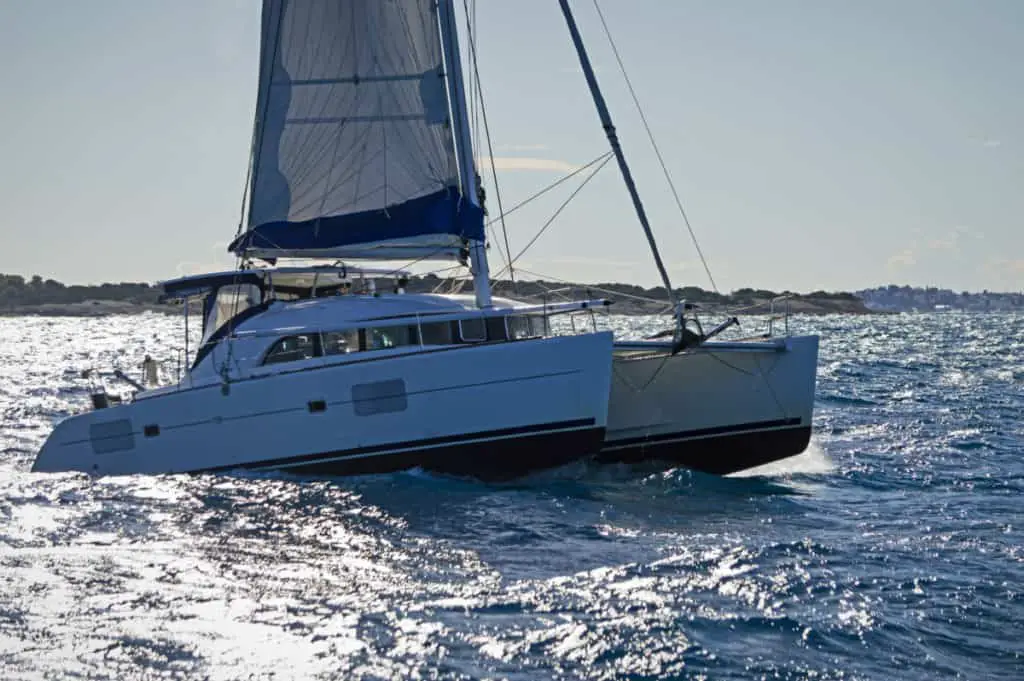
One big benefit of having a boat that heels is that it’s a great way to get feedback on whether or not the boat is overpowered. Since a catamaran stays flat, it is harder for a new captain to understand when to reef.
This could be a safety issue for those transitioning from monohulls to catamarans, which I believe is the most common way people acquire a catamaran.
7. Monohulls Are Harder to Dock
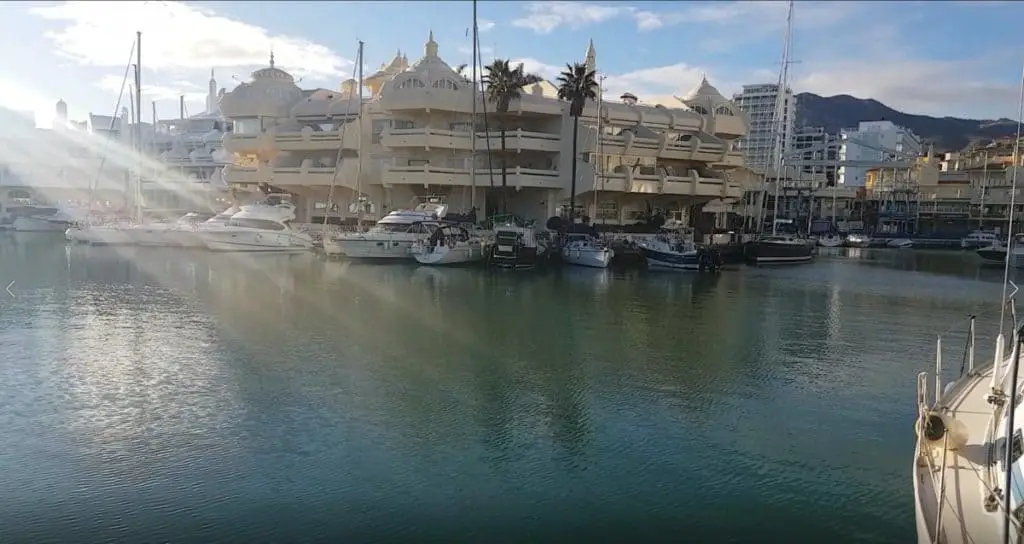
For a monohull to turn, it needs enough water passing around the rudder; for enough water to pass around the rudder, the boat needs to be moving. So this means once you stop your boat, you can’t turn; the things that move you are the wind and the current. This is the tricky part with a monohull, the timing needs to be perfect, or you’ll either go too fast and hit the dock, or you’ll go too slow and drift away.
On a catamaran, that’s different, you see; now you have two engines, much like a battle tank, you can now make a 360 turn on the spot. This means you can do a full stop, put one engine in forward and one in reverse, making the boat spin on its axis. That’s great! I wish my car would do that.
8. Catamarans Are More Fuel-Efficient
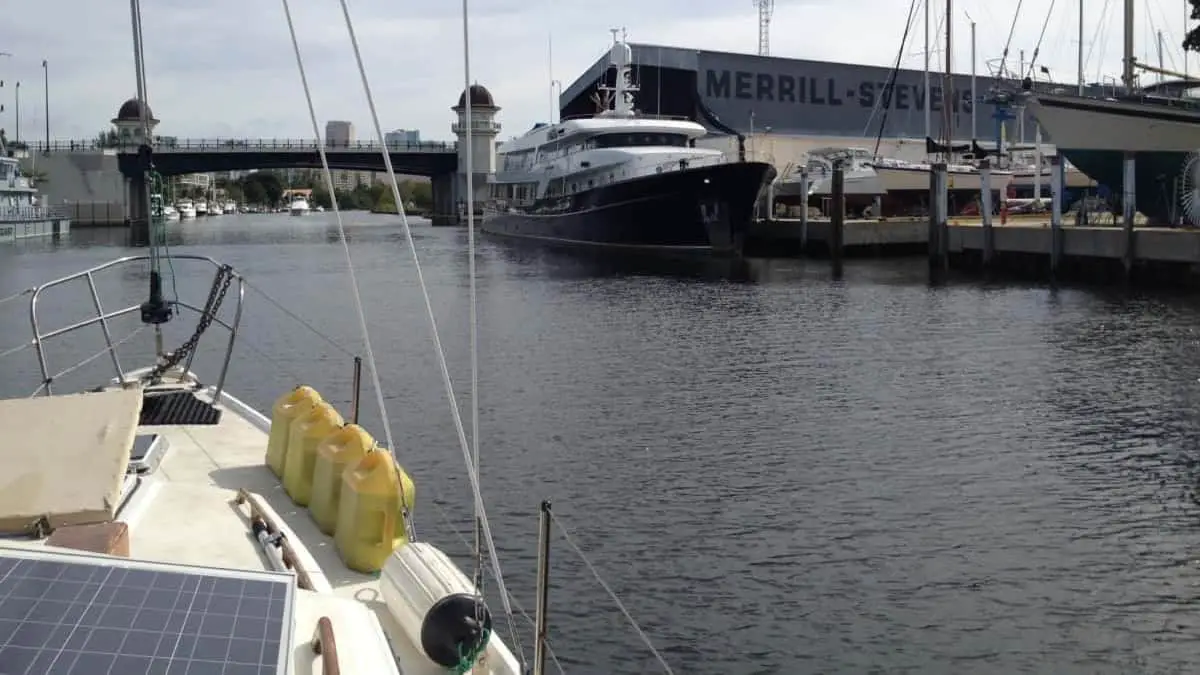
Saying a catamaran is fuel-efficient is like saying your Ford F150 truck is fuel-efficient. But, in comparison to its one-hull brother, it’s true, this really needs a lot more explanation for it to be a fair comparison, but only considering the lengths of the boat, the catamaran will consume less fuel.
This is mostly a consequence of the less drag a catamaran has since the weight is distributed over a greater area.
- Catamaran fuel efficiency data contributed by owners
- Electric vs gas: outboard engines. Which is the best?
9. Catamarans Offer More Comfort
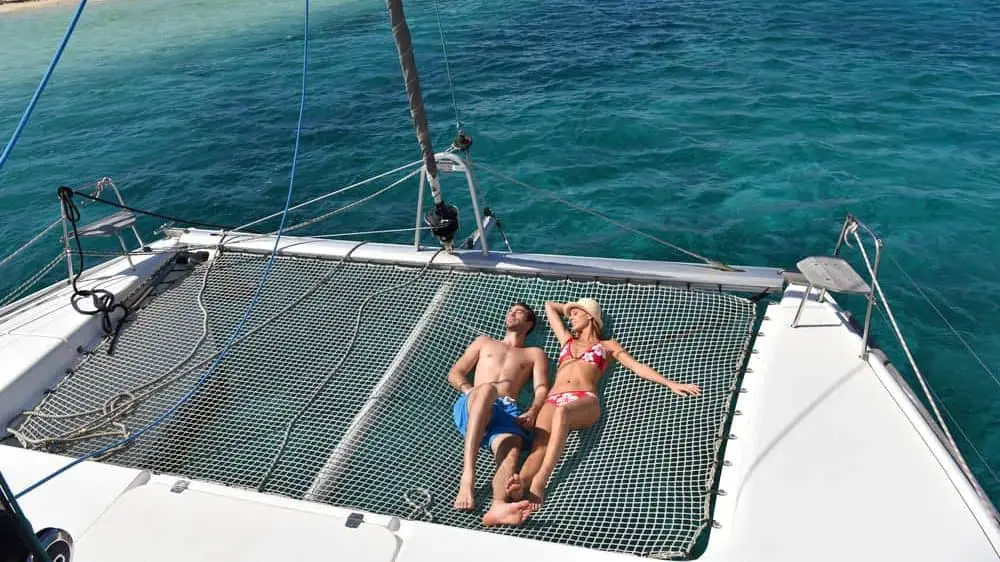
Since catamarans have more space and don’t heel as much, they offer a more comfortable experience. One beautiful aspect of having a big deck is that you can hang out in the trampolines; they are basically two big hammocks, and since hammocks already are great, putting them on a boat makes them awesome.
And since it doesn’t heel, you can also freely move around on the boat without spilling your drink or being at risk of falling overboard. This also means that going inside to cook is a treat since you don’t have to cook while trying not to fall over.
Looks and Other Factors
All in all, catamarans are great, but so are monohulls; there are also many other factors that I haven’t mentioned yet; these are mainly factors of the heart.
Many people feel that it isn’t real sailing if it isn’t done like it was in the good old days, heeling over and all. And to some extent, I can totally agree with that, but on the other hand, enjoying those two trampolines while on a sunny weather cruise down the bay is something I can’t forget.
And also the looks, catamarans look great; I think they look and almost move like those manta rays you can see down in the Bahamas. On the other hand, there is not much cooler than seeing a solid old monohull dig deep into the waves and go almost straight into the wind; what a feeling!
What do you think?
Owner of CatamaranFreedom.com. A minimalist that has lived in a caravan in Sweden, 35ft Monohull in the Bahamas, and right now in his self-built Van. He just started the next adventure, to circumnavigate the world on a Catamaran!
Leave a Reply Cancel reply
Your email address will not be published. Required fields are marked *
Save my name and email in this browser for the next time I comment.
Recent Posts
Must-Have Boat Gear for Catamaran Sailors!
Sailing is probably the most gear-intensive activity I've ever done; there are so many decisions to be made about what gear to buy now, for tomorrow, and what to definitely never buy. The gear on...
6 Best Trailerable Trimarans For Bluewater and Coastal Sailing
Having a boat costs a lot of money, even when you are not using it, marina fees, etc. And once it is in the water most sailors never go very far from their "home marina" and sailing will be somewhat...

Sailboat or Catamaran? Here’s How to Decide

There is nothing as magical and mystical as sailing out onto the open sea. You’re in for a realm of a wonderful adventure, beautiful sights, and escaping into the unknown as you relax under the sun. Whether you’re planning a luxurious trip with your loved ones or an exciting, fast-paced adventure, one thing you need to consider is what type of boat to use.
Two popular boats are the sailboat and the catamaran. So how can you decide which one is right for you and the adventure you’re seeking? In deciding between a sailboat and catamaran, there are several considerations to keep in mind. A catamaran is easier to sail and will provide a more spacious and luxurious experience. The sailboat, on the other hand, is more immersed in the water and provides a more realistic and exciting experience.
It can be challenging knowing which boat is right for you. That is why we are going to run down all the basic information and differences between these two boats. Knowing the major differences between the two will help you make the right choice.
The Difference Between a Sailboat and a Catamaran
To the untrained eye, a sailboat and a catamaran might look fairly similar. Therefore, you might think that the overall ride and experience are also the same. However, sailboats and catamarans are profoundly different and offer completely different rides. That is why it is so important to get the facts on these models before gliding them into the water.
The Major Differences Between the Two
Catamarans have become increasingly more popular due to the fact that they have better overall buoyancy than a sailboat, which is also referred to as a monohull . What does that mean for the riders? Well, buoyancy equates to a smoother and more enjoyable ride , which is ideal for those who are seeking a more relaxed experience.
Catamarans are also known for their ease in maneuverability compared so a sailboat. This, again, is ideal for someone who is looking for a relaxed ride, as it is a lot easier to sail than a typical sailboat. This also makes the catamaran a better choice for a newcomer who isn’t confident in his sailing capabilities.
The double engine of a catamaran makes it easier to dock and is also capable of doing a 360-degree turn if needed. Why is this important? Well, anyone who has ever tried to dock a boat knows that it isn’t the simplest task. You will be glad to know that the catamaran can turn more easily and be docked quicker than a sailboat.
However, don’t let these characteristics sway you from ever wanting to try your hand at a sailboat. Sailboats provide a more realistic feeling, which ultimately equates to a more thrilling ride. Anyone who is looking for an adrenaline rush will find that gliding through the water and hanging off the sails is exactly what the doctor prescribed.
Does that mean that monohulls are all about the thrills and excitement? While that’s the main goal, there is still enough room to sit back and relax in the cabin or get a good tan while sunbathing. There is, though, significantly less room, which doesn’t make for quite a luxurious experience overall.
Boat Design
As we mentioned earlier, it can be hard to tell right off the bat what the major differences between a sailboat and a catamaran are. It may be slightly obvious that the catamaran is a bit bigger, but the actual construction is incredibly different.
Sailboats are designed with a single hull as well as a single engine. The one engine will typically combine with a bow thruster, which is located at the front of the boat. If you’re not sure what a bow thruster is, it is essentially this:
- A bow thruster is another small, electric engine located at the front of the boat. The main purpose of the bow thruster is to enable the yacht to move sideways simply by pressing a button. This makes it easier for the skipper (or person who is driving the boat) to maneuver through tighter areas, thus making the boat more secure.
On the other hand, a catamaran is designed with two hulls and two engines. The major benefit of having two engines onboard is that if one engine fails, then the other engine can keep the boat moving and help make its way back to the docking station. This provides more ease of mind for the skipper as well as the riders, making for a more relaxed and confident ride.
Aside from giving the riders peace of mind, double engines also work to ensure that there is greater maneuverability in the water. With two engines, the skipper is able to rotate the boat in an incredible 360-degree motion. With that type of capability, the catamaran is able to maneuver through even tighter spaces, which makes docking a breeze.
Space Differences
When it comes to overall spaciousness, the catamaran beats the competition. In fact, this is one of the major reasons why people choose to go with the catamaran: for space it provides.
This means that even though the catamaran and the sailboat might appear to be the same size, the catamaran actually has a larger cabin and salon area, with more room for sunbathing and other outdoor activities.
A lot of catamarans will also offer a large-sized net area located on the bow of the boat. This net area is available for the riders to lay back and relax, which is ultimately an incredibly unique experience you won’t find on a sailboat. The net is ideal for soaking up the sun when anchored on your favorite, most beautiful bay.
A large cockpit area is another benefit of choosing a catamaran. This is because the massive amounts of space ensure you can do just about anything in the cockpit, like hosting a large family dinner or even setting up a party space to get wild for your birthday.
For anyone who is looking for a relaxed, comfortable, and spacious experience out on the sea, the catamaran will be the best choice. On the other hand, those who want more thrills and aren’t overly concerned about room for dinners and parties should consider the exciting monohull sailboat.
Comfort and Stability
Another great benefit of choosing a catamaran is the comfort and stability they provide. Think about it: since the Catamaran is designed with two parallel hulls rather than just one, there is far more stability all around the boat. This means you can take a walk around the yacht, make your favorite meals for the family, or shake up some drinks in the cabin without worrying about anything tipping over (including yourself).
One of the other features you will only find on (most) catamarans is the inclusion of a separate flybridge. What does this unique piece of equipment do? Well, it provides the riders with a shaded area where they can take a break from the heat of the sun while enjoying a drink and d’Oeuvres.
The flybridge also makes sure that there is privacy on the boat, which is something you won’t find in a smaller, less roomy, and comfortable sailboat.
Sailing Experience
The main reason why multihulls, otherwise known as catamarans, are so extensively popular is due to the fact that they offer such a comfortable and luxurious experience . This means that the riders are reaching maximum pleasure while vacationing out at sea. However, there doesn’t mean that there are not any downsides to this model.
The major downside to catamarans is that they can sometimes pound and slap in the water. To put it simply, this is an incredibly annoying sound that can almost sound like the boat is being beaten and battered by the ocean, ultimately breaking into pieces. While this is certainly not the case, it sure sounds like it; and that is something nobody wants to hear.
So why does the catamaran have this sensation while monohull sailboats do not? The slapping and pounding noise coming from the boat is due to the fact that the low bridge clearance gets hit by the water when the sea is bumpy, and the boat is heading upwind.
Sailboats are able to cut through bumpy seas with ease and can handle wins extremely well. This is due to the fact that they are more immersed in the water. Catamarans, on the other hand, glide over the water rather than sailing through it. This is why they tend to be more smooth overall, but can’t handle winds or lumpy seas as well.
Another thing to keep in mind is that catamarans have less of a heel while sailing. In fact, a catamaran will rarely ever heel more than 5 to 10 degrees before you need to reef the boat. What does this mean for the riders? A smoother sail.
A sailboat, on the other hand, can heel over 20 degrees. The riders will need to brace themselves in the cockpit, so they don’t go falling over to the side. This is especially true when you are outside on a sailboat, as you don’t want to fall completely off the boat when it begins to heel dramatically.
Which One is Faster?
You might think that because the monohull sailboat is less spacious and cuts through the water that it will be faster. Well, thank again. Catamarans are ultimately faster than their monohull sailboat counterparts. But why?
The answer is simple: The two hulls are less immersed in the water. This is beneficial for the simple fact that the hulls won’t have any chance of being ‘dragged’ in the sea. Together, the double hulls stabilize the boat and won’t be challenged by waters, even when they might are choppy.
Aside from being faster overall, the quickness seems to be even more noticeable when the catamaran is sailing downwind. This, again, is because the catamaran’s hulls are not immersed in the water and therefore have no pull when it comes to the water. Gliding downwind creates an even faster movement.
Does that mean that they are slower when cruising windward? Not at all! Although it won’t be as fast as going downwind, the catamaran still beats the sailboat in terms of speed.
Price Differences
When you narrow down the differences by pricing, the differences are subtle. In fact, if there is plenty of supply of both boats, then you can expect the price of a sailboat to be around the same price as a catamaran. But which one is generally more expensive?
Well, since the catamaran has two hulls rather than a single hull, they are naturally going to be sold at a higher cost. Even though the price may not be overly significant, catamarans will generally be pricier than a sailboat.
Aside from the cost of the boat, you must also consider how much it will cost to dock it. Since the catamaran requires more space than a sailboat, it will be more expensive to dock it in a marina. The prices may be even steeper when you’re trying to dock your boat during peak seasons when space is limited.
Overall Emotion Onboard
This might not seem like something to consider when describing the difference between a catamaran and a sailboat, but each comes with their own emotions. Everyone who decides to set sail is looking for some type of experience, and these boats have two very distinct different emotions attached to them.
A catamaran is going to give you the utmost pleasure and relaxation. If you’re looking to release some negative thoughts and emotions and regroup, then this is going to be the best boat.
On the other hand, riding in a sailboat will deliver an experience like you will never have again. There is something about whipping through the sea, feeling the wind blowing against your face, and hanging onto the heel that will give you a rush and exciting experience you will remember for years to come.
Is One Safer than the Other?
This is a loaded question, as someone who has plenty of experience sailing and riding on boats won’t have trouble with either type of boat. However, it is fair to say that catamarans are generally safer than sailboats. But why?
- Less heel means less chances of getting hurt or falling off. With little to no chance of the boat heeling, you can ride without thinking about falling over and hurting yourself or ending up completely hauled off the yacht.
- Double hulls provide stability. This makes it easy for the riders to walk around the boat, lay down and sunbathe, or enjoy a meal in the cockpit without anything negative happening.
- Level sailing means less chances of tipping over. Sailboats can sometimes tip over in harsh weather conditions. The good thing about a catamaran is the double hulls, and level sailing capabilities keep everyone onboard and keeps the yacht from tipping over.
- Catamarans will float no matter what. In the extremely rare instance where a catamaran flips over or something has broken the boat and you fear sinking, put your worries to rest as catamarans will always keep afloat whether they are upright or not. This is because catamarans have excessive buoyancy.
Choosing the Right Boat
Now that you know all of the major differences between a catamaran and a sailboat, the decision should be exponentially easier. Just keep these few things in mind when picking the boat that is right for you:
- Are you looking for comfort and luxury, or thrills and experience? Remember that the catamaran is all about luxury and comfort. It’s great for families, especially those with kids, because of the stability. On the other hand, those seeking a pulse-racing experience should acquire a sailboat.
- How much room do you need? If it is just you and your buddy looking for a great time, then you might consider a sailboat. Someone looking for a fun family outing or even planning to throw a party of some sort should look into the spacious, more comfortable, and roomy catamaran.
- How good are your sailing abilities? Catamarans are great for beginners as they are far easier to sail and maneuver through the water. If you’re worried about your skill level, catamaran might be the best choice.
- How much money are you looking to spend? While you don’t have to worry too much about pricing, you should know that catamarans will be a bit more expensive due to double hulls and space. This is also true while docking, as catamarans, will require more room.
Choosing between a catamaran and sailboat can be tricky if you don’t know all of the facts. The best things to keep in mind is that a catamaran is the yacht that will provide more overall luxury and space, while the sailboat will ensure bone-chilling, heart-racing thrills that will give you a story to talk about for the rest of your life.
I am the owner of sailoradvice. I live in Birmingham, UK and love to sail with my wife and three boys throughout the year.
Recent Posts
How To Sail From The Great Lakes To The Ocean
It’s a feat in and of itself to sail to the Great Lakes. Now you want to take it one step further and reach the ocean, notably, the Atlantic Ocean. How do you chart a sailing course to get to the...
Can You Sail from the Great Lakes to the Gulf of Mexico by Boat? 
You have years of boating experience and consider yourself quite an accomplished sailor. Lately, you’ve been interested in challenging yourself and traveling greater distances than ever before. If...
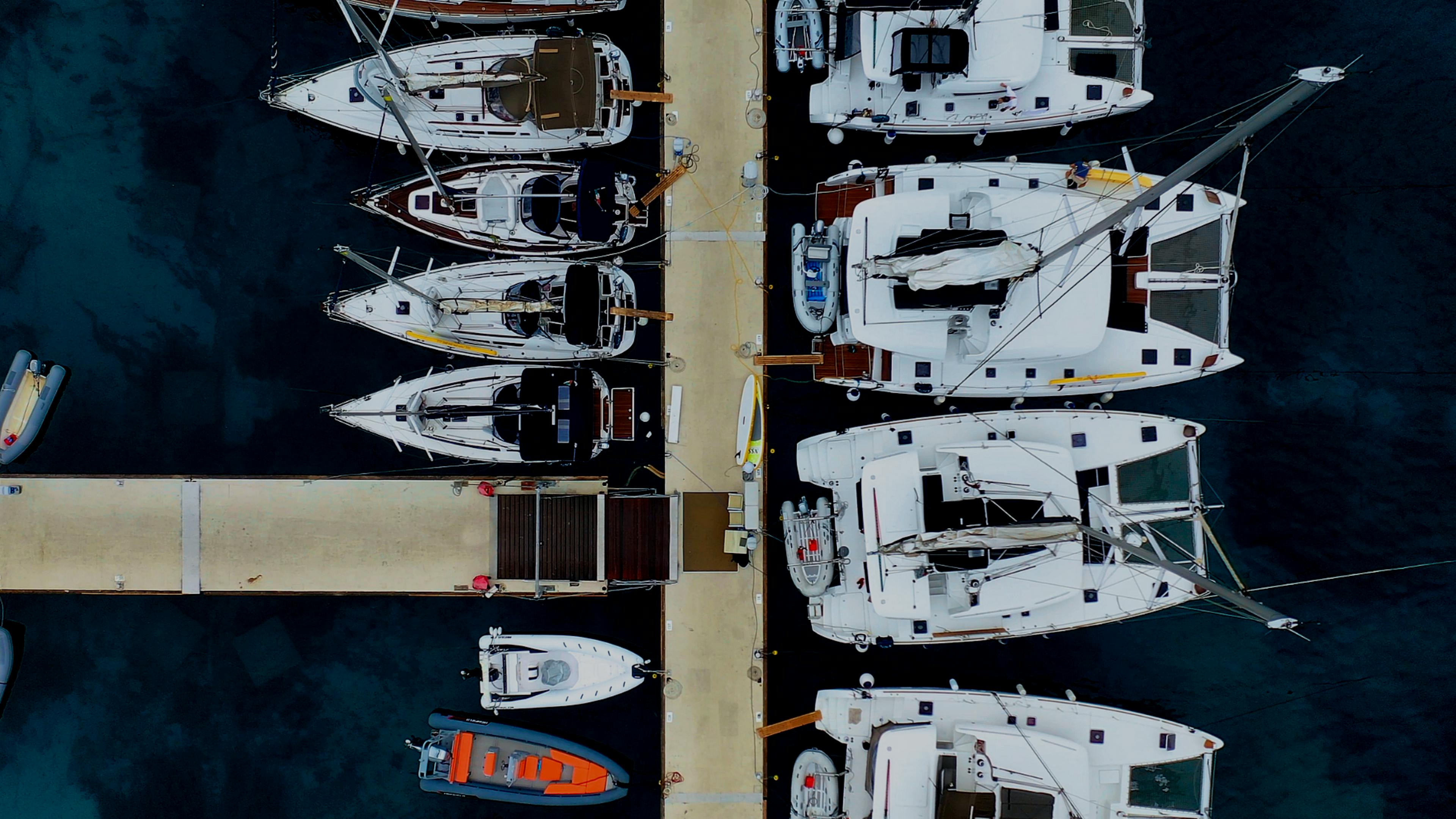
- What's the difference between a catamaran and a sailboat?
A comprehensive guide to help you choose the best boat for your next holiday
- Boat Models
Get ready to embark on a sea-faring adventure with us as we unveil the unique charms of catamarans and sailboats—the rockstars of luxury on the water. While we usually dive deep into the world of sailboats, we can't resist sharing the laid-back vibes and the comfort you'll find inside a catamaran.
By zooming in on the differences, we're handing you the ultimate tool to pick out the perfect yacht for your holiday. Ready to set sail? Let's navigate the cozy corners and sail smoothly through the captivating world of catamarans and sailboats. Your ideal yacht escapade is within reach, and understanding these nuances is the compass that will steer you toward the perfect maritime retreat. Cheers to smooth sailing!
Yacht Charter: Book your holiday with Sailogy!
➡️ sailboat rental, ➡️ catamaran rental, what is the difference between a catamaran and a sailboat sailogy comparison, can a catamaran sail rough seas, what is the difference between a sailing catamaran and a power catamaran, are catamarans faster than sailboats, are catamarans harder to sail.

Sailboat vs Catamaran Comparison
1. stability:.
- Sailboat: Embraces the classic elegance of a single hull, providing a responsive and traditional sailing experience. The tilting motion, counterbalanced by the daggerboard, adds a dynamic element to the journey.
- Catamaran: Boasts unparalleled stability with its two hulls, virtually eliminating the pronounced tilting effect. The absence of deep keels and ballasts enhances agility and lightness, offering a smoother ride. Ideal for those who are prone to experiencing a bit of seasickness!
- Catamaran: Defines spaciousness, providing individual cabins with dedicated bathrooms. The square-shaped dinette mirrors domestic proportions, and the substantial, well-equipped cockpit encourages social gatherings.
- Sailboat: Offers a cozy and intimate setting, utilizing space efficiently. While cabins may be more compact, the sailboat's design fosters a close-knit atmosphere among passengers.
- Catamaran: Impresses with a wide footprint, enhancing onboard living space and comfort. The challenge lies in marina space during peak seasons, offset by the freedom to enjoy extended periods aboard without the need for frequent shore visits.
- Sailboat: Navigates marinas with ease due to its narrower profile. While confined space might limit interior room, the sailboat's ability to find berths becomes advantageous during bustling harbor seasons. It's worth noting that this characteristic can vary depending on the model; for instance, new models such as the Bavaria C38 or the Dufour 44 (premiered in Düsseldorf and soon available) feature generous beams, providing more space, especially in the main front bedroom, and creating a general feeling of larger spaces, even on the deck.
4. All on the Same Level:
- Catamaran: Integrates the dinette and cockpit seamlessly, creating a harmonious, unified space with a transparent sliding wall. Visual continuity fosters a connected and inclusive experience among guests.
- Sailboat: Embraces a more compartmentalized layout, allowing for distinct areas that cater to different activities. This provides passengers with varied environments throughout the vessel.
5. Manoeuvrability:
- Catamaran: Exhibits impressive maneuverability, thanks to two engines that facilitate precise control in tight spaces. The ability to turn within its own axis is particularly advantageous in crowded harbors.
- Sailboat: Requires careful and deliberate maneuvering in harbors due to its single engine. While agility might be reduced, the sailboat's sailing capabilities shine when navigating open waters.
6. Speed and Sailing:
- Catamaran: Hydrodynamically efficient hulls offer superior speed, especially in upwind sailing conditions. The catamaran excels in providing a swift and enjoyable journey, minimizing the impact of adverse weather.
- Sailboat: Demonstrates versatility in sailing conditions, adapting well to upwind challenges. While not as inherently fast as a catamaran, the sailboat's overall speed ensures an engaging sailing experience.
7. Comfort on Board:
- Catamaran: Appeals to first-time sailors seeking a home-like experience. Offers disengaged and domestically oriented spaces, ensuring privacy between hulls—a valuable feature for those with varying daily routines or sailing with a skipper or children.
- Sailboat: Fosters a more communal atmosphere, ideal for passengers who enjoy close interaction. The sailboat's compact layout promotes shared experiences among travelers.
8. Autonomy:
- Catamaran: Slightly compromised autonomy due to weight sensitivity. Limited fuel independence and water reserves necessitate more thoughtful planning. The presence of two engines enhances maneuverability, allowing for precise navigation.
- Sailboat: Excels in fuel autonomy, providing extended sailing periods without the need for frequent refueling. A single-engine simplifies maintenance and promotes straightforward, self-sufficient voyages.
9. Organisation of Space:
- Catamaran: Typically designed with a standardized layout, catamarans for charter often feature two cabins in each hull, strategically positioned at the extreme bow and stern. This layout, with two bathrooms centrally located, offers a consistent and practical accommodation setup. Innovative models feature an exterior galley integrated into the cockpit, providing a unique blend of space and functionality.
- Sailboat: Boasting a more versatile structure, sailboats come in various layouts to cater to diverse preferences. Modern designs challenge traditional constraints with generous beams. This not only enhances interior space, especially in the main front bedroom but also creates a broader and more open atmosphere on the deck. The flexibility in cabin arrangements allows for a personalized and comfortable sailing experience, accommodating different preferences and needs. Ultimately, the organization of space on a sailboat is influenced by the specific model chosen, allowing for a tailored approach to onboard living.

Catamarans excel in rough seas, thanks to their twin-hull design providing enhanced stability and reduced heeling compared to monohull sailboats. The unique architecture allows for increased speed and maneuverability, making them efficient in navigating challenging conditions.
Key to their rough-sea capabilities is the bridge deck —the space between the hulls—featuring ample clearance in well-designed catamarans. This minimizes slamming, enhances seaworthiness by reducing structural stress, and ensures a smoother ride in turbulent sea states.
While catamarans can capsize in extreme situations, proper design, operation, and the skill of an experienced captain contribute to their overall capability in handling a variety of sea conditions, ensuring a secure and enjoyable sailing experience, even in rough seas.
A sailing catamaran and a power catamaran differ primarily in propulsion . A sailing catamaran relies on sails, offering a traditional experience with stability and efficiency. In contrast, a power catamaran uses engines, emphasizing speed and ease of handling. Power catamarans are chosen for faster cruising and covering more miles.
Catamarans are often considered faster than monohull sailboats due to their hydrodynamic design . With two hulls providing stability, reduced drag, and a wider beam for efficient sailing angles, catamarans excel in speed. However, sailboats showcase versatility, excelling in certain conditions such as upwind sailing. Overall speed comparison depends on various factors, including design and wind conditions.
Sailing a catamaran is often seen as less challenging for beginners due to inherent stability and reduced heeling. The dual-hull design provides balance, making catamarans forgiving in terms of capsizing. While novices appreciate stability, adjustments are needed for maneuvering and handling increased windage. Proficiency comes with practice, and experienced sailors may find catamarans offer a refreshing change in sailing dynamics.

Discover our favorite yachts
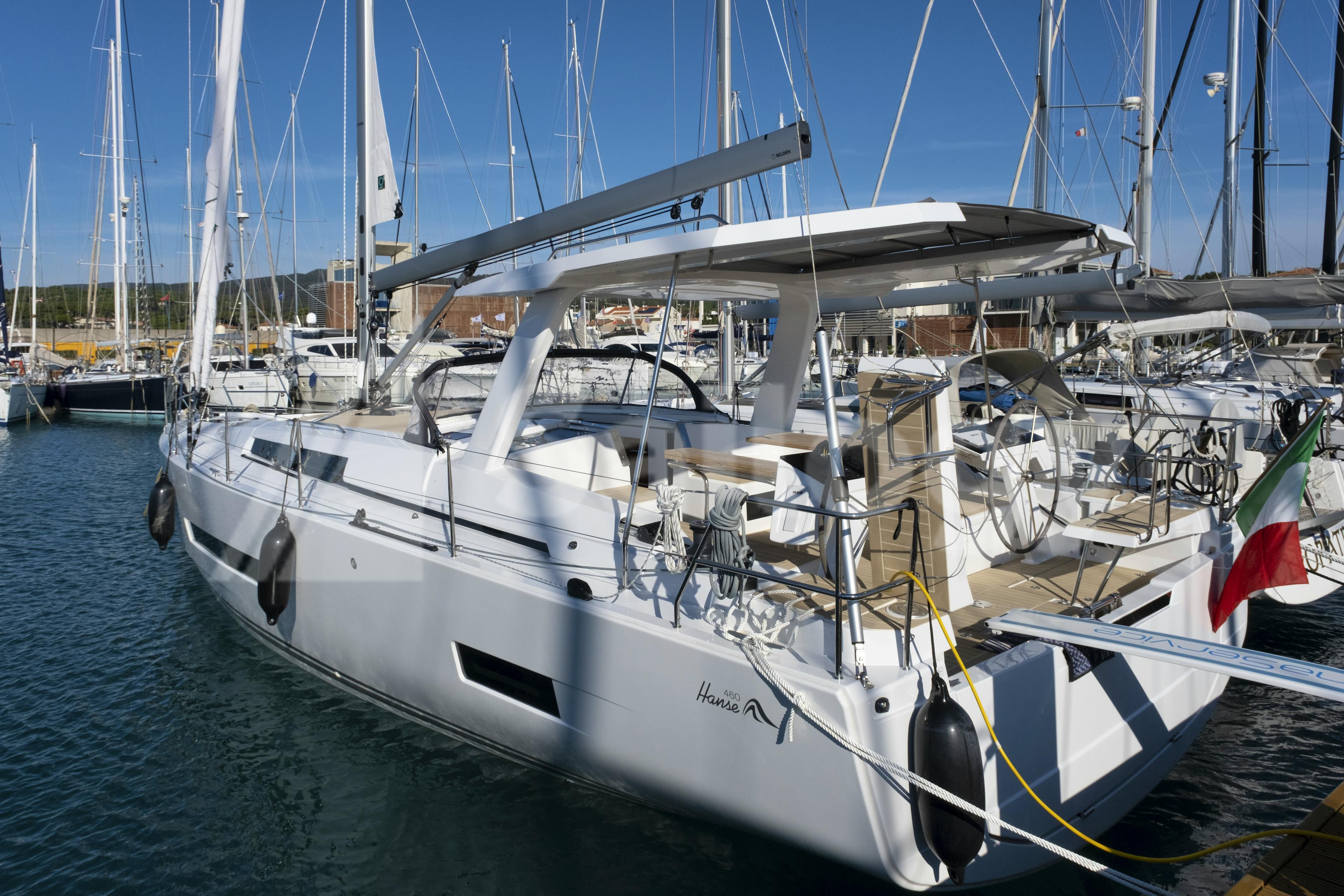
- Sailing boat
Castiglioncello, Tuscany
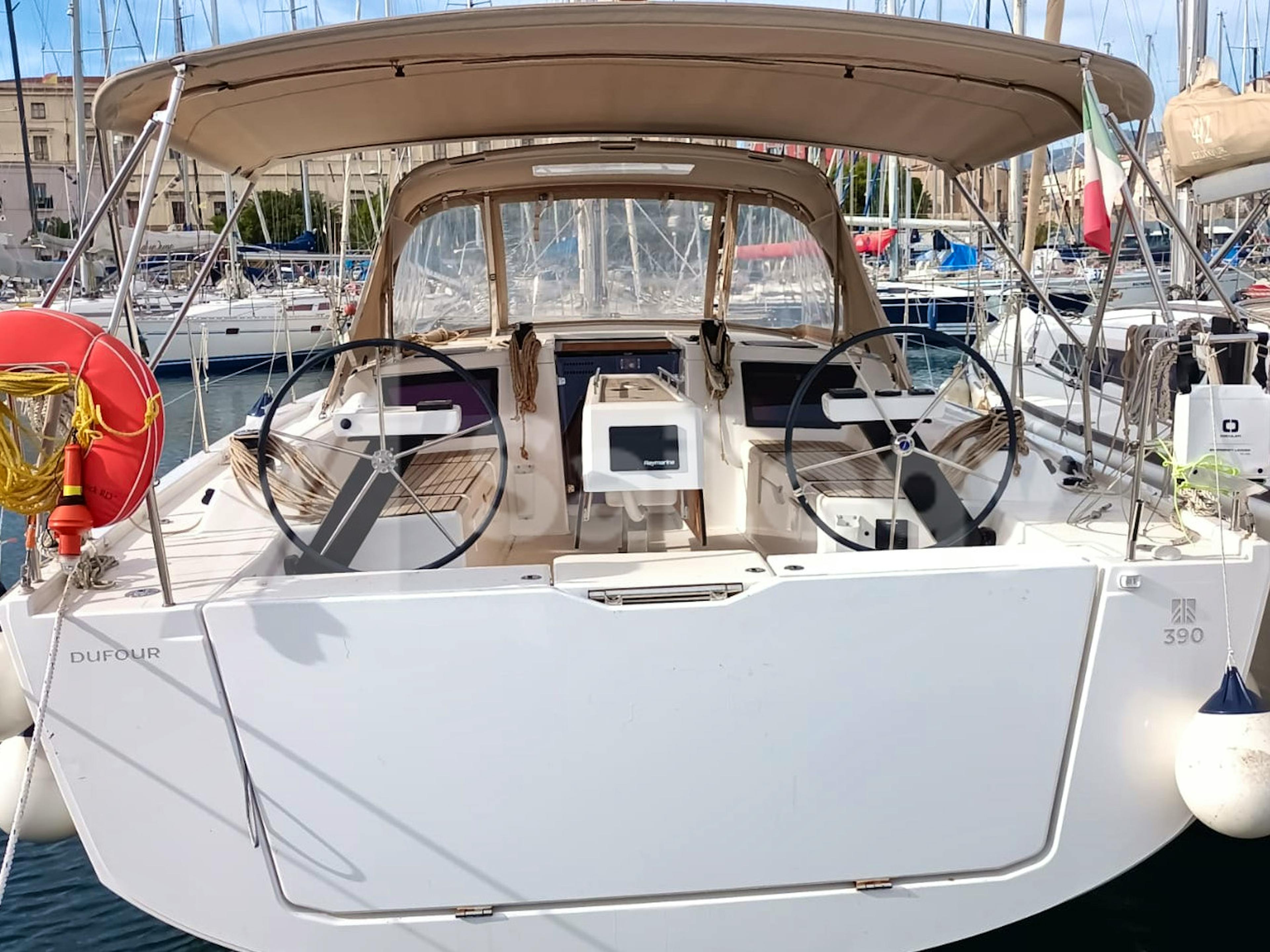
Dufour 390 Grand Large
Palermo, sicily.
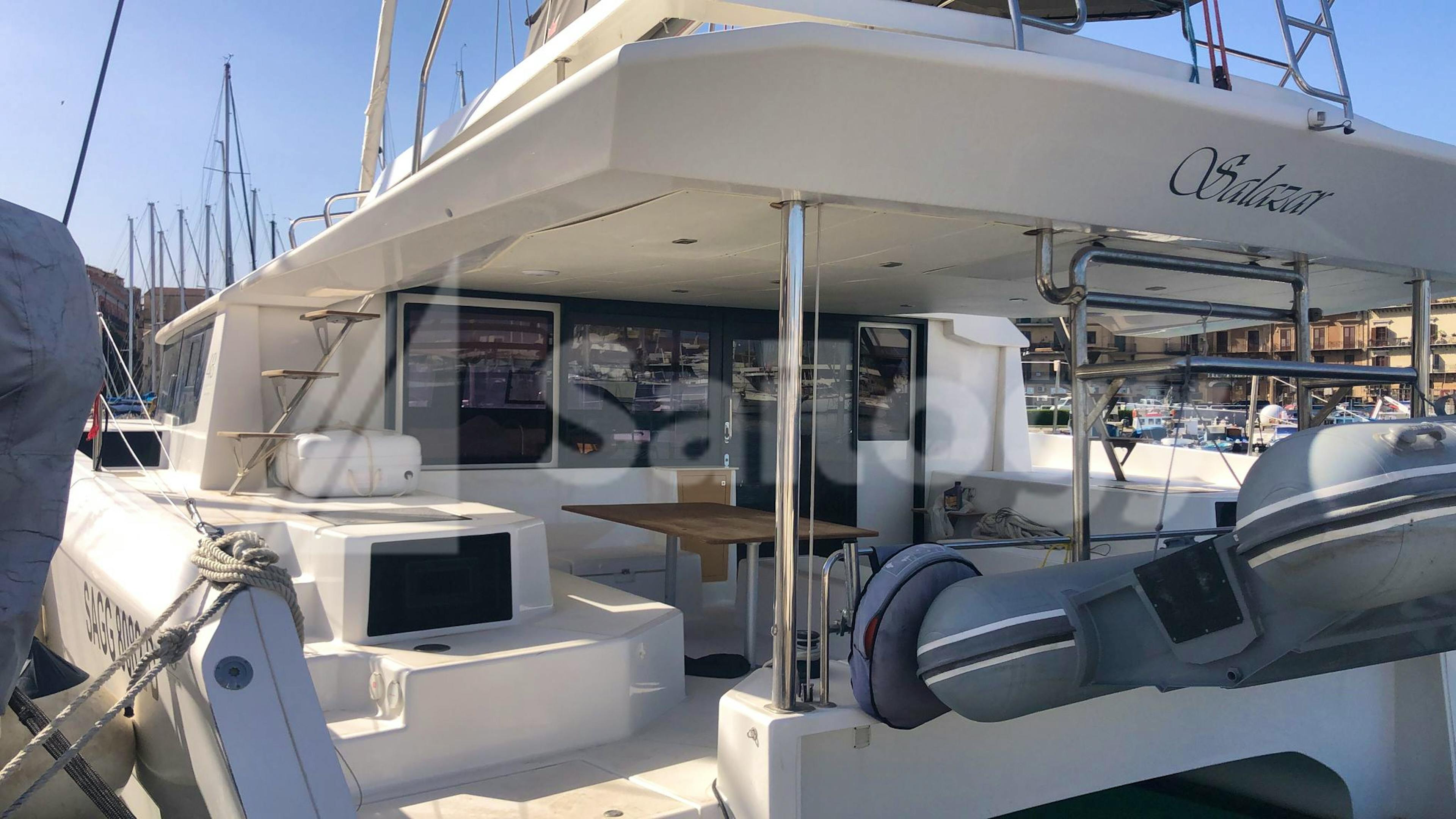
Portorosa, Aeolian Islands
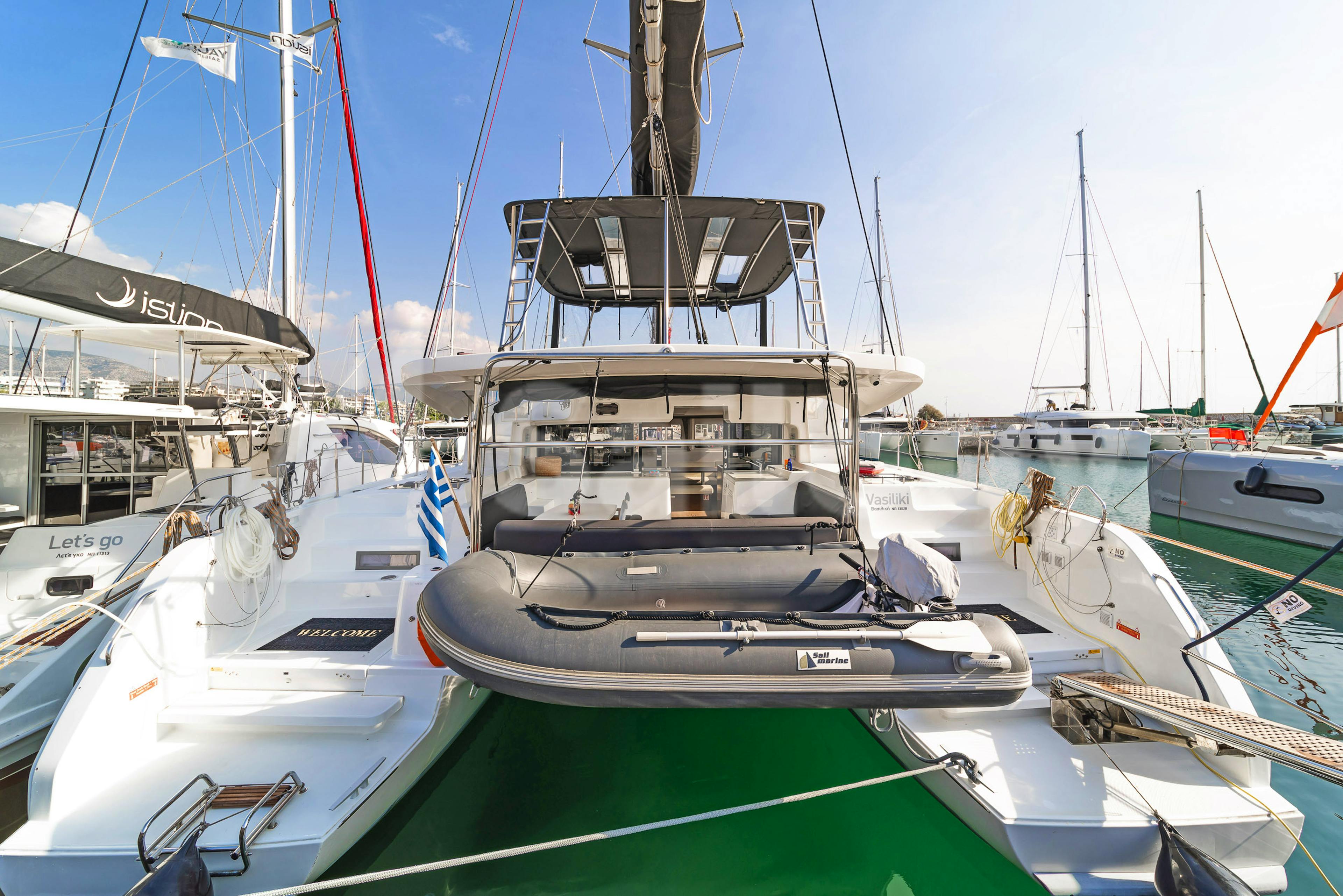
Kalamaki, Athens
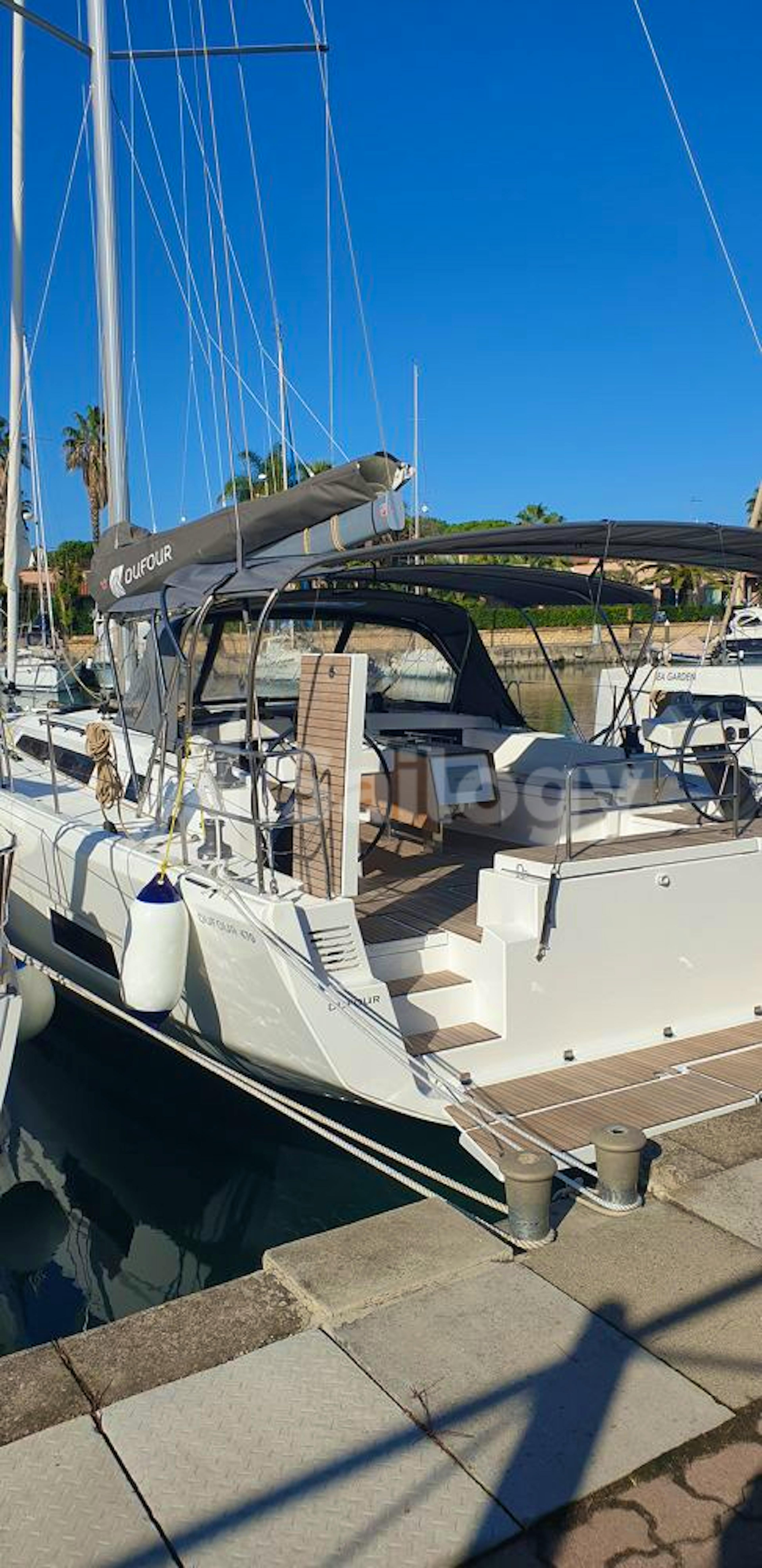
Dufour 430 Grand Large
Kastela, dalmatia.
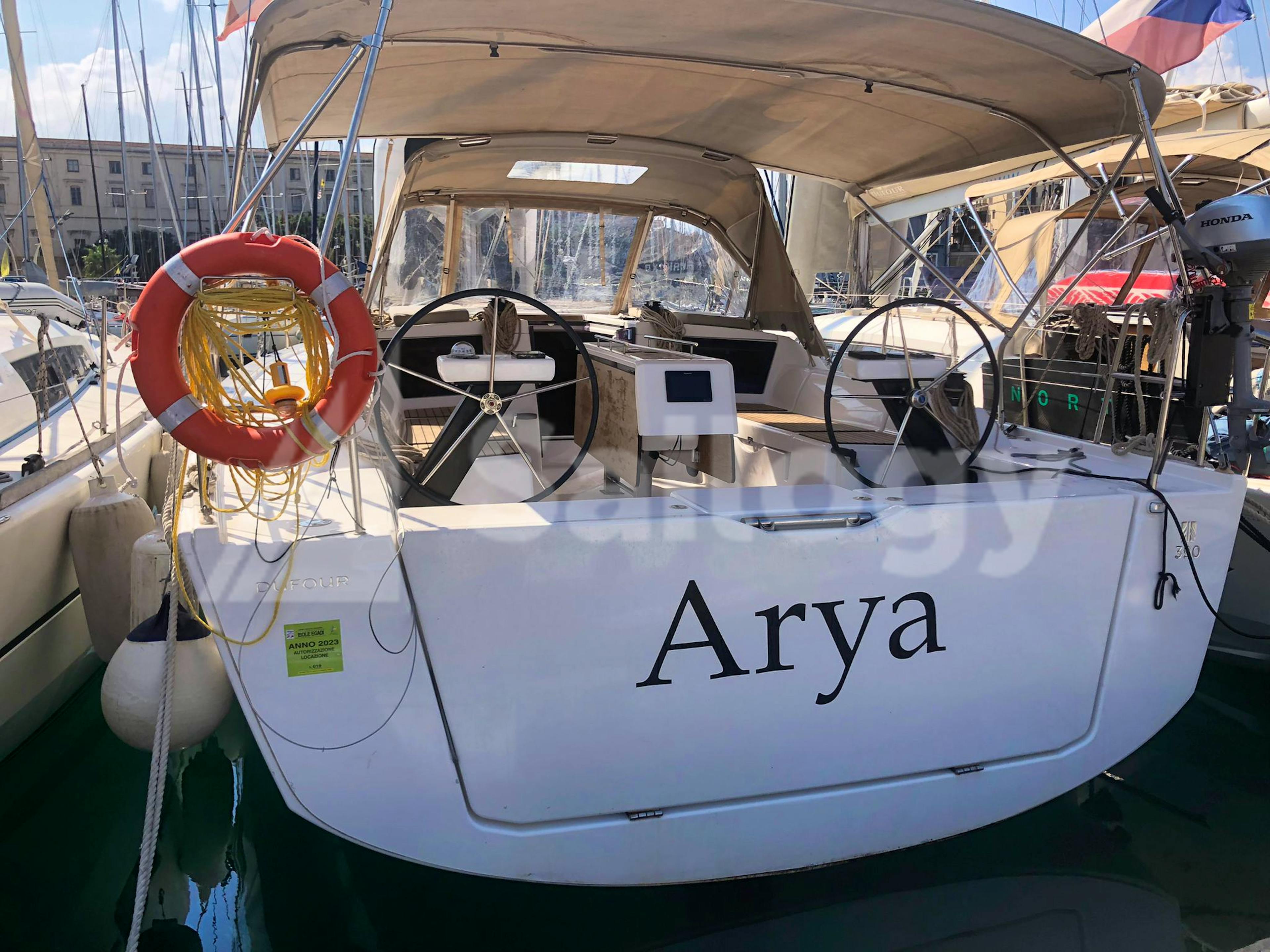
Jeanneau Sun Odyssey 410
Kos, dodecanese, other articles.
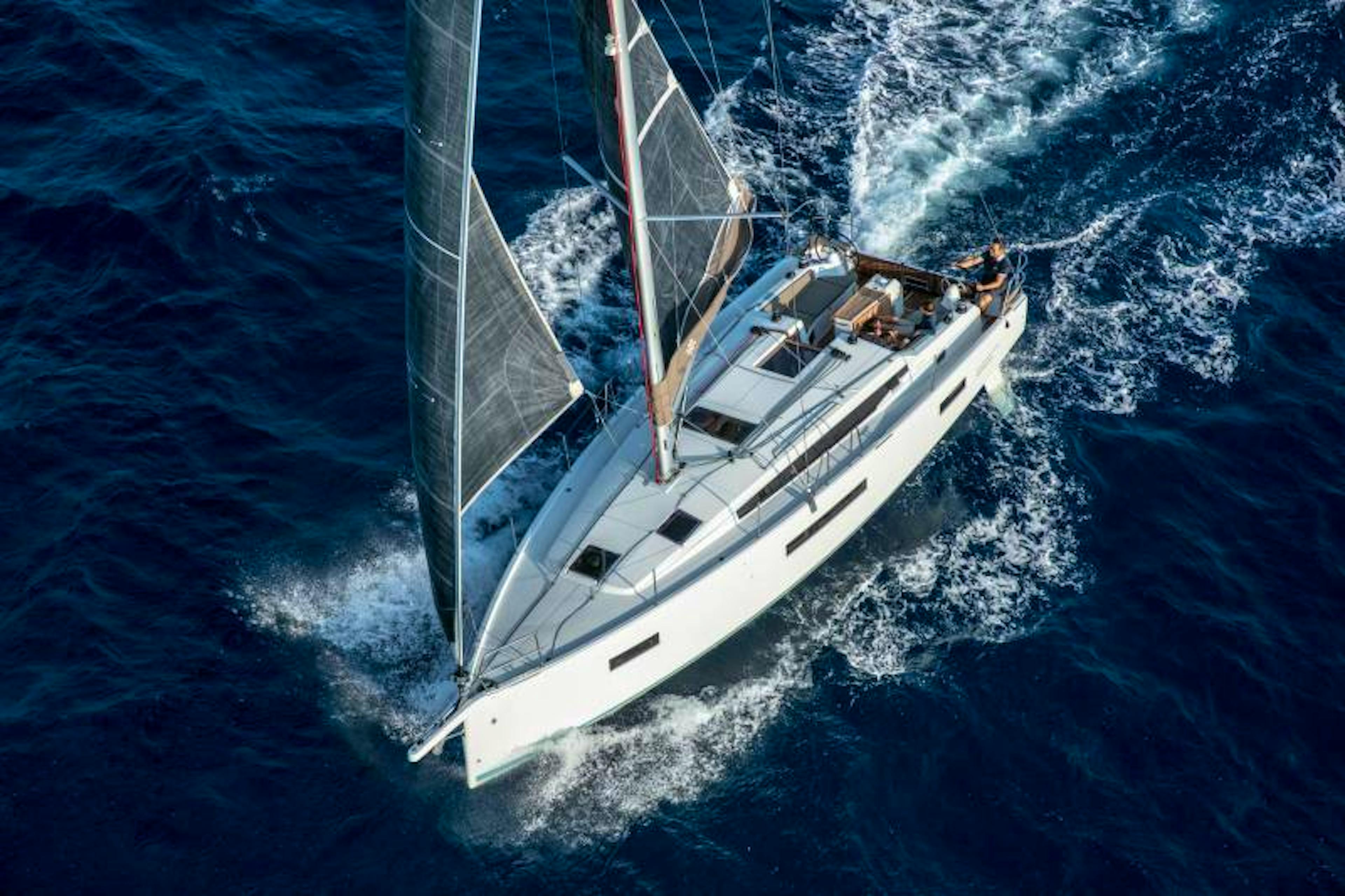
Reviews: Sun Odyssey 410
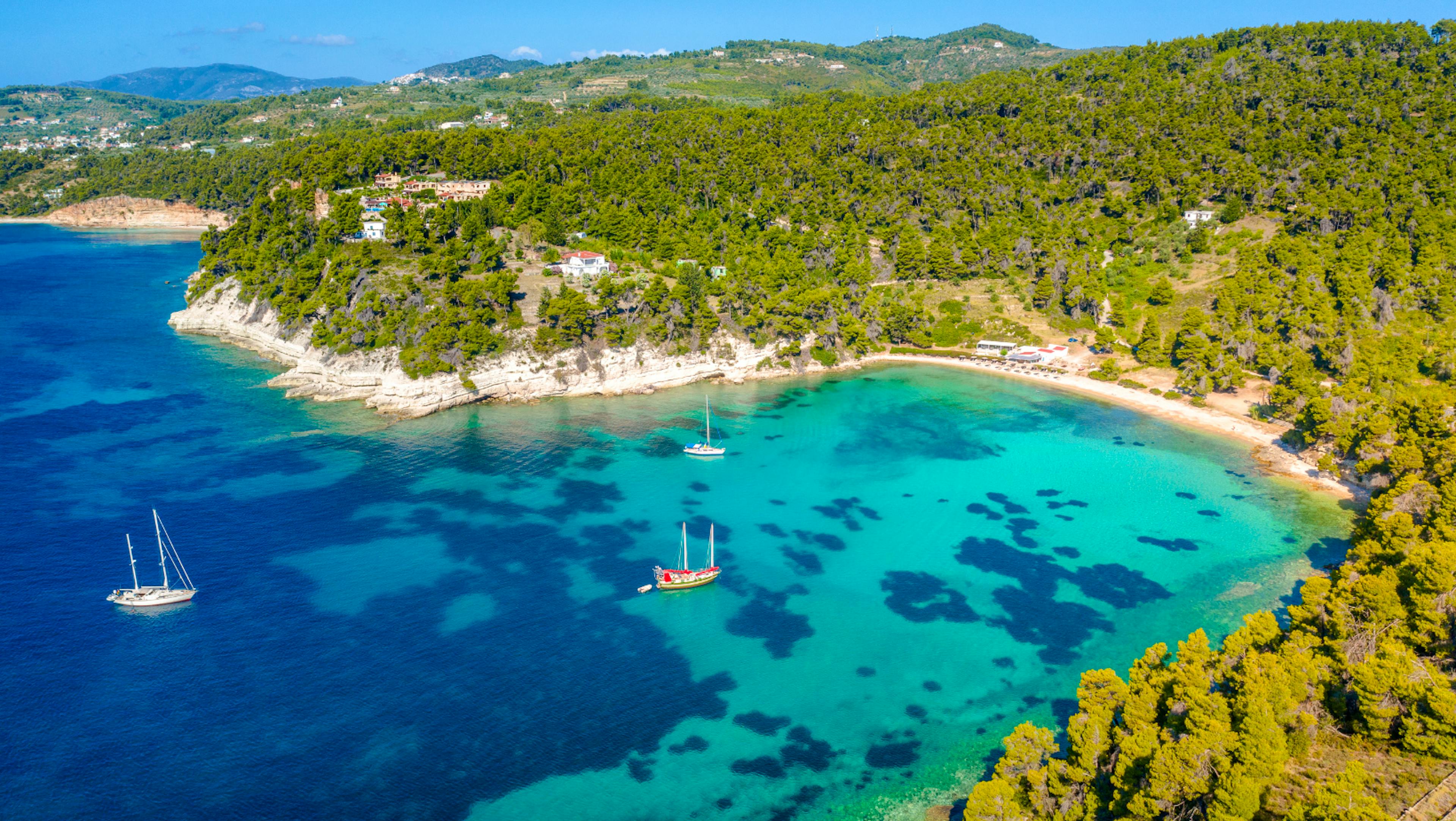
Segeln in den Sporaden: Ein 7 Tage Törn
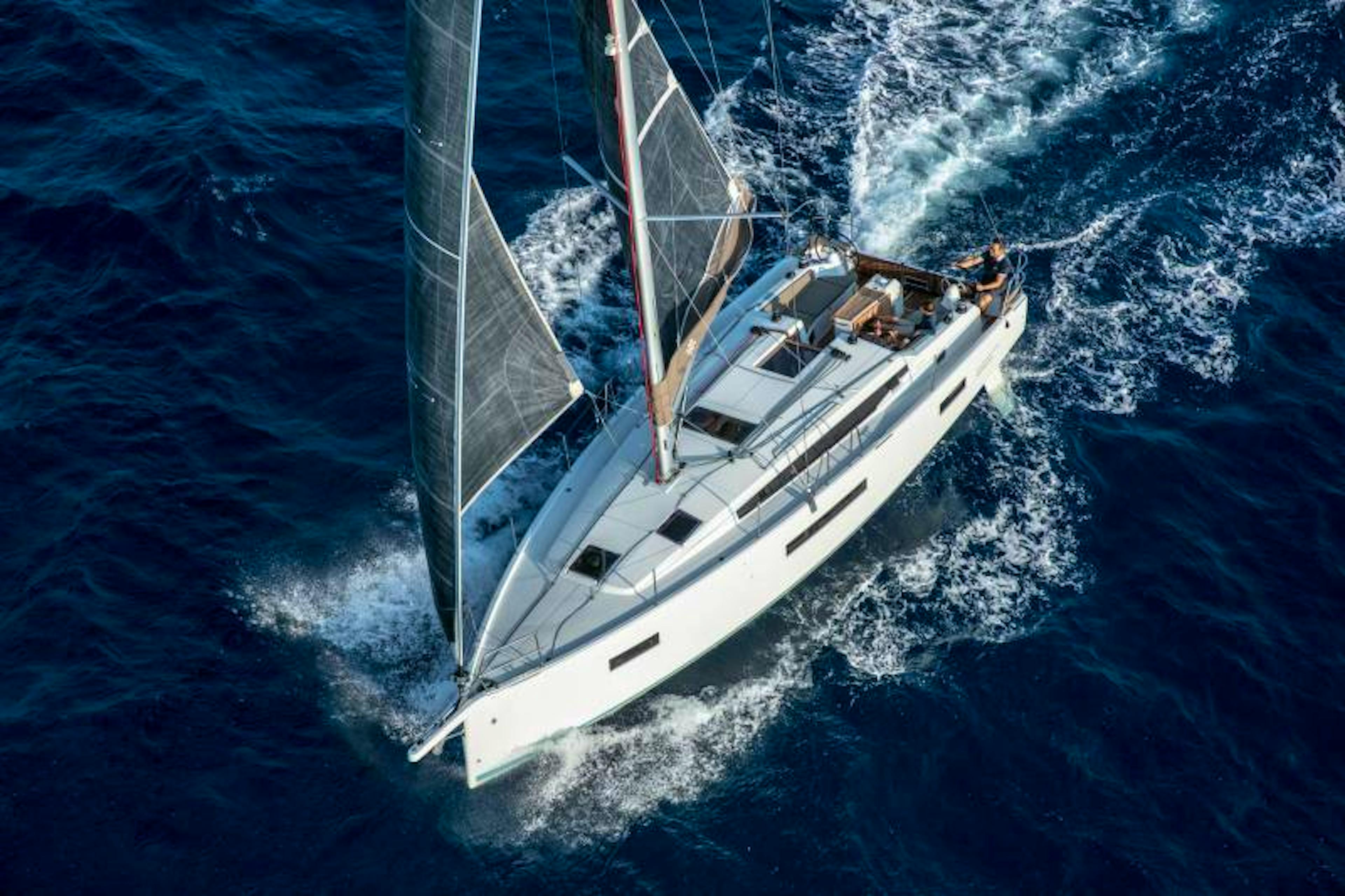
Sailogy Reviews: The Enhanced Jeanneau Sun Odyssey 410
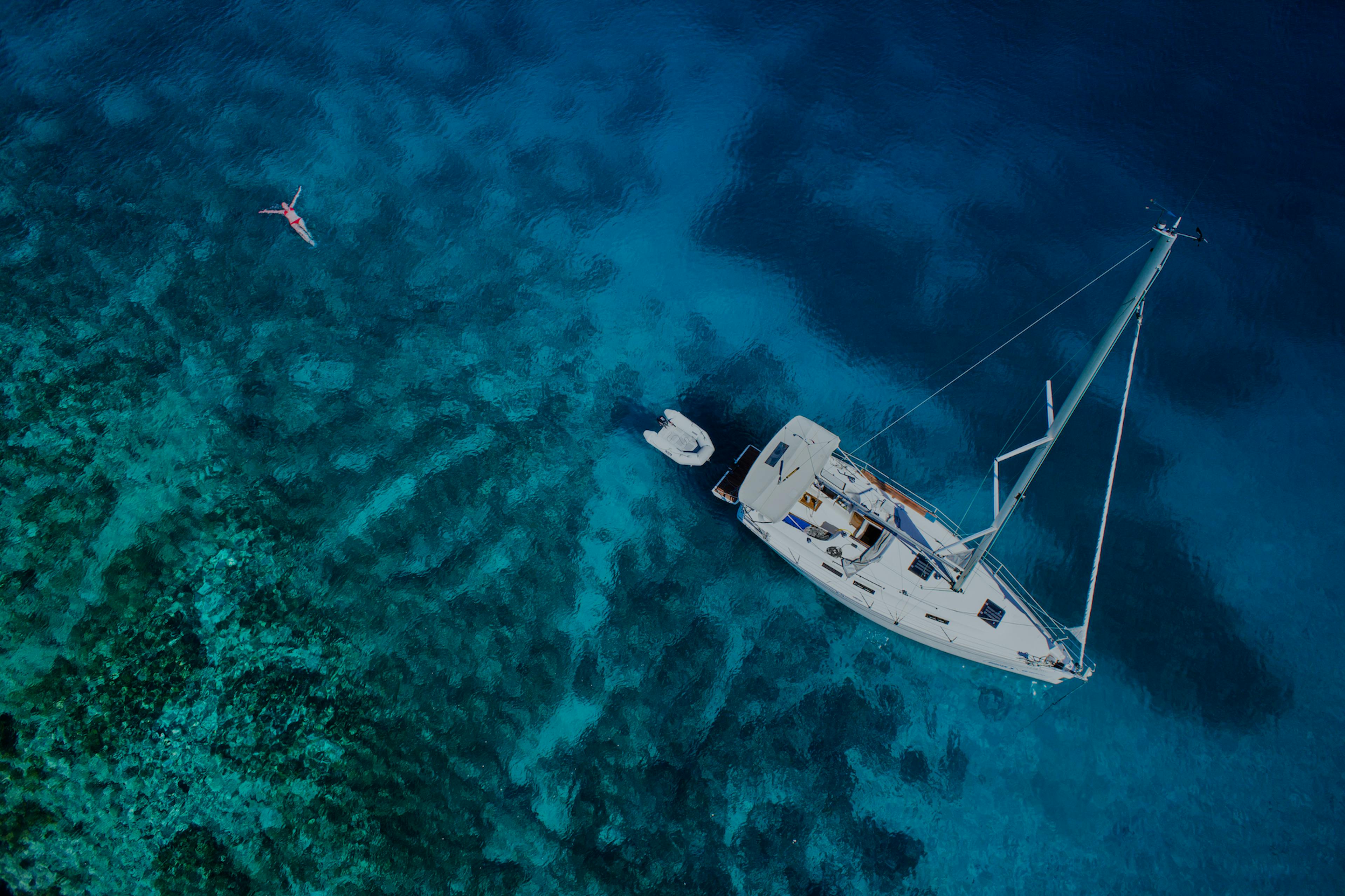
Stay in touch
New sailing magazine out now.
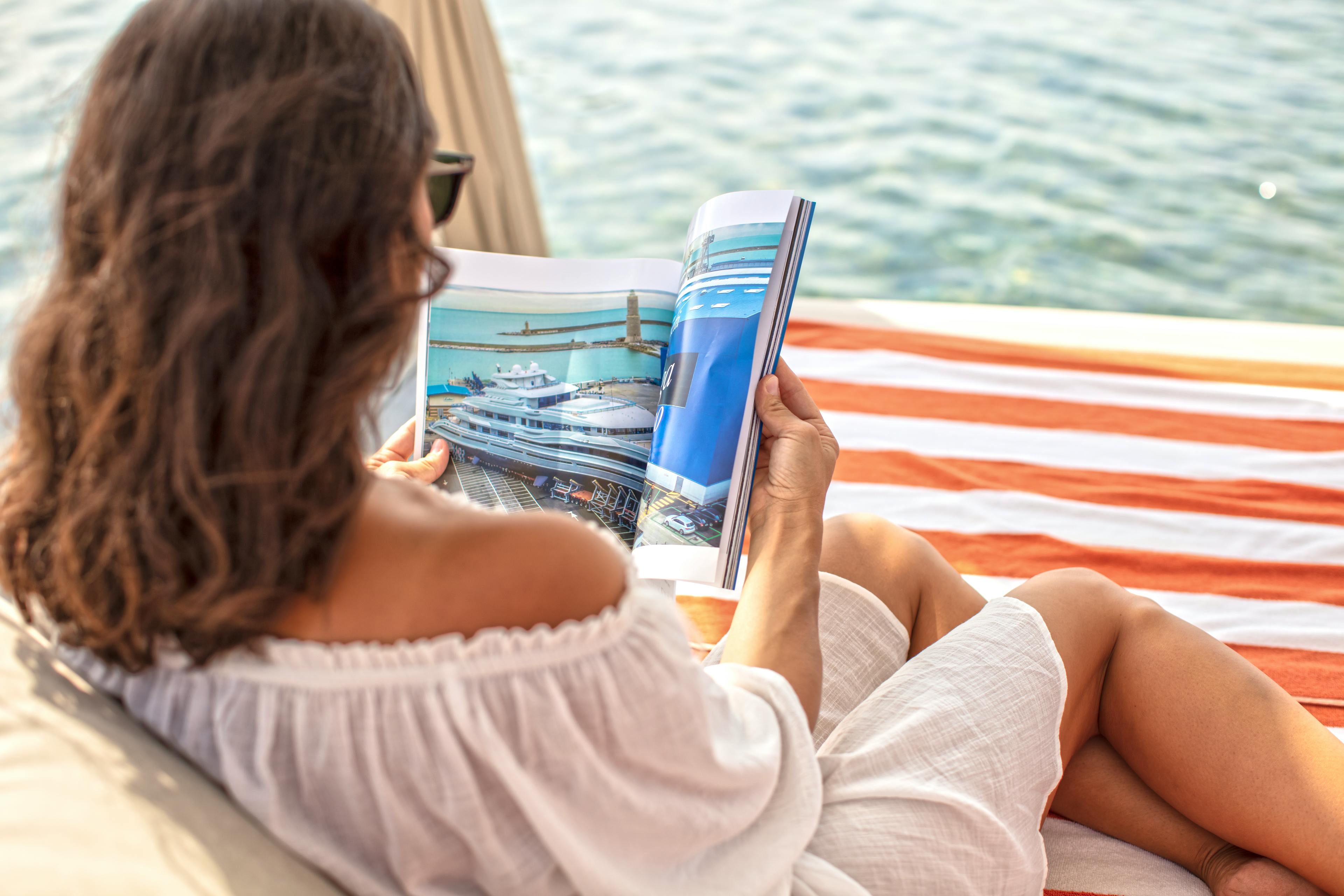
- English (UK)
- English (AU)
- English (US)
- Lietuviškai
- Slovenščina
Travel Itineraries
Sailing destinations.
- Tips from us
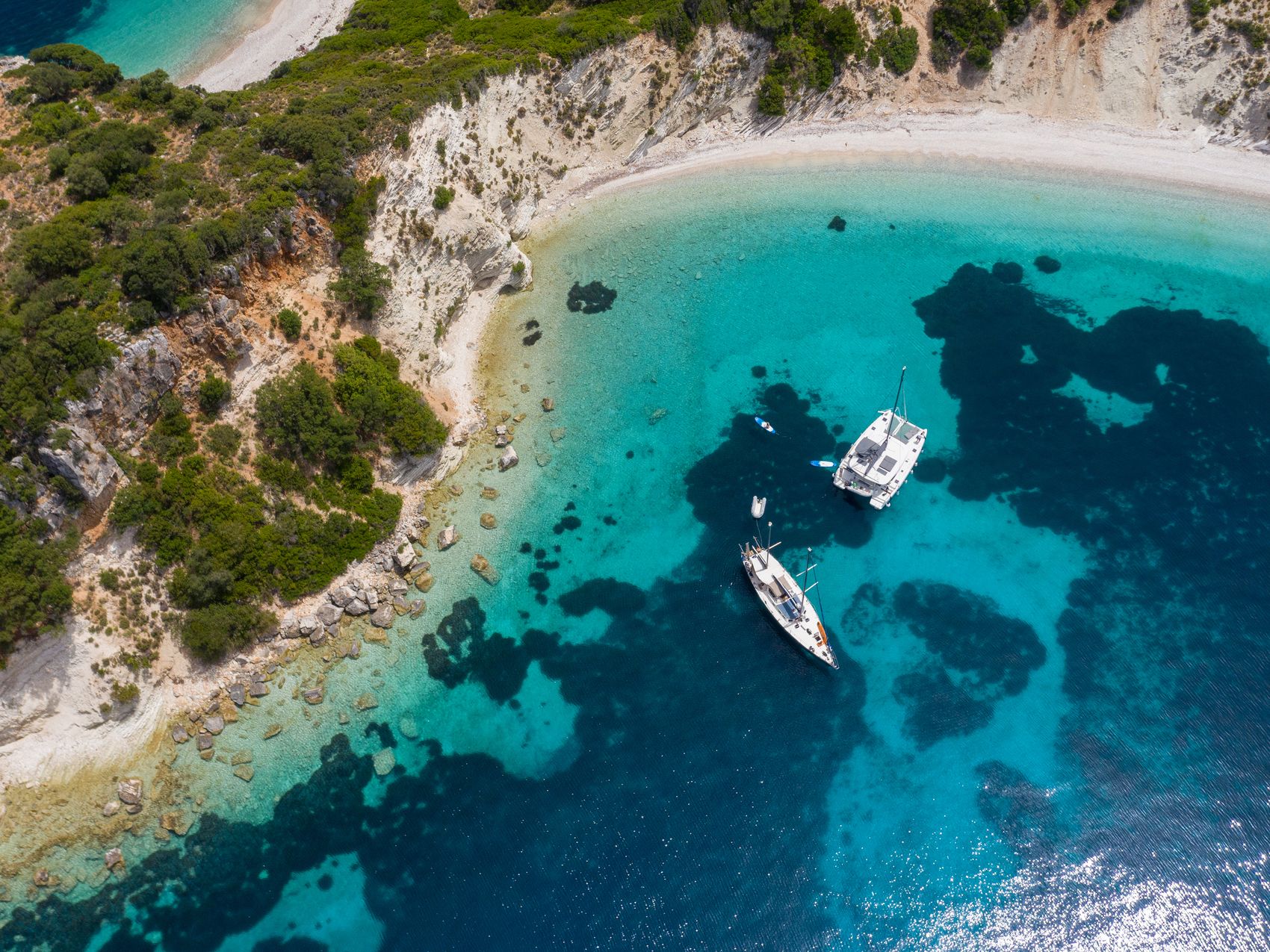
- Catamaran vs. Sailboat – Which one to choose?
A frequently discussed topic among sailors is what type of boat to choose for the next adventure. Should you go for a classic sailing yacht, catamaran or motorboat? Which boat is better? Each vessel can provide you with an unforgettable experience. It is impossible to say that a catamaran is better than a sailboat and vice versa. The question is, rather, what do you want, what are your needs, abilities and budget
Proponents of monohulls love the typical wobbliness of these boats and the authentic sailing experience that they convey. On the contrary, fans of catamarans praise their luxurious spaciousness and stability. Both teams are right.
Let’s take a closer look at the differences between monohulls - such as sailboats and multihull boats - such as catamarans . For a better comparison, we will focus only on boats with sails. There are also multi-hull motor boats (power catamarans), three-hull boats (trimarans), or single-hull motor yachts and boats. Let’s compare charter sailboats and catamarans based on their handling, equipment, comfort, safety in different conditions and routes, and, last but not least, the price.
What is the difference between a sailing yacht and a catamaran?
Let's start with the basics. Sailing yachts are typically monohulls that are propelled by sails and have a single keel that runs along the bottom of the hull.
Discover the latest review of the Bavaria 46, one of the most popular sailboats
Catamarans have two hulls that are connected by a bridge. Catamarans are generally wider, more stable, and more spacious than sailing yachts, making them a popular choice among families and groups of friends looking for recreational boats.
Discover the latest review of the Lagoon 450F, one of the most popular catamarans
Handling and manoeuvring.
The catamaran consists of two hulls, twin engines and two rudders. Sails are similar to those on the sailboat. Due to a short keel, the catamaran has a shallow draft. The construction of the catamaran makes it move faster and, above all, with better stability than a monohull vessel. The experience of real sailing on a catamaran is impoverished by typical heeling and swaying. The catamaran will neither rock you from side to side nor tilt as it happens on a sailboat. But some crews can consider this as their big advantage. On the other hand, sometimes a catamaran has a tendency to slap on the water.
On the other hand, the sailboat has a long keel and a triangular shape, thanks to which it slices through the water with less effort. The typical movement of the ship is rocking and heeling.
The speed of both vessels also depends on the direction of the wind. When sailing downwind , catamarans usually achieve greater speed than sailboats. Sailboats, on the other hand, perform better when sailing upwind . During turns, sailboats are better manoeuvrable and respond to a helm better, while catamarans lose the necessary impulse for a prompt turn faster.
Unlike a sailboat, a catamaran is practically unsinkable . However, from a physics point of view, it is easier to capsize a catamaran, although the probability of this happening is relatively low, and the boat stays afloat, providing a haven for the crew.
The limit of positive stability (or angle of vanishing stability), which can make the boat capsize, is considerably smaller in the case of a catamaran than in the case of a sailboat. A catamaran is not able to self-right. A strong gust of wind or a wave can tilt the sailboat over when heeled to a more than 90-degree angle (the keel of the boat protrudes above the surface), and it can still be able to return to its normal position by itself. Therefore, a sailboat works more smoothly in waves than a catamaran. However, large and breaking waves are equally dangerous for both types of boats, and you must sail perpendicular to the direction of the waves in such conditions.
Docking and anchoring
Although a catamaran may seem more difficult to park at first glance due to its more massive appearance, the parking manoeuvre is surprisingly easier than with sailboats. You are able to turn the catamaran 360 degrees on the spot. This is not possible to perform with a sailboat. The catamaran is equipped with two engines that can be controlled independently. The disadvantage of the catamaran’s robustness is that it often takes up 1.5 - 2 times more space in the marina than a similarly long sailboat. Especially in peak season, finding a place to dock can be difficult.
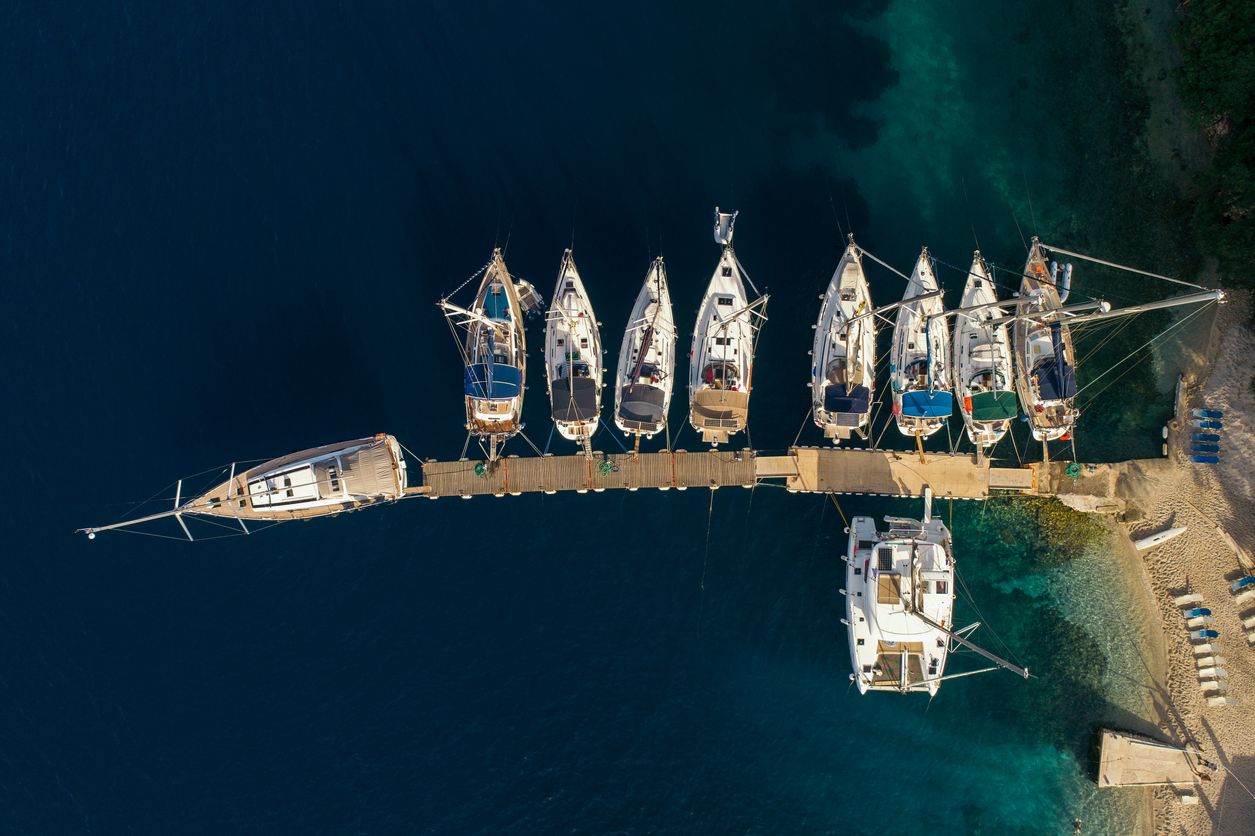
On the contrary, anchoring a catamaran can seem more complicated, at least at the beginning. If you are chartering a catamaran for the first time, be sure to inquire about the anchoring system when taking over the boat. When anchoring the catamaran, you need a bridle rope with a carabiner, which you tie to both the bows and the anchor chain in the middle. The anchor is then centred and the position of the rope prevents damage to the hulls from the chain.
The indisputable advantage of anchoring with a catamaran is its low draft. The absence of a very long keel allows you to drop the anchor even in shallow bays and closer to the shore, where you would not be able to stay with a sailboat.
A catamaran is definitely more comfortable . Both for the captain and the crew. It is more spacious and calmer during sailing. If you have a crew that often suffers from seasickness, such members usually feel better on the catamaran. Take in mind that a catamaran has its specific movements as well, and they may not suit everyone’s stomach either. Under the same conditions, you can chase mugs in the kitchen and wipe up spilt coffee on a sailboat, and on a catamaran, you can at most "complain" about boredom during the cruise.
During a gust of waves, the crew on the sailboat gets wet immediately; on the catamaran, you can hide and stay dry. Even such a detail as staying dry can uplift the crew’s mood during adverse weather conditions.
Catamarans are more often equipped with automatic winches. You don’t work so hard manually as you do on a sailboat. Working with the sails is also less demanding, and you have clear instructions for reefing the sails with regular charter catamarans.
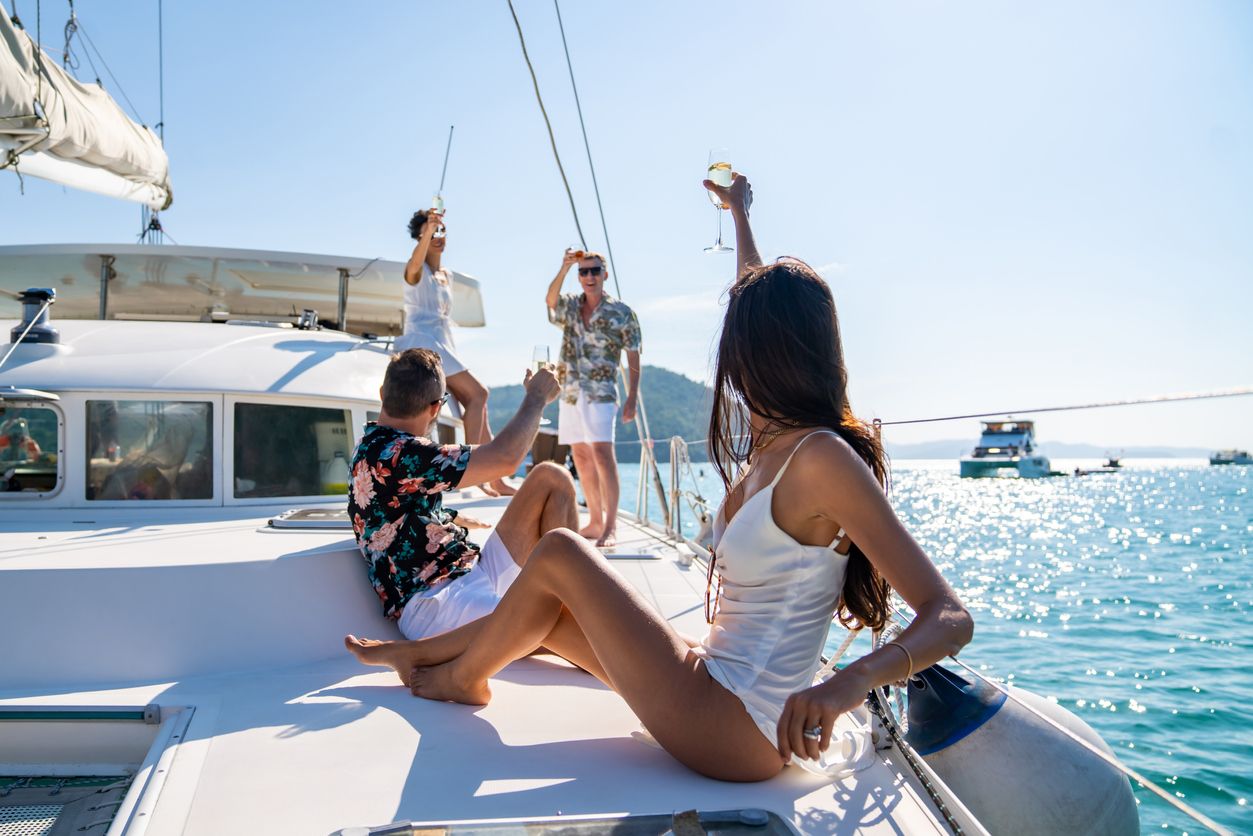
You will appreciate the catamaran more on hot summer days. Air circulation is much better on catamarans. The view from inside the boat is more beautiful from the catamaran because the living part of the deck of the catamaran is located above the water level. You won’t see much from the saloon in the sailboat. As for the view of the ship itself, most sailors enjoy the sight of elegant and well built, agile sailboats more than of multihull "bulldozers" on the water.
Safety depends not so much on the type of vessel as on other factors - the age and state of the ship, the weather and the human element. If we talk about the safety of staying and moving on the boat itself, a catamaran is definitely a safer place for children and the elderly.
In extreme conditions, a monohull is more wobbly on the water and often a bit safer because a sailboat can take care of itself. It can "dance" in big waves more smoothly and independently than a catamaran. The captain needs clear correction and control in strong winds and high waves.
It is true that if you capsize a sailboat , it has the ability to self-right. When you capsize a catamaran, only the towing service will help you. However, once you’re in a situation where even your sailboat almost capsizes, chances are you’re already in huge trouble anyway.
Do catamarans flip easily?
The largest modern catamarans exhibit impressive buoyancy and outstanding resistance to rolling. This ensures that capsizes or inversions are unlikely to occur. When faced with 30-foot breaking waves, the boat gracefully sways from side to side.
You can enjoy long routes in greater comfort and with a longer period of self-sufficiency on catamarans. These are usually equipped with solar panels for electricity production, desalinators for obtaining drinking water and generous storage space.
A catamaran is more expensive than a sailboat of similar size. In addition, you will pay extra for parking fees in marinas and city piers, for entering national parks and sometimes for fuel. The price often wins as a decisive argument when choosing a charter boat. Although the price difference may not be negligible, a catamaran’s additional benefits (higher comfort, stability and spaciousness) often compensate for the higher price.
An example of a comparison of rental fleet prices: renting a catamaran Lagoon 42 from 2019 with a length of about 13 meters (6 cabins) will cost you about 480 euros per day; alternatively, renting a sailboat Jeanneau Sun Oddysey from 2019 with a length of about 13 meters (5 cabins) and with a bow thruster can cost from 200 euros per day. The price may vary depending on the month and discounts from the charter company.
How much does a sailboat cost?
Sailboat prices are different, but it is possible to get some idea of the price if we study markets and use several examples. The cost of cruising boats is usually €250,000 or less. The price of a new boat typically ranges between €100,000 and €1,000,000. The value of a used sailboat varies based on its size and year of manufacture, usually between €10,000 and €100,000.

If you long for a real experience of authentic sailing, you want to enjoy the heel and feel the wind in your hair, then a sailboat is an obvious choice. A sailboat will also be a better option if you plan to reach less accessible, narrow, and capacity-limited places where maneuvering a large catamaran could be problematic. A sailing yacht won’t hurt your wallet as much as a catamaran.
If you don’t like the adrenaline rush of sport sailing, you prefer bigger living space, and especially if you have children on board, you will fall in love with a catamaran. When choosing a catamaran over a sailboat, enthusiasts of diving and other water activities that require storing bulky items will also be grateful.
If you don’t want to lose the charm of yachting while sailing on a sailboat, but you are worried about the wobbly movement tendencies, for instance, while docking in a marina, choose a sailboat equipped with a bow thruster for easier maneuvering.
What type of boat is better for a novice captain?
We recommend building practice first on a classic sailing yacht (monohull) for novice captains. You need to get enough feel for maneuvering the ship as such. A robust, comfortable, and stable catamaran will forgive many mistakes under normal conditions. Even a novice crew can be trained better on a sailboat - a catamaran "spoils" the crew more quickly.
An old sailor’s proverb says, “a smooth sea never made a skilled sailor” . So, if you are still at the beginning of your captain’s journey, a similar rule also applies when choosing a vessel :)
So, what is the best deal for your next yacht charter vacation? Whether a catamaran or a sailboat, a multihull or a monohull is better, there is no winner or a loser. Each vessel has different advantages and disadvantages. Very important aspects of life on a boat are a good captain, a friendly and capable crew and favorable conditions for sailing. Although we cannot guarantee this at Boataround, we are here for you when choosing a specific boat.
At the end of the day, the choice is yours:

Catamaran Vs. Sailboat (What’s the Difference)
Posted on May 28, 2022
Like most sailors, I am passionate about my cat and will argue with you from sunrise to sunset about its efficiency on all levels. Two schools of thought on catamaran vs. sailboats frequently engage in fast, heated debates about which is superior.
When it comes to boats, you likely have the opportunity to sail a Catamaran (a vessel with two separate bodies/hulls) and a sailboat (a single-hulled vessel). Everything boils down to your preferences and what you intend to use them for, but that shouldn’t stop us from highlighting the best option.
In many ways, a catamaran is better than a sailboat, especially with stability. There are many advantages to using a catamaran over a monohull, from safety to space, handling, and downhill experience. Sailboats are more versatile, more cost-effective, and better at cruising upwind than motorboats.

Let’s look at both vessels in-depth!
Catamaran Vs. Sailboat
It all comes down to personal preference and planned goals, but no matter what, a catamaran boasts more advantages than a sailboat, no matter what. However, let’s define each, then look deep into their characteristics.

A catamaran is a two-hulled boat that is used for sailing. It is common practice for cats to use their paws as a means of stabilizing themselves. Monohulls are stabilized by keels that are blasted. Catamarans’ displacement, hull volume, and draught depth are all less than those of roughly equivalent monohulls.
It wasn’t until the 1600s that the first known catamarans debuted, and they have been around ever since. Dual-hulled vessels were preferred by fishermen in Tamil Nadu’s Pavaras group because of their increased stability. They immediately became a global trend after being brought about by the British.
Today’s catamarans are light years ahead of their predecessors in technology. In terms of their adaptability, construction, and design, they’ve improved in two major aspects.
Unlike a motorboat, a sailboat relies only on the power of the wind for a movement that can reach top speeds in strong winds.
The number of sails on a sailboat, often known as a sailing boat in the United Kingdom, can range from one to five. “Sailing ships,” rather than “sailboats,” are larger watercraft that use sails to propel themselves.
A schooner tour, which is a big sailboat having two masts, or a dinghy lesson, which is a smaller sailboat, are also options. Regardless of the type of sailboat, turning the sails into the wind is always the primary method of movement.

Catamarans shine from a variety of safety standpoints. Because they don’t have ballast, they tend to be more stable and appear to have more common buoyancy, making them nearly robust. If you’ve ever sailed on a cat, you’ve likely seen that its cracks and nooks are attributed to an astonishing amount of buoyancy.
Fires can, however, pose a real threat to the security of these objects. In the end, a cat, unlike a monohull, can sink in an accident but will most likely float on the surface of the water.
A catamaran’s decks are all the same height. It is safer to walk across them than on the sailboat decks. Because of their level decks, catamaran pontoons are easier to keep stable and safe, even in bad weather, because they don’t sway as much. The speed of a catamaran is an important factor in its safety.
Catamaran pontoons are the best option if you’ve always assumed that speed equals safety. Catamaran speed will allow you to get out of a bad weather situation. There’s no need to get stranded in bad weather if you’re on a modern catamaran that can travel 250 miles per day.
When it comes to safety, a monohull is nowhere near as safe as a catamaran. In terms of safety, a sailboat’s ability to self-right is critical.
Having a sailboat means that even if you capsize, you’ll be able to access onboard safety gear, floatation devices, a life raft, EPIRBS, a dinghy, strobe lights, as well as a host of other things.
A cat, meanwhile, does not have the same advantages. If you capsize in the middle of the ocean in a catamaran, you’ll be trapped upside down and at great risk of drowning.
Efficacy and Quickness

If all other factors are held constant, a catamaran will outperform a monohull sailboat by about 30%. If the wind is blowing in a certain direction, a cat can cruise at half of the speed of the wind. It’s still the fastest boat, so you’ll get to your destination quickly. A catamaran, on the other hand, will help you avoid unpleasant weather.
Cruising on a sailboat is a delightful experience because of the way they are designed. This means that they won’t have to contend with these elements, and they’ll be able to sail at a moderate but steady pace.
Unlike catamarans, they do not have a reduced wetted surface area and are substantially slower overall. They can, however, be a fantastic option for sailing upwind.

A catamaran, as its name implies, has two parallel hulls that give it a more stable framework. Typically critical in predicting healing and capsizing, as well as limiting the risk of rolling when speeding. Passengers who suffer from motion sickness will greatly benefit from its stability.
One of the reasons capsizing on a catamaran is so rare is because of the boat’s high level of stability. When the crest of the waves is a specific distance apart, a catamaran can lag, which reduces swaying.
A monohull’s stability will always be challenged, particularly compared to a catamaran’s stability. Since a monohull’s design implies less solidity, it is four times more likely to capsize than a catamaran.
It is more probable to experience the effects of heeling on monohulls than on a cat of similar size due to its single-beam configuration. In a nutshell, monohulls may have a problem with heeling.
Comfortability

Because of the catamaran’s larger footprint, sailing’s unanticipated rolling and pitching can be minimized. Because of the catamaran’s vast surface area, it is more stable and comfortable to sail. It is now easier and safer to cook while sailing.
As a result, your visitors will be less likely to suffer from seasickness as there’s less swaying and the cat doesn’t swell. Also, since the catamaran deck is level, it is safer and easier to walk around on it. Due to the reduced risk of slipping overboard, reefing is now much simpler and safer.
Unlike a catamaran, a sailboat does not shake or slap on the water as a catamaran does. To put it another way, unlike a catamaran, it can operate in unison with the wind rather than resist it. However, the constant rocking and pitching of a sailboat are the reasons for seasickness.
Maintenance

There are two of everything on a catamaran. Everything appears to be duplicated, which could be helpful if one part fails while sailing. As a result, you’ll never be stranded without a backup plan.
The costs of maintaining a boat, even if you can still use one component even if the other is broken, can be enormous.
Your monohull watercraft must be serviced or repaired regularly because you only have one piece. However, compared to a catamaran, the upkeep and repair costs of a sailboat are far lower.

The cost of operating a catamaran is prohibitively expensive because everything appears to be delivered in pairs. There are many pros to owning a catamaran over a sailboat. They include high resale prices and low degradation rates.
Also, they can sell faster than sailboats. Catamarans, on the other hand, aren’t often built in the United States, so their costs are higher because of the additional expenditures on transportation.
Sailboats are widely available, therefore their prices may be lower than those of a catamaran. Again, you’ll benefit from their low maintenance requirements.
Eco-friendliness
If you want to save money by reducing fuel expenditure, a catamaran is the best option. Generally speaking, a cat meets little resistance or drag and does not require a great amount of fuel to move. Also, their speed steadily increases, ensuring that no sudden increases in fuel consumption occur.
Sailboats, on the other hand, have a higher amount of drag due to their increased mobility, which results in a higher resistance and higher fuel consumption.

Catamaran
The amount of deck area that a catamaran manages is enormous and constantly extensive. If you’re looking for peace or intending to live onboard a vessel, a catamaran is a great option because of its ability to occupy a large amount of space.
Because monohulls are smaller than cats, they have a much smaller deck area. Because of the additional storage space, this isn’t a problem.
The Bottom Line
When it comes to sailing, it’s easy to see why a catamaran is the most popular choice. However, this doesn’t mean that a monohull sailboat is without its advantages. Like a catamaran, it has advantages and disadvantages.
While the catamaran came out on top in the end, it’s up to you to make the final decision based on your preferences. Regardless of which cruise line you choose, make sure to take part in the experience.

The Ultimate Guide to Choosing Between a Sailboat or Catamaran for Your Sailing Adventures
C hoosing between a sailboat and a catamaran for your sailing adventures is a significant decision that depends on various factors, including your sailing preferences, experience level, budget, and intended use. Here's an ultimate guide to help you make an informed decision:
1. Sailing Experience:
- Sailboats: Typically require more skill and experience to handle, especially in adverse weather conditions. Ideal for sailors who enjoy the traditional feel of sailing and are willing to invest time in learning and mastering the art.
- Catamarans: Easier to handle, making them suitable for beginners. The dual-hull design provides stability, reducing the learning curve for those new to sailing.
2. Space and Comfort:
- Sailboats: Generally have a narrower beam and less living space. However, some sailboats may offer comfortable cabins and amenities.
- Catamarans: Wider beam creates more living space. Catamarans often have multiple cabins, spacious saloons, and expansive deck areas, providing a more comfortable living experience.
3. Stability:
- Sailboats: Monohulls can heel (lean) while sailing, which some sailors enjoy for the thrill but can be discomforting for others.
- Catamarans: Greater stability due to the dual hulls, providing a more level sailing experience. Reduced heeling makes catamarans suitable for those prone to seasickness.
4. Performance:
- Sailboats: Known for their upwind performance and ability to sail close to the wind. Some sailors appreciate the challenge of optimizing sail trim for efficiency.
- Catamarans: Faster on a reach and downwind due to their wide beam. However, they may not point as high into the wind as monohulls.
- Sailboats: Typically have a deeper draft, limiting access to shallow anchorages and requiring deeper marina berths.
- Catamarans: Shallow draft allows access to shallower waters and secluded anchorages, providing more flexibility in cruising destinations.
- Sailboats: Generally more affordable upfront, with a wide range of options available to fit different budgets.
- Catamarans: Often more expensive upfront due to their size and design. However, maintenance costs may be comparable or even lower in some cases.
7. Mooring and Docking:
- Sailboats: Easier to find slips and moorings in marinas designed for monohulls.
- Catamarans: Require wider slips and may have limited availability in certain marinas, especially in crowded anchorages.
8. Intended Use:
- Sailboats: Ideal for traditional sailors who enjoy the art of sailing, racing enthusiasts, or those on a tighter budget.
- Catamarans: Suited for those prioritizing comfort, stability, and spacious living areas, especially for long-term cruising and chartering.
9. Resale Value:
- Sailboats: Generally have a more established resale market, with a wider range of buyers.
- Catamarans: Growing in popularity, and well-maintained catamarans often retain their value.
10. Personal Preference:
- Consider your personal preferences, the type of sailing you plan to do, and the kind of lifestyle you want aboard your vessel.
In conclusion, both sailboats and catamarans have their advantages and disadvantages. Your decision should be based on your individual preferences, experience level, budget, and intended use. If possible, charter both types of vessels to experience firsthand how they handle and to help make a more informed decision based on your own preferences and needs.
The post The Ultimate Guide to Choosing Between a Sailboat or Catamaran for Your Sailing Adventures appeared first on Things That Make People Go Aww .

- Destination Information
- Sailing routes
- Boat owners
- Tips & Inspiration
- Sustainable Sailing

- Featured Posts: The Latest News
- Nautical Knowledge
Sailboat or Catamaran: which one to choose?
- 13 March 2024
- 4 minute read

Share the post "Sailboat or Catamaran: which one to choose?"
Sailboat or catamaran? The killer question!
⛵ Embarking on a sailing adventure is a shared dream, but the decision between a sailboat and a catamaran can be discouraging. As you prepare for your sailing trip, one crucial question looms: should you opt for a catamaran or a sailboat charter? Let’s explore the advantages, disadvantages, and solutions to help you make the right decision based on your preferences.
No matter which boat you’ll choose, our expert team will be there to accompany you through the booking process.
The criteria for choosing between a sailboat and a catamaran:
Stability: Preference for the catamaran , with its two floats, it is naturally more stable.
Performance: Sailboats have a higher speed in most conditions, especially upwind (sailing upwind) .
Performance: The sailboat is usually more sporty than the catamaran.
Cost: Generally speaking, the sailboat is more suitable for smaller budgets.
Comfort: The catamaran has more living spaces, which gives in more comfort in general.
Space: Catamarans have a more interior and exterior space, ideal for families or large groups.
The advantages of a catamaran charter:
Comfortable stability.
With its two hulls, the boat does not move or tilt like sailboats, they ensure a perfect stability for a smooth sailing.
A large central saloon
Unlike the sailboat, this one has a spacious room where you can share your best meals with your family and/or friends.
Spacious cabins
It also gives you large spaces, especially in the cabins. In addition, these are usually isolated from the cabins for children.
Accommodation capacity
Obviously, by having a larger surface area, it can accommodate more people in a spacious way. Allowing groups of friends or large families to be all together on the boat, still having your personal space.
To join the two parts of the boat, this type of boat has what is called a trampoline net. A flexible synthetic element that acts as a deck. Ideal for sunbathing, having a nap or simply resting for a while.
Ease of handling
Normally, in general conditions, catamarans are relatively easy to manoeuvre in shallow and deep water. Their twin hull design gives them greater control and stability at low speeds. This makes them ideal for “beginner or inexperienced” sailors
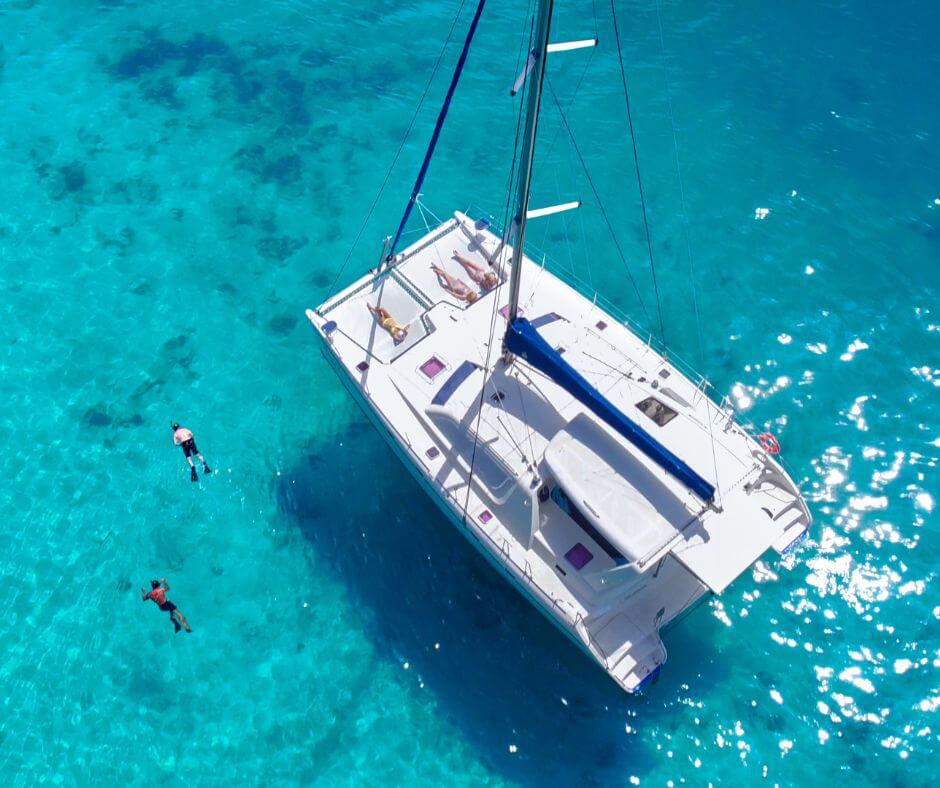
The advantages of a sailboat charter:
Performance.
In most cases, sailboats are faster than catamarans. And they are more efficient in sailing, which reduces fuel consumption. Allowing for more sporty and exciting sailing.
Easier to handle in the harbour and find a place. Being less bulky makes it easier to moor.
Sailing boats are generally cheaper than catamarans of similar size. This makes them a more affordable option for tight budgets. Allowing you to enjoy the sailing experience without having to make a large investment.
Sailing experience
Sailing boats offer a more traditional and challenging sailing experience. They require more skill and knowledge to handle, which can be rewarding for experienced sailors. As it leads to a greater connection with the wind and the sea.
Ease of anchoring
Due to their shallower draft, sailboats can anchor in shallower waters than catamarans. This allows them to access a wider variety of coves and anchorages. This makes it easier to explore less accessible areas.
Maintenance
Sailboats are easier to maintain than catamarans. This can translate into lower costs and less worry.
Additionally, sailboats are ocean-worthy boats, capable of handling various weather conditions and offering a safe and comfortable platform for long-distance cruising. With customizable itineraries and opportunities for hands-on learning, sailboat charters promise a unique and environmentally friendly adventure on the open seas.
How to find a good catamaran or sailing boat for your holidays?
At Click&Boat , you will find more than hundreds of different brands of catamarans and thousands of sailboats available in all destinations, each one more amazing than the other. In spectacular locations such as Ibiza, Mallorca, Menorca, Croatia, Greece, Amalfi Coast, Sardinia, Corsica, Barcelona and many more!
Before making your decision, consider factors such as your sailing experience, the size of your crew, your preferred sailing destinations, and your budget constraints. Whether you choose the classic elegance of a sailboat or the modern comforts of a catamaran, one thing is certain: the open sea awaits, ready to be explored aboard your chosen sailing boat.
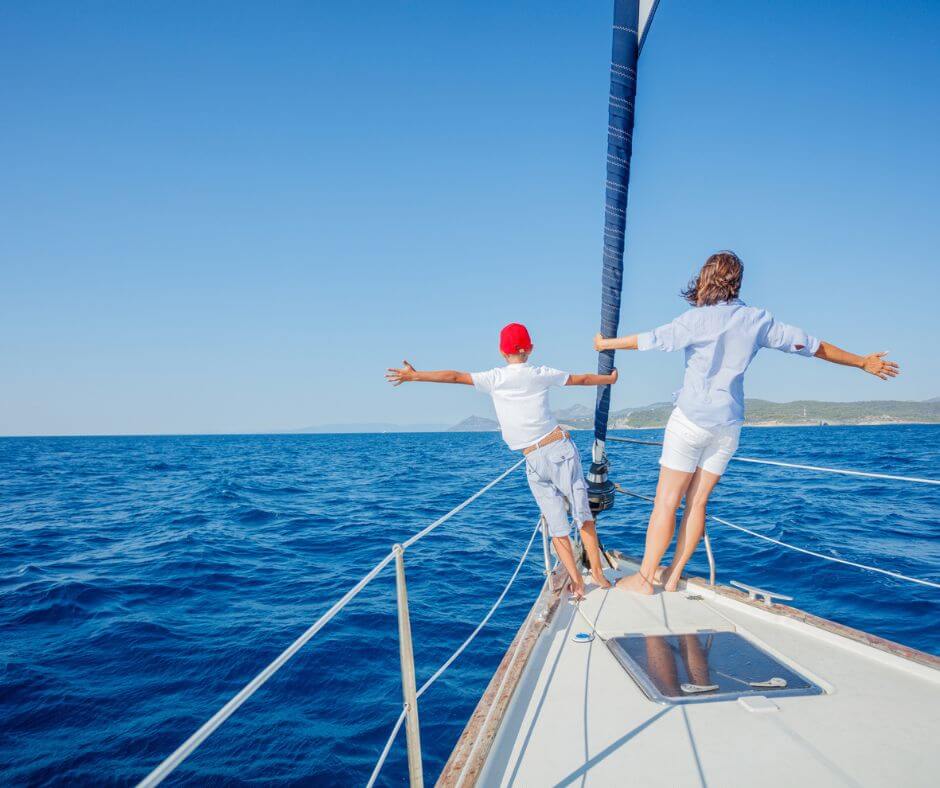
So now it’s up to you to decide. Choose location, sailing plan, number of people and boat to venture into an unforgettable experience. In addition, we also have the option of renting with a skipper. This means that you don’t have to worry about anything at all, and you can enjoy your holiday in the most relaxed way possible.
Keep relaxing and swimming, your skipper will take care of everything! ⚓
Mallorca Map: 1 Week Sailing Route
- 9 March 2024
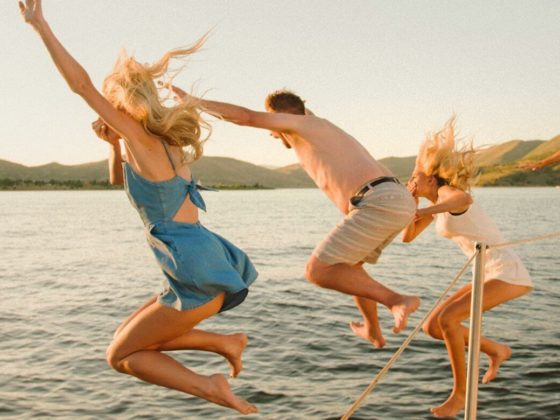
Smooth Sailing: Budgeting Your Perfect Sailing Holiday
- 14 March 2024
You May Also Like
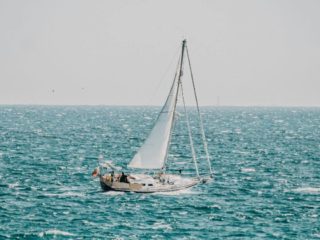
What to bring on board: your boating checklist
- 20 March 2024
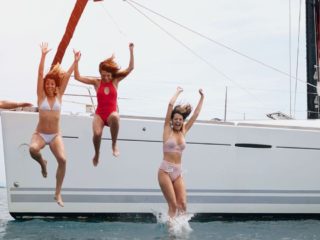
Our tips for a family sailing holiday on a catamaran
- 15 March 2024

Organize your sailing travel plans: 6 tips from Click&Boat
- 6 March 2024
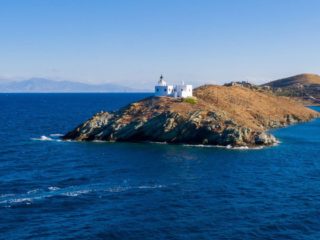
Get your Travel Plans in Order: Top Sailing Destinations 2024: Click&Boat
- 26 February 2024
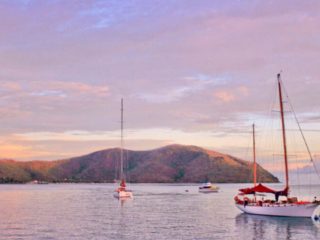
Chase the pink sunset in these Mediterranean gems
- 27 January 2024
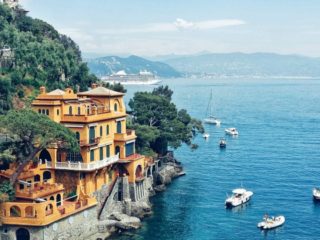
Sailing through the Silver Screen: Set Jetting into 2024
- 19 January 2024
- ClickAndBoat

Sailing Under the Stars: A Maui Stargazing Adventure
- 25 November 2023
Leave a Reply Cancel reply
Your email address will not be published. Required fields are marked *
Save my name, email, and website in this browser for the next time I comment.
This site uses Akismet to reduce spam. Learn how your comment data is processed .
Input your search keywords and press Enter.
Better Sailing

Catamarans vs Monohulls: Which is Better a Better Sailboat For You?
The question of whether to choose a monohull vessel or a catamaran is an eternal dispute between boat lovers. These arguments are usually based on one’s preferences and philosophy. In fact, the popularity of catamarans has grown significantly since their design facilitates many aspects of sailing. But, both mono-hulls and multi-hulls have their advantages and disadvantages. So, in this article, I’m going to list some details about both cats and monohulls so as to help you understand which one is better for you. Remember it all depends on what sort of experience you are looking for. Keep reading!
What is a Monohull?
In general, boats float due to the fact that they displace more water than they weigh. The hull is in “displacement mode” while a boat is stationary or moving slowly. That is, all of the upward forces that keep it afloat come from flotation, which is achieved by displacing water. With certain hulls, increasing the boat’s speed beyond a particular point causes the hull to lift up and skim along on top of the water. This is referred to as “planning.” Monohulls can be divided into two types; displacement and planing hulls.
Some hulls are only capable of moving at displacement speeds . This style of boat has generally slow speed, but it is incredibly efficient to operate. While moving, most have a smooth motion , though rolling (side-to-side movement) might be an issue. On the other hand, while on the sea, achieving fast speeds requires a hull that can readily transition onto a plane. Flat bottom surfaces from amidships aft, or from the middle to the back of the bottom, and a flat transom, or the back of the hull, are the main characteristics of a planing hull. Keep in mind that at a sharp angle, the transom must contact the bottom.
What is a Catamaran?
Nowadays, catamarans are becoming more and more popular. They’re particularly appealing to fishermen since they combine high-speed performance and a smooth rough-water ride with a solid angling platform. Catamarans have two primary disadvantages . Firstly, they require twin engines. Also, larger catamarans may be too broad to fit into standard marina docks. Another disadvantage is that there is less usable interior space than on a monohull of comparable length.
The two hulls of a catamaran are known as amas. These days, the popular phrase is “sponson,” but ama is still acceptable. Note that in comparison to its entire length, each ama is quite short. The narrow amas of a catamaran travel quickly through the water with little power. This allows for fast speeds even when the amas aren’t actively planning.
Trimarans on the other hand have three separate hulls. Sailboat designers have successfully employed this design to provide a large central hull for cabins. But, also for two outrigger amas for stability. The trimaran concept hasn’t been used much in powerboats, despite the fact that several “cathedral” hulls are related. Instead of three independent hulls, a cathedral design squishes them together to the point that they often share a similar planing surface near the transom.

Monohull or Catamaran? Let’s Take a Look at Their Pros and Cons
Catamarans are unsinkable because they are incredibly stable and have natural buoyancy. Yes, they can capsize in a major accident. But, being rescued while floating on the water’s surface is preferable to plunging to the bottom in a monohull. Furthermore, moving around on a flat deck is far safer than on an angled deck.
Classicists have long claimed that catamarans are not as safe as their keelboat counterparts. However, this remark is now regarded as archaic. Since it dates from the mid-nineteenth century when the majority of catamarans were made by amateurs. They could readily tip over even in calm weather, especially if one of their bodies became leakproof owing to damage. Sinking is extremely difficult, if not impossible, for a well-built modern catamaran. Modern structures are designed using computer simulations of various water conditions. Bear in mind that the maximum potential safe sail area is available to cruisers and charter possibilities in particular.
Monohulls , particularly sailboats, offer significantly stronger “self-righting” capabilities in the event of a worst-case knockdown situation. In a catamaran, once you’re upside down, you’re stuck there…And, who wants to be upside down in the middle of the ocean? Returning to an upright position gives you complete access to onboard safety equipment. This includes a liferaft, dinghy, flotation devices, EPIRBs, and strobe lights, which can save you if the boat sinks.
Generally, a catamaran’s high speed allows it to avoid adverse weather . While catamarans do not point as high into the wind as monohulls they are around 20% faster . Or, if they do, they create more leeway or slide sideways. This means that even if you sail upwind at a slightly broader angle to the wind than a monohull and cover a more distance, you will arrive at your destination sooner than a monohull.
A modern performance catamaran with daggerboards and strong sails may point as high as a monohull of comparable size. It will point similar to a comparable monohull but will sail far faster. This allows it to reach an upwind position far sooner than a monohull. However, it’s worth noting that the majority of production cats on the market are underpowered and have standard smaller sails. Many of these designs perform poorly in light breezes. Unless they’re equipped with larger headsails, a Code Zero, and a square-top mainsail.
While cats are more comfortable and safer in rough weather, we must admit that if the weather gets extremely terrible (60 knots of wind or more), it’s better to be on a monohull for survival reasons. For serious offshore single-handed sailing, I believe a monohull is superior since it is easier to hove-to in it. Bear in mind that when you’re in a cat during severe storms you won’t feel any danger, but it demands some nifty seamanship. And, keep in mind that even though a monohull can capsize in bad weather or even roll in a storm, they usually right themselves. A catamaran , on the other hand, is incapable of self-righting . However, the cat will usually stay afloat, providing a safe haven to wait out until aid arrives. Modern catamarans, on the other hand, are extremely difficult to capsize.
That being said, most catamarans can travel 200 to 250 miles per day, and with contemporary technology allowing one to control weather, it’s difficult not to deal with bad weather. In many circumstances, a faster boat is a safer boat because it can outrun heavy weather. A catamaran can avoid the worst weather and, at worst, put itself in the best position to avoid the brunt of a storm if there’s good weather routing information.
So, to sum up, cruising catamarans are quicker than monohulls, and sailing catamarans, depending on their angle, can sail at half the speed of the wind. It’s great to be on a boat that can swiftly attain high speeds and get you to your destination safely and on time. However, catamarans are faster because of their lower surface area , but their prices are generally higher than those of monohulls. Instead of fighting the elements, monohull designs operate in harmony with them . In addition, keep in mind that when sailing upwind, sailing catamarans are inefficient and tack slowly.
Fuel Consumption
Do you want to save money on gas? Then, in most cases, catamarans have less fuel consumption than monohull boats. Catamarans save a lot of gasoline since they have a less wetted surface area on their hulls. They can propel the boat with just one engine in weak winds. Also in flat water, and if the engines have the same number and horsepower. However, in heavier weather , where the higher efficiency of a monohull design provides less resistance , this is not the case.
Generally, catamarans have two fuel-burning engines, which can raise fuel expenses . However, because a catamaran is lighter on the water, it requires less energy to move. In a catamaran, you’ll use less fuel than you would in a monohull. Furthermore, in low-wind areas, catamarans might choose to use only one engine. This reduces the amount of fuel consumed by a catamaran even more . But, only calm waters are subject to these laws. A monohull is far more efficient than a catamaran in navigating waters with heavy waves and heavy winds. A monohull will consume less fuel than a catamaran in this situation.
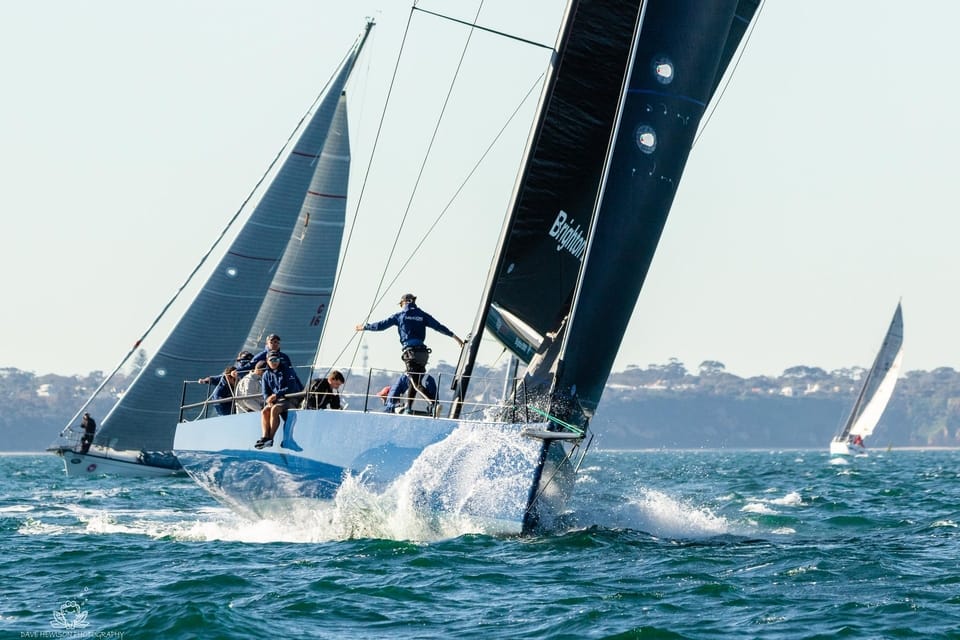
The best feature of catamarans is that all of the rooms are on the same level. The four-cabin arrangement is common with sailing cats and is popular among charter companies. Owner versions usually feature three staterooms, with one hull serving as a big cabin for entertaining. Most catamarans have a big central living room with not one, but two narrow staircases leading down into the hulls—one on each side. It’s a little like living in a tube in the hulls. They’re too thin to accommodate walkaround double/queen berths like those found in monohulls. But, in case of an emergency, it would be impossible to communicate with someone in the opposite hull.
Obviously, a monohull has less space than a catamaran. This is due to the fact that a cat is broader and has a larger deck surface. It also has twice as many hulls as the other, giving you greater total space between them. People who want to host parties on their boats will appreciate the extra space. The catamaran is usually the party boat of choice at the docks, according to most boat owners. Even if you don’t like to host parties, the extra room might be useful for lounging on the balcony or tanning. The boat’s large open space also makes it simple to utilize as a fishing platform.
You also have more room for equipment like surfboards, rafts, and other equipment that can easily clutter a monohull’s deck. Even fishing from a catamaran can be easier because the deck allows for plenty of space between anglers. Owners of catamarans also have more room for carrying fresh water and installing generators and solar panels. A catamaran’s interior room is often larger, and in luxury catamarans, it’s easier to install heavy appliances like washers and dryers inside. These can be fitted to larger monohulls as well, though it will be more difficult than on a catamaran.
All of the extra space, on the other hand, means the catamaran owner has more room to maintain and clean. Furthermore, all of the other stuff that can be brought into the boat will add to its weight . And, as well all know, a heavier boat will consume more fuel and move at a slower speed.
Maneuverability
With their twin motors, catamarans are incredibly agile . On a catamaran, the engines are widely apart, making navigating more easier and more precise than on a monohull, unless the monohull incorporates a bow thruster. Most of the time, a bow thruster isn’t required because the engines are around 20 feet apart. When there’s no bow thruster (as do few monohulls) you have to rely on prop-walk and prop wash on the rudder. On her own axis, a contemporary catamaran can turn 360 degrees. A monohull would be unable to accomplish this while it has a larger turning circle.
A monohull under sail, on the other hand, is far more maneuverable and will tack much faster than a catamaran. But, the ease of movement under motor on a catamaran, especially in close quarters, is substantially superior. They also feature shallow drafts , allowing you to maneuver into areas that a monohull cannot, as well as anchor closer to shore . However, monohulls are more maneuverable as you don’t have to deal with two hulls. They can make sharper turns and travel through small channels and small areas easier than cats. In addition, their hull displacements lessen the negative impacts of crosswinds in confined spaces.
Anchoring and Docking
While docking a catamaran is simple, its big size makes it difficult to fit into a standard slip. However, with some skill and good planning, finding room should be no problem. You may even anchor or moor the boat and dock it with the dinghy, which is much easier than a monohull. However, keep in mind that in most cases docking, hauling, and slipping a monohull is significantly easier, takes up less room, and is far less expensive.
Moreover, docking a catamaran can be a challenging task. This is due to the fact that catamarans are frequently too wide to dock in the marina’s core regions. As a result, they must be docked at the far end of the dock. Therefore they have fewer docking options and raise the cost of docking. Owners of catamarans sailing through places where there aren’t many catamarans may find it difficult to find a dock at all. This is especially true in the northern Atlantic, where monohulls outnumber catamarans.
Keep in mind that one of the most significant advantages of a sailing multihull is its stability . Not only at sea, when heeling simply does not – or should not – occur to any significant extent, but also at anchor. It also greatly expands one’s anchorage options to include areas influenced by the swell. This is quite common in the Caribbean, where a slight shift in wind direction may make a previously flat, quiet anchorage intolerable in a monohull. In addition, its fairly shoal draught expands the options even more.
Catamarans have a large platform, making them ideal for relaxing at anchor without the rolling motion that monohulls are prone to in a swell. Many monohull sailors had to leave anchorages because of the uncomfortable anchoring. This is because large rollers or swells entering an anchorage can make the situation extremely uncomfortable and dangerous.
Also, a bridle is tied to both bows and down to the anchor chain on catamarans , resulting in a fairly secure position at anchor . In heavy winds, many monohulls tend to sail at anchor since the bow acted as a sail (due to the high freeboard). They sail in one direction until the chain snatches, then tack across and sail in the opposite direction, almost completely dislodging the anchor. The catamaran, on the other hand, is much more stable at anchor and does not sway as much.
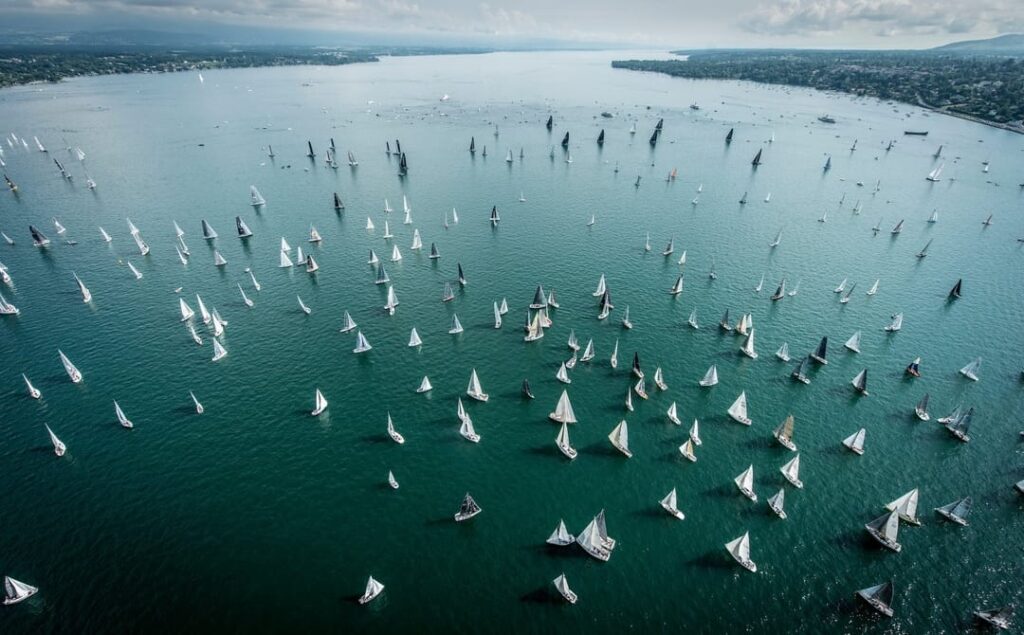
Sailing Abilities
Most cruising multihulls won’t point like a monohull with a deeper keel upwind, and the motion may be rather unpleasant when sailing in rough weather. You must also keep a close eye on the sail area, but we’ll analyze this further below.
Moreover, catamarans are not suitable for racing and sailing sports. They can be fantastic for a holiday or even living aboard, but most racers would never buy one because of the stability. There is no sense of wind, waves, flying, or the boat itself on a catamaran. It’s quite tough to tell when it’s time to reef. While this can be done by feel on a monohull, there is specific instruction for catamarans as to what winds the sail area should be reduced.
When sailing to higher latitudes, like the North Atlantic, then a monohull would be a better solution than a catamaran. Residential areas are easy to heat and keep warm, and traditional metal may even melt thin ice. The contrary is true in the tropical zone, where huge catamaran salons would be unbeatable.
Monohulls can sail higher into the wind than most catamarans due to their keel. Daggerboards, which serve the same role as a keel and boost windward performance significantly, are common in some catamarans. However, daggerboards are not seen on 95 percent of cruising cats (those available for charter). Also, a monohull will be much easier to tack than a catamaran and glide lightly through the water. Moreover, in rougher seas, certain catamarans experience an annoying slapping of water on the bridge decks. A monohull responds to the helm more quickly than a multihull (in other words, they turn faster). This is due to the fact that most cruising cats have small “spade rudders” whose depth is dictated by the need for a modest draft. While with a keel, a monohull can have a more responsive rudder for its draft.
Monohull spreaders are 90 degrees to the mast, however, catamaran spreaders must be backswept. The reason for this is that a monohull has a backstay, and by combining it with the intermediates, you can achieve a lovely pre-bend in the mast. Keep in mind that the pre-bend is to flatten out the mainsail and allow for better performance.
Also, in order to pre-bend the mast on a catamaran without a backstay, you’ll have to utilize the backswept spreaders and diamonds. The reason I bring this up is that if you want to broad reach or run on a catamaran, you can’t let the mainsail out all the way because the backswept spreader tips could puncture the cloth. Because the spreaders on a monohull are at 90 degrees, you can let the main and boom out much wider, which is obviously more effective. This is one of the reasons why a catamaran should broad reach and tack downwind.
- Maintenance
Because catamarans have two of everything, there is a clear trade-off between maintenance costs, reliability, and redundancy. One of the most significant advantages of having two of everything is that you have a backup . As a result, even if one component fails, you can typically still utilize the boat, such as running on one engine while the other fails. While redundancy is fine, lower maintenance and repair costs are generally preferable. Although having two of everything provides you some redundancy, I doubt you’ll want to take the boat out if one of the two hulls “fails.” Of course, this means two hulls to clean and antifoul, double the engine maintenance, and so on , but having two of the important pieces of equipment, such as engines, outweighs the disadvantages.
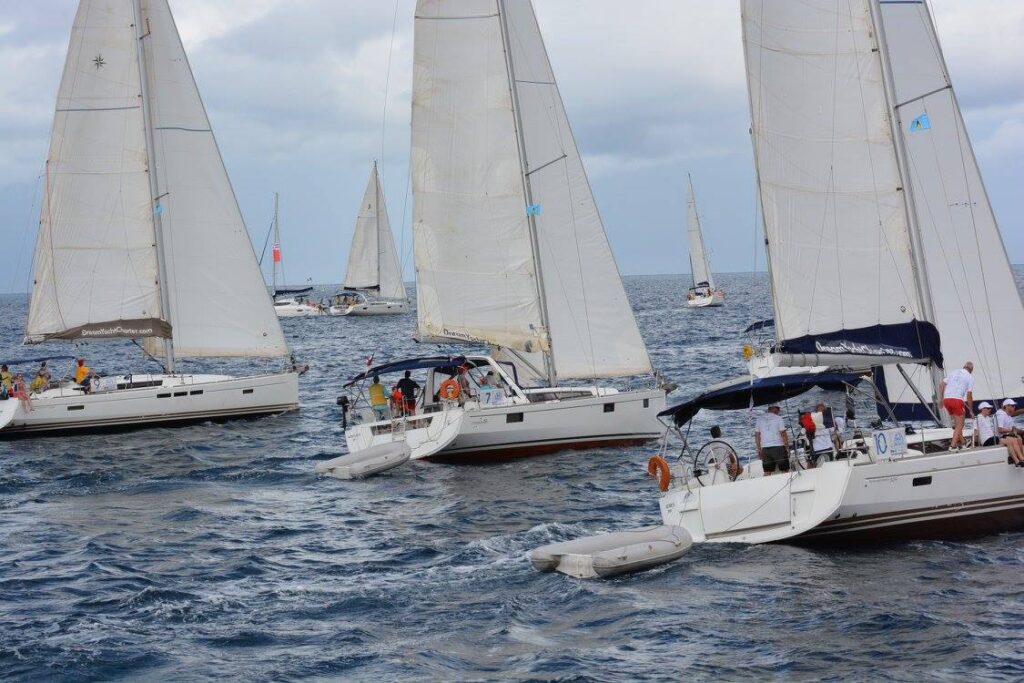
Due to their weight-bearing, catamarans have minimal to no heeling and do not roll at anchor. With sudden gusts, heeling on a monohull can be dangerous and uncomfortable, not to mention seasickness. Again, the trade-off is a noisy ride and fast movement, which many people find uncomfortable in bad weather. However, the heeling action of a monohull sailboat offers stability, spills wind from the sails, and provides safety.
Catamarans, unlike monohulls, do not have ballast in their keels, therefore they rely on beam and buoyancy for stability. Typical cruising catamarans have a beam-to-length ratio of around 50%, while several modern designs exceed this figure. A 45-foot catamaran will be around 22 feet wide, offering a highly solid sailing platform. Monohulls, unlike catamarans, cannot overcome rolling and pitching because of their narrow beam and lead ballast.
Rolling and pitching on a monohull while underway is quite dangerous. But, walking around on the deck of a catamaran while underway is easier because the boat is considerably more stable and does not heel. Sail adjustments and reefing are also significantly easier and safer for the crew as a result of this. The risk of falling overboard on a catamaran is far lower than on a monohull because of the rolling and pitching motion.
Generally, buying a catamaran is substantially more expensive than a monohull. So, if you opt for a cat you should also consider your budget before even starting your research. Pre-owned monohulls, on the other hand, are extremely inexpensive to purchase due to a current supply that considerably outnumbers the demand.
Nowadays, catamarans are in high demand , and they normally keep their worth far better and longer than other types of boats. And that’s why the market is currently centered to manufacture lots of them. Bear in mind that looking for a catamaran under $250,000 your options will be limited, and finding a catamaran under $100,000 is nearly difficult. Unless you opt with older boats like the Prouts or the less priced Geminis, a monohull is your best bet in this instance.
The cost of a cat rises if you need at least two of everything. But, keep in mind that due to their popularity, catamarans have a high resale value and a low depreciation rate , and they normally sell faster than monohulls. Due to the fact that most catamarans are not made in the United States, delivery expenses must be considered when purchasing the boat. Multihulls are becoming more popular, and as a result of the increased demand, they command greater prices in both the new and brokerage markets. Lastly, when considering a purchase, keep in mind that maintenance costs are substantially higher than on a monohull.
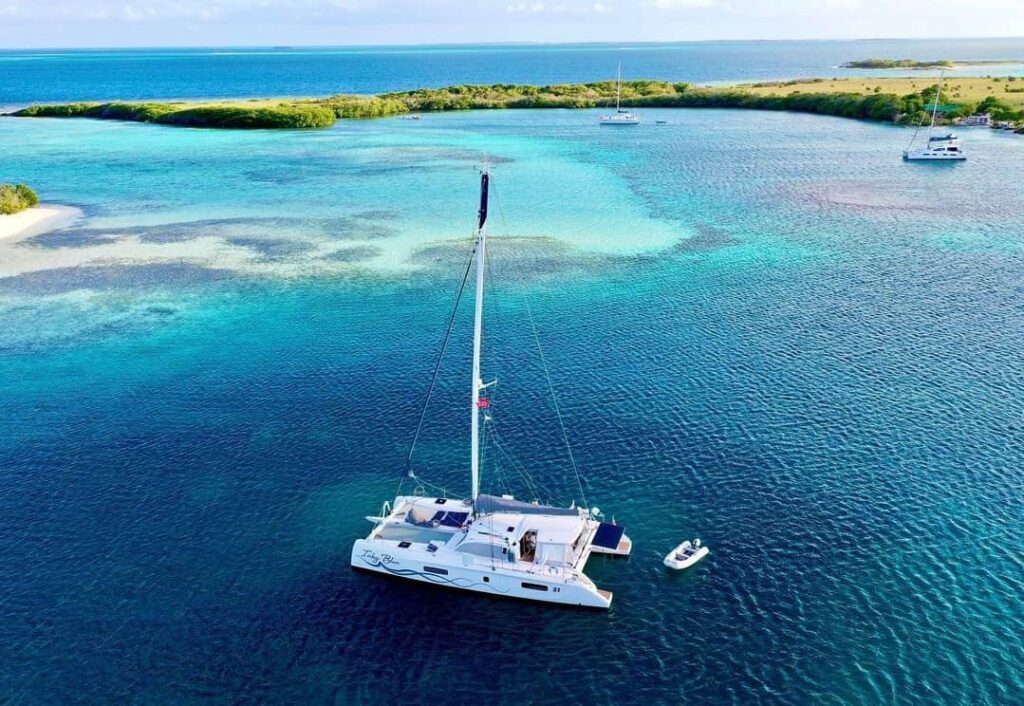
Catamarans vs Monohulls – The Bottom Line
So, this is it! We’ve come to the end of this highly discussed topic among sailors. Obviously, everything would be determined by two basic factors: personal preferences and budget considerations. Both monohulls and multihulls have their pros and cons and it’s totally up to you to decide which one suits you best. Because the two types of vessels provide such a different experience, it is highly recommended that you rent and test each one before purchasing to compare everything. In any event, it’s reasonable to say that a catamaran is an excellent choice for a charter, if not for purchase. Despite its high price, it provides comfort, space, and stability but you have a better overall sailing experience with a monohull. So, I hope that this article will help you make the right choice according to your needs. I wish you good luck with your research!
Peter is the editor of Better Sailing. He has sailed for countless hours and has maintained his own boats and sailboats for years. After years of trial and error, he decided to start this website to share the knowledge.
Related Posts

The Ultimate Guide to Choosing the Best Fishing Line for Trolling

Lagoon Catamaran Review: Are Lagoon Catamarans Good?

Best Inboard Boat Engine Brands

Are O’Day Sailboats Good? A Closer Look at a Classic Brand
- Buyer's Guide
- Destinations
- Sailing Info
Hit enter to search or ESC to close.
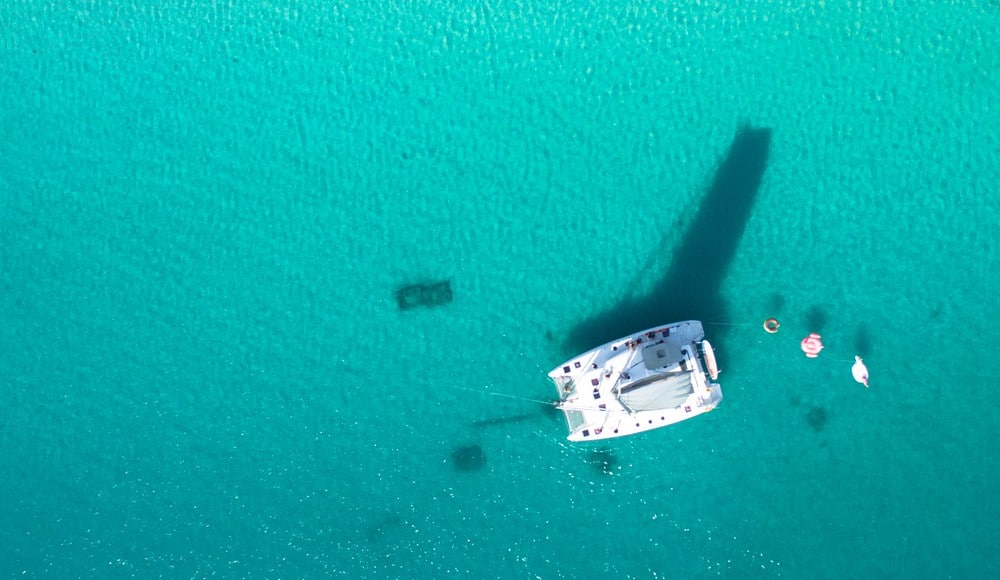
Catamaran Cruising is Different than Sailing a Sailboat— But Why?

Table of Contents
Start Planning Your Catamaran Rental or Sailboat Rental Today!
Catamaran sailing has become more popular with the general public over the past few years, mostly because catamarans are a lot easier to sail than other types of boats, and they can also be a lot safer, especially if you don’t really know how to sail. In the next few paragraphs, we will explain exactly what a catamaran is and what a sailboat is, and also look at some of the ways your sailing experiences might vary when you are using each type of boat. Finally, we’ll look at a few of the types of boats that you can start renting right away through Boatsetter.
Browse Available Catamaran Rentals Near You
A Basic Guide: What is a Catamaran?
Catamarans offer smooth sailing because they lie very flat on the water, and you anchor them in shallow water. A catamaran rental is ideal when you are looking for maximum comfort and relaxation. The most important thing to know about a catamaran is that it has two hulls that are connected to each other by crossbeams. Each of the hulls generally houses a sleeping room. This means there is a lot of individual space, which can make a catamaran ideal for longer rental periods. Some catamarans even feature another level called a flybridge , as well as netting between the hulls. You’ve probably seen pictures like this of people relaxing on the netting while sailing through placid waters.
Choosing a catamaran rental is often safer than choosing another type of boat because catamarans have two engines and two rudders, as well as level decks with wide passageways. These wide, level decks can help those who suffer from seasickness because they can feel more secure on the water. It is extremely rare for these boats to flip over. The only time that might happen is with very high winds, too much sail, and big waves breaking over the boat.
A catamaran rental is an excellent option if you are hosting a large group of people and if you plan to have a lot of food and drink on the boat. Some perfect occasions for a catamaran rental might include weddings , birthday parties, or any other special types of celebrations that involve a large crowd. The most noticeable difference when you are sailing a catamaran is that there is no “heeling”. In other words, the ship remains level on the water most of the time. This makes these types of boats more relaxing and convenient for casual sailors.
A Basic Guide: What is a Sailboat?
Sailboats come in a wide range of shapes and sizes and there is no easy way of defining a sailboat, except to say that it is a boat propelled partly or entirely by sails. Operating a sailboat can be great fun because there is a lot of skill and technical expertise involved in making sure the boat goes where you want it to go. On a sailboat, you can learn new skills or enhance the ones you already have, such as learning how to hoist sails or jibe and tack. Even learning how to tie a new knot can be quite a large accomplishment for a budding sailor.
When you rent a sailboat, it is best to know what you are doing, or if you are an inexperienced sailor, you also have the option of hiring a knowledgeable captain who can help you navigate rougher waters. Among other things, a boat captain will help you troubleshoot any mechanical failures on the sailboat, monitor the weather closely to help avoid a change in plans, act as an expert in an emergency situation, and help you docking/undock or load/unload the sailboat. Sometimes a captain will be able to share local boating and geographical knowledge as well.
If you decide to rent a sailboat, it is best to choose a boat that you are already comfortable with or something only just beyond your skill level. Sailboats up to 18 feet without a motor are generally the easiest boats to control, but even these require at least some level of technical expertise. If you do not have enough experience with the size of the boat you want to rent, then it is best to invite a fellow sailor along on the trip with you so that you have as much experience as possible at the helm .
So Which Type of Boat Should I Choose?
To be an effective sailor, it takes a good mixture of specific knowledge, honed skills, and a natural instinct for the wind and the feel of the boat . The entire sailing experience can be completely different depending on whether you rent a catamaran or whether you rent a sailboat. The motion of each of the boats is different, you have to trim the sails differently, and you also have to deal with lots of other factors that you might not be used to. As mentioned above, catamarans are better for those who perhaps don’t have the same level of sailing skill as other more experienced sailors. If you are really just hoping to enjoy a calm, peaceful cruise without much turbulence, a catamaran is certainly the better choice.
Sailing has a whole glossary of terms that you will need to know if you rent a sailboat. Words and expressions like port , starboard , leeward, halyard, helms alee, rode, tacking, gybing, and eye of the wind are some common sailing terms. We really recommend that you familiarize yourself with boating terminology if you are going to rent a sailboat. Here is a list of 50 basic sailing terms that every beginner should know .
If you seek more action and excitement while you are out on the water, deciding to rent a sailboat is the best option if you already have a fair amount of experience as a sailor. It is important to note, though, that sailboats (especially the bigger ones) can also be very hard to handle in rough weather, so it is always best to try and avoid any types of extreme conditions as much as you can. Again, if you don’t want to take on the responsibilities of captaining your ship, we have experienced boat captains available to do all the hard work for you.
How to Rent a Catamaran or Rent a Sailboat through Boatsetter
Whether you choose to be completely in charge of your vessel or whether you choose to hire a captain on the water, we can help you book an unforgettable adventure on either a catamaran rental or if you decide to rent a sailboat. Boatsetter connects boat seekers with all types of catamarans and sailboats in many locations throughout the USA as well as internationally. Remember, too, that here at Boatsetter, catamaran rentals and sailboat rentals can be booked within a wide range of budgets. To start browsing the entire Boatsetter fleet of catamarans and sailboats, visit Boatsetter and enter in your desired location.

Boatsetter empowers people to explore with confidence by showing them a world of possibility on the water. Rent a boat, list your boat, or become a Boatsetter captain today.
Browse by experience

Explore articles
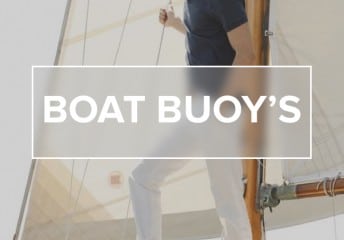
Summer Fashion Guide for the "Boys of Boatsetter!"
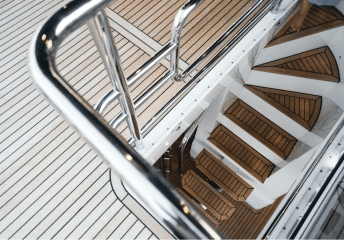
Boat Flooring Options

Labor Day Weekend Boating Guide
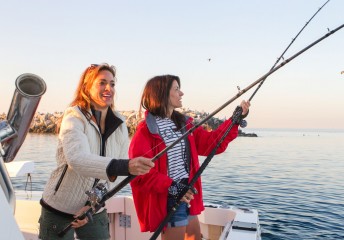
6 Things to Do for your Boating Bucket List

Catamaran vs. Monohull: We Changed, Should You?

There are two schools of thought when it comes to monohull versus catamaran. We have done extensive cruising and lived aboard two monohulls and four catamarans over the past 25+ years . We experienced the good and the bad for both single hull and multihulls first hand. Quite honestly, the pluses for catamarans far outweigh the minuses. There are multiple benefits of catamarans. They are faster, more stable and spacious, and have shallower drafts allowing safer anchorage closer to shore. Being on a stable platform with no heeling cuts down on crew fatigue and seasickness leaving the crew more alert and in control of the vessel. Even novice sailors feel more confident on catamarans.
When we built our monohull Royal Salute in the early 90s, catamarans were not established and were looked upon with extreme suspicion by most cruisers, including ourselves. “Safety and the capsize” issue were always the first things to come up against sailing catamarans. It is a fact that monohulls can get rolled in heavy seas but will right themselves because of the heavy lead keel, and while crew and vessel will be battered, the roll is survivable.
However a catamaran once capsized, will remain upside down (jokingly referring to this state of the catamaran as “reaching its most stable position when upside down”). The inability of a catamaran to self-right was and still is a major bone of contention. However, what is not often discussed is that a monohull has about a 5,000 pound keel of lead that is constantly trying to drag the boat to the bottom of the ocean versus a catamaran that has no ballast and is in most cases with modern catamarans, unsinkable.
So the options are to either sail the world on a boat that, if it springs a leak, will sink like a stone or a vessel that cannot self-right in the event of a capsize but will not sink no matter what. So from a practical point of view, here are our observations over the last 25+ years of living aboard, on the advantages and disadvantages of a catamaran.
ADVANTAGES OF A CATAMARAN
1. speed equals safety.
The speed of a catamaran makes it possible to outrun bad weather. While catamarans do not point as high into the wind as a monohull (or if it does, it makes more leeway or slides sideways), it is about 20% faster than a monohull. This means that even if you sail upwind at a slightly wider angle to the wind than a monohull and have to cover more distance, you will still arrive at your destination long before a monohull.
A modern performance catamaran with daggerboards and good quality sails will point as high as a similar sized monohull. It will point the same as a comparable monohull and sail much faster and therefore arrive at an upwind position much sooner than a the monohull. It is important to note that most of the production catamarans on the market are under-powered and are equipped with standard smaller sails. In lighter breezes many of these designs perform poorly unless fitted with bigger headsails, a Code Zero and a square-top mainsail.
While we believe that more comfortable and safer in rough weather , we have to concede that when the weather gets really bad (60 knots of wind or more) we would personally prefer to be on a monohull from the standpoint of surviving. I would say that a monohull is preferable for serious offshore single-handed sailing because you can more easily hove-to in a monohull. We have been in some extreme weather on a number of catamarans and never really felt that we were in danger, although it takes some nifty seamanship.
A monohull could capsize in extreme weather or even roll in a storm, but they generally come back upright. A catamaran on the other hand, will not right itself. But the cat will generally stay afloat, offering a good place to survive while you wait out the storm or until help comes along. Well-designed modern catamarans are very hard to capsize though.
Having said all that, most catamarans can do 200 to 250 miles a day and with modern technology allowing one to pull down weather at will, there is no good reason why you should get caught in extreme weather. A faster boat is a safer boat as it will in many cases be able to outrun bad weather. With good weather routing information a catamaran can avoid most serious weather and, at worst, place itself in the most favorable position to avoid the brunt of a storm.

2. A Catamaran is a Stable, Safe Platform Underway
Catamarans have no ballast in the keels like monohulls do and therefor it relies on beam and buoyancy for stability. Typically cruising catamarans will have a beam to length ratio of roughly 50%, although many designs nowadays exceed the 50% rule of thumb. So, a 45-ft long catamaran will be about 22-ft wide, providing a very stable platform when sailing. Unlike catamarans, monohulls cannot overcome the rolling and pitching with their narrow beam and the lead ballast for stability.
This rolling and pitching makes the deck on a monohull very unsafe whereas on walking around on the deck of a catamaran while underway is far easier since the boat is much more stable, and it doesn’t heel. This makes sail changes and reefing much easier and a lot safer for the crew. Without the rolling and pitching motion, the danger of falling overboard on a catamaran is considerably less than on a monohull.
3. Crew Fatigue Reduces on a Catamaran
Because a catamaran does not heel over like a monohull, it offers far more comfort underway because the motion is mostly fore and aft pitching and very little beam-to-beam rolling. On all points of sail, a catamaran tracks upright and significantly reduces crew fatigue and seasickness. Seasickness is usually caused by things like anxiety, fatigue, hunger and cold, which all add to a sense of disorientation. This leads the crew to making bad decisions and seamanship errors that could be fatal to the crew and vessel. The more stable platform of the catamaran will hugely keep those issues at bay, making the crew more alert and energized.
Every action and chore including cooking is much easier on a catamaran when underway. It is much more pleasant to be on the deck level looking out rather than being stuck “down below.” It is also much nicer to sleep on a boat that doesn’t heel. I remember nights at sea in our monohull when I was rolling around in my bunk unless I was properly wedge in a little corner. That is simply not the case on catamarans.
All these factors ensure that your crew will not expend unnecessary energy to simply try and stay upright, onboard and safe on a long passage. Your crew on a catamaran will be well rested and alert and will be able to function well if a stressful situation arises.
4. Comfort at Anchor
Catamarans provide a wide platform and therefore offer lovely spaces to relax at anchor without the rolling motion that monohulls have a tendency to do in a swell. During our 15 years of cruising on a monohull, we have often had to leave anchorages that we really were not finished exploring because of a rolly, uncomfortable anchorage. Big rollers or swells coming into an anchorage can make conditions in an anchorage very uncomfortable and unsafe.
We were anchored off Funchal on the island of Madeira in our monohull Royal Salute once, when we were forced to leave our anchorage. The rolling became so bad, we were rolling from gunnel to gunnel. The anchorage became untenable to remain anchored, forcing us to go out to sea in foul weather in the middle of the night. This is an extreme case but believe me, we have left many an idyllic anchorage because of a rolling swell into the anchorage. Catamarans, on the other hand, do not roll from like monohulls have a tendency to do and are far more comfortable at anchor.
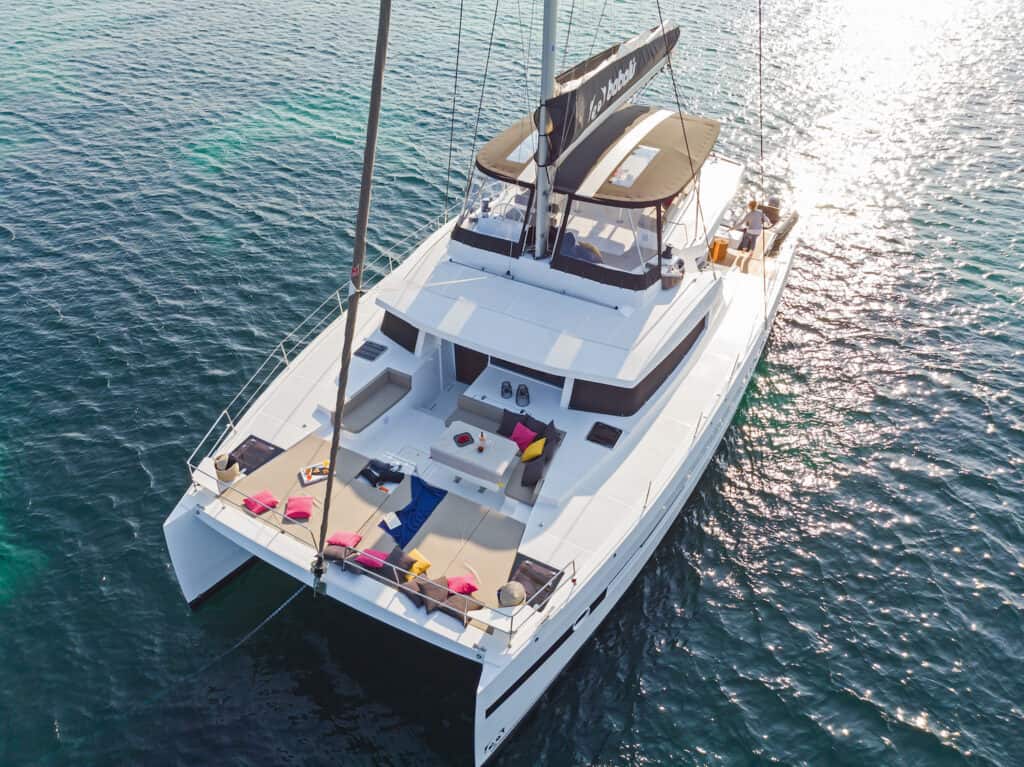
5. Anchor Bridal Setup

Catamarans are fitted with a bridle, attached to both bows and down to the anchor chain, resulting in a very stable position at anchor. What we found with our monohull was that because the bow acts as a sail (because of the high freeboard), the boat tended to sail at anchor in high winds. It sailed in one direction until the chain snatched and tacked over and sailed in the other direction, feeling like it might dislodge the anchor altogether. The catamaran on the other hand sits at anchor a lot more stable and doesn’t sail around as much.
6. Ease of Boarding on a Catamaran
Thank goodness we were much younger and more agile during our monohull days. Royal Salute and most monohulls of her generation or older, have high free-boards, making it quite a feat to get onto the boat from the dinghy. It was one of the most challenging things to do because unlike the more modern monohulls that have a scoop at the back, we had to climb up on the side of the boat to get on and off. We, of course rigged steps, etc. but it was always a hassle compared to the ease of getting on and off a catamaran from a dingy or from the water.
7. Shallow Draft Equals Better Anchorages
Catamarans have significantly shallower drafts than monohulls, allowing for safer anchorages closer to shore. Most catamarans in the 40-ft to 50-ft range draw between 3-ft to 4.5-ft, so they can anchor in places that a monohulls can not even consider. In the shallow waters of the Bahamas for example, the catamarans have a big advantage. We often anchor our own catamaran just a few feet away from a beach. It definitely allows one to be able to explore areas where the water is shallow without the fear of running aground.
The shallow draft also allows for emergency repairs in shallow water and even doing the bottom job when the tide goes out as we have done in places like Mtwapa Creek in Kenya, East Africa. The catamaran easily rests on her keels on the sand without help making it a breeze to do the “annual haul out” even in remote locations.
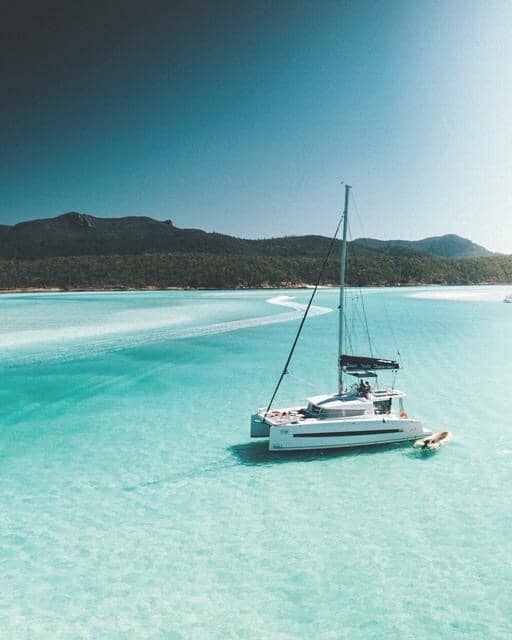
8. Dinghy Davits & Dinghy Size
All catamarans have a set of davits that make it very easy to raise and lower the dingy. Our monohull and most cruising monohulls do not have an efficient or easily accessible set of davits. This makes raising and lowering the dingy an elaborate production. Catamarans on the other hand, has davits systems easily accessible and some even have platforms to rest the dinghy on.
The lack of beam and difficulty of lifting the dinghy also limits the size and type of dingy that one can reasonably carry on a monohull. As we all know, the dingy is your transport to and from shore and diving or fishing spots, so the bigger and faster the dingy, the better off you are. A catamaran can carry both a heavier and bigger dinghy which makes the popular center consul dinghy so much more possible.

9. Interior Space and Comfort on a Catamaran
We sailed 32,000 NM on our 45-ft monohull, happy as clams, not realizing that sailing does not have to be done lying on your ear 24/7 while on passage or sitting knee-to-knee in the cockpit at anchor with your two other guests at the dinner table! One can liken sitting in a monohull cockpit to sitting in an empty Jacuzzi, you are always nice and close to the other folks.
Now that we are on our fourth catamaran, there are a few things that have become more evident to us than the incredible space and comfort of a catamaran, not only at anchor but also underway. The cockpit and living space in general are huge compared to a monohull, making for very comfortable and spacious living conditions. It feels more like you are at home, rather than just on a camping trip.
Knowing that one spends at least 90% of one’s cruising life at anchor, it’s important to have good open living space, which most modern cats nowadays offer. A lot of cats have walk around beds, lots of storage, every modern appliance including washer/dryer, etc. However, one has to fight the urge to fill the space if you want to keep the cat light and fast.

Sailing with guests onboard for extended periods of time, in close quarters can become claustrophobic but on a catamaran people are spread out and separated. With guests sleeping in one hull and the owners in another, catamarans offer much more privacy and separation. Some cats even have privacy doors that will close off the entire hull and has a separate entrance onto the deck, which really separates you from the guests completely.
There is very little heeling on a catamaran, so there is no need for hand grips and safety harnesses inside the boat. There is nothing better (and safer) than being able to walk from the cockpit into the living room (saloon) on one level or one step down at most. In a monohull, when heeling at a severe angle, you would have to claw your way from the companionway steps down to the living area, while fighting to stay upright, significantly tapping your energy.
Unless you hit extreme conditions, everything stays put on a catamaran reducing the anxiety before doing passages of having to stow and secure everything. This very issue makes a lot of cruisers reluctant to weigh anchor and explore more often. It is just too much effort to pack away all your stuff once comfortable in an anchorage!
One thing you will notice is that the stove on catamarans are not gimbaled like it is on monohulls and this should tell the story in itself. The stability and comfort on a catamaran is far superior. Cooking is easy and safer. I often open a nice cold beer, put it down to do something and forget about it only to find a warm beer later in the same place I left it. This is not something that happens on a monohull.
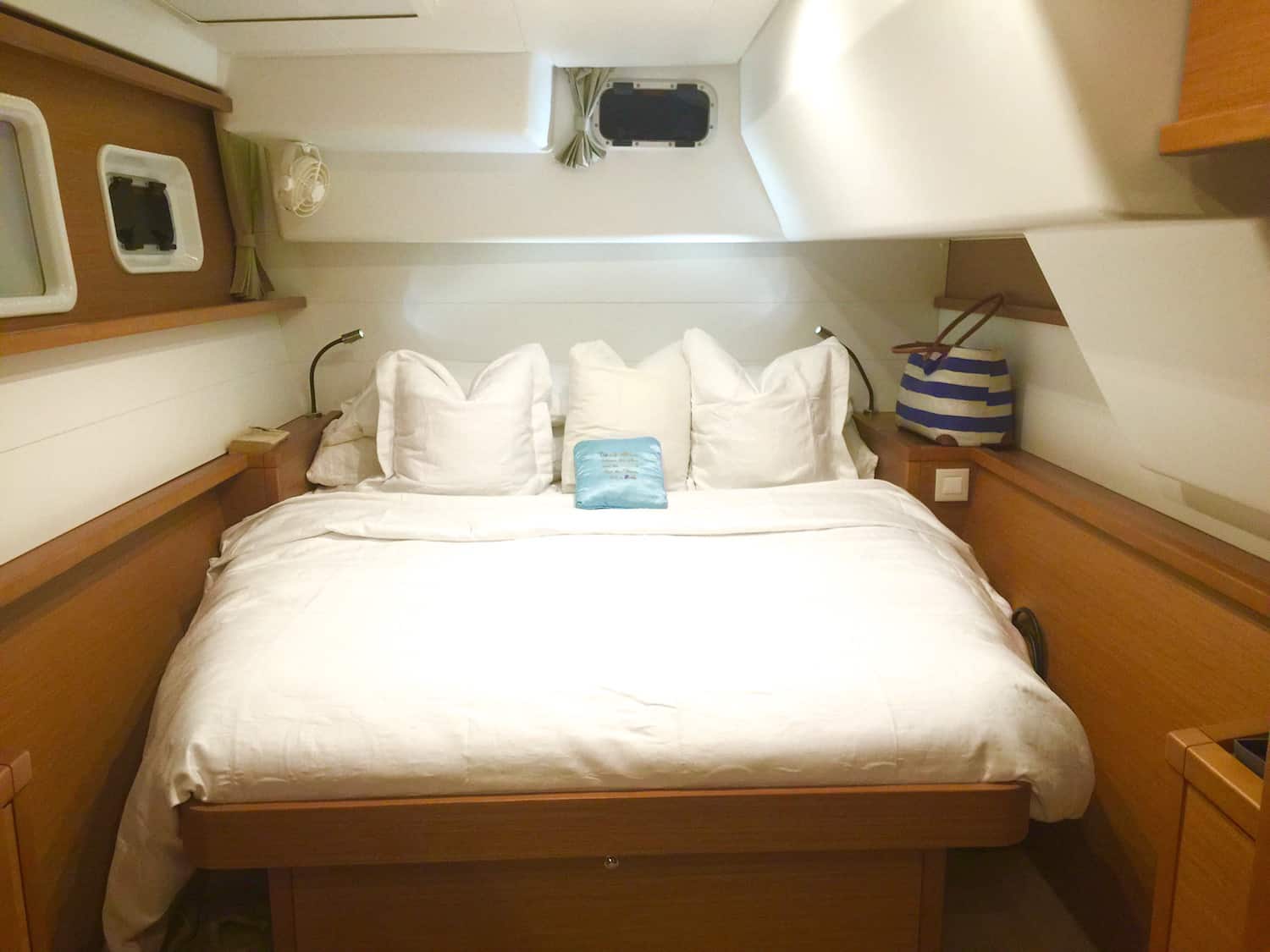
10. Redundancy on a Catamaran
Unlike monohulls, catamarans have a lot of critical redundancies. That of course means two hulls to clean and anti-foul, double the engine maintenance, etc. but having two of the critical equipment like engines for instance, outweighs the downside.
With two engines, if one fails you still have adequate propulsion to go anywhere. If by some fluke the second engine also fails, you have a full set of spares to fix at least one of them. Our friends once hit a sleeping whale off Tanzania, and when it dove, it hit the prop, bending it. They limped into the narrow channel on the one engine but at least they could make it to a safe harbor where we surveyed and repaired their damage.
We often only use one engine when motoring while making passage in order to conserve our fuel. The one engine is totally capable of moving the boat along at a good speed unless you are in heavy seas and you may need more power. Other than that we only use two engines to dock or maneuver the boat in close quarters.
Because there are two engines there are also two independent charging systems via the alternator on each engine. If one alternator goes out, there is still another complete charging system. There are two rudders and if one fails or falls off (as has happened to our friends on a monohull off Columbia, where they almost lost their boat) you have a second rudder that is completely capable of steering the boat by itself indefinitely. That holds true for several things on a catamaran!
11. Maneuverability
The engines are spaced far apart on a catamaran and it makes maneuvering much easier and more precise than monohulls, unless the monohull has a bow thruster. We did not have a bow thruster (not many monohulls do) and had to rely on prop-walk and using prop wash on the rudder. A modern catamaran can do a 360 turn on her own axis. A monohull cannot do this and have a bigger turning circle. However, a monohull under sail is much more maneuverable and certainly will tack a lot faster than a catamaran. The ease in maneuverability under engine on a catamaran in close quarters specifically, is vastly superior comparatively.
12. Rigging
Because of the beam on a catamaran the spinnaker pole has become unnecessary equipment. Hallelujah, I say. That pole on our monohull was a pain the behind and I always hated having to use it. On a catamaran, one can fly an asymmetrical cruising chute or spinnaker, using the bows to tack the clew or run a guy through a block so it is very much simplified, easier and safer.We also sail wing-on-wing with twin headsails when we sail downwind. We use our furling jib and furling Code Zero. It is as easy as one, two, three.
DISADVANTAGES OF A CATAMARAN
1. bridgedeck slamming.
One advantage most monohulls do have when underway is that they don’t slam. Catamarans with a low bridgedeck clearance can experience significant slamming in confused seas sailing upwind. This slamming can be quite disconcerting when you first experience it as we did on a Shuttleworth 44 design, our first ever catamaran experience, 20+ years ago. At times, it felt as though the boat was falling apart. Of course the boat was fine but nevertheless, the stress on the crew from the constant noise and discomfort was significant.
Monohulls don’t have a bridgedeck which means no slamming and are therefore a bit more comfortable than l ow bridgedeck catamarans when beating into severe confused conditions or “washing machine” conditions as we call it. Modern catamarans mostly have better bridgedeck clearance and the slamming is significantly less. However, not all cats have a good clear tunnel under the bridgedeck. Some manufacturers build beds into the bridge deck in order to make more space in the chest of the catamaran where the slamming occurs. These protuberances into the bridgedeck tunnel will likely increase slamming. So be mindful of that when selecting a catamaran. We currently own a Bali 5.4 and the bridgedeck clearance on this boat is more than adequate and the tunnel is clear. We therefor experience very little slamming compared to our Prout 45 that we previously owned (picture of sister ship below) with a much lower bridgedeck.
We Explain Bridgedeck Clearance
In the pictures below, the Bali 5.4 has very good clearance from the water to the bridgedeck and has a nice clean tunnel versus the very low bridgedeck of the Sunreef 50.

2. Sailing Downwind
Monohull spreaders are set at 90 degrees to the mast whereas a catamaran has to have backswept spreaders. The reason is that, on a monohull, there is a backstay and using this, plus the intermediates you can get a nice pre-bend in the mast (the pre-bend is to flatten out the main sail and allow for better performance).
On a catamaran with no back stay, you need to use the back swept spreaders and the diamonds to pre-bend the mast. The reason I point this out is because on a catamaran, if you want to broad reach or run, the mainsail cannot be let out all the way because the backswept spreader tips could punch holes in the fabric.
On a monohull, the spreaders are at 90 degrees so you can let the main and the boom out much further which is, of course, much more effective. This is one of the reasons it is better to broad reach and tack downwind on a catamaran.
Whether a monohull or multihull, sailing dead downwind doesn’t usually make great VMG. Therefor a regular cruising cat, much like a monohull, needs a lot of sail area and has to sail deep downwind if it is to achieve a decent speed made good (VMG). This video demonstrates how we achieve this by sailing wing-on-wing downwind.
It is more difficult to find a dock either as a transient or a permanent slip for a catamaran in general because of the wide beam. But this is changing fast and will soon not be too much of an issue. In the USA dockage is charged by the length of the boat in feet, so there is no disadvantage there but, in some places, (the Mediterranean for example), dockage is charged at length times one and a half because of the additional beam.
Since the catamaran is stable at anchor, we mostly anchor out. We have more privacy, a better breeze and usually a stunning view.We have a nice dinghy with a good outboard engine and is big and comfortable enough to get to shore fast and together with the modern conveniences like the generator, watermaker and washer/dryer, docking becomes a non-issue.
It is definitely more difficult to find a travel lift with enough beam for a catamaran for a haulout, while, for a monohull, there are absolutely no problems anywhere. The wide beam of cats also greatly limits the number of shipyards that can haul them out. Most catamarans over 40-ft must be hauled out with a 50-ton travel lift. This not only increases the cost of the haulout, but greatly limits the choice of the shipyards for repairs and maintenance. With limited choice, prices are high for shipyard services.
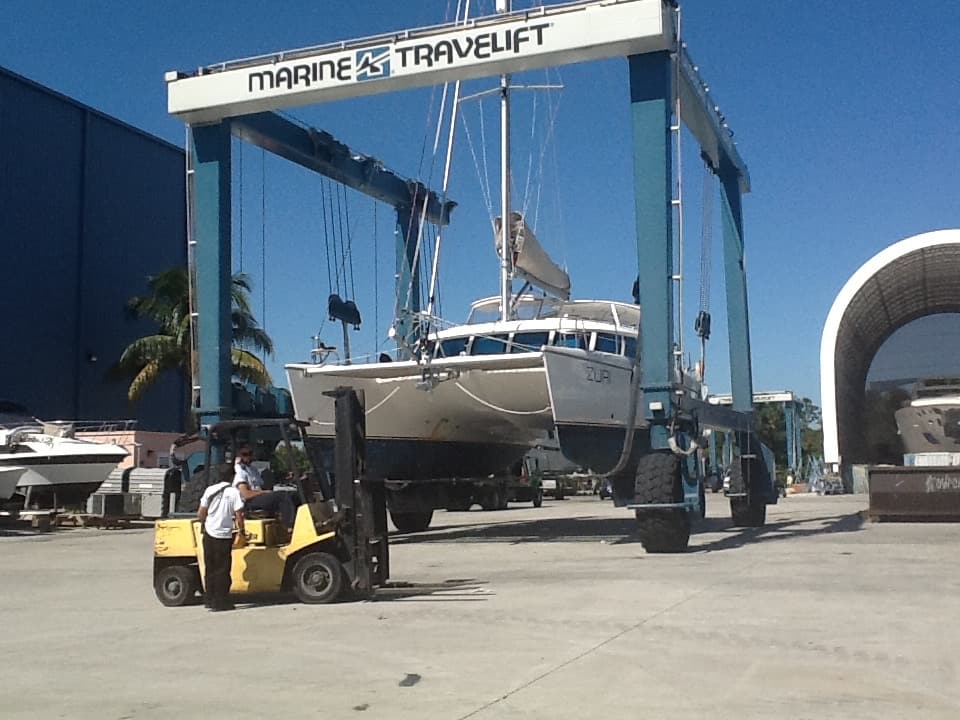
Catamarans do tend to have a lot more windage than monohulls. This can be an issue especially when maneuvering in close quarters with a strong wind. But I have found that, provided the engines are powerful enough for the size of catamaran, that twin engines negate this problem. Also, many modern large catamarans now have a bow thruster fitted. It is super easy to dock.
The cost of getting into a catamaran is much higher than that of monohulls. That could put a serious dent in your cruising kitty or require you to put your dream on hold a little longer. Pre-owned monohulls on the other hand are very cheap to buy comparatively, because the supply presently far outweighs the demand.
Catamarans are in high demand and they typically hold their value much better and longer and the trend is now heavily in favor of the catamaran market. When prospective buyers contact us for catamarans under $250,000 the choices are very limited and catamarans under $100,000 is near impossible to buy. In this case, your best bet is to go with a monohull unless you go with much older boats like the Prouts or the less expensive Geminis.
Our Own Catamarans & Monohulls
FYI: Royal Salute , a Bruce Roberts 45 monohull, was the first boat we owned and sailed approx. 30,000NM on. Mythral, a Seafarer 30, was our “toy boat” while we were waiting for our catamaran to be built. Even though this classic little monohull sailed around the world, it didn’t have much in modern conveniences like running water. Siyaya was an Island Spirit 40 catamaran that we sailed from Cape Town to Florida on and then taught live-aboard sailing classes for several years. Zuri I was a Prout 45, a beautifully crafted catamaran but by today’s standards is considered old technology. Our Lagoon 450 SporTop ( Zuri II ) is a fantastic live-aboard catamaran. We lived and taught aboard her for three years but sold her last year and we currently own a Bali 5.4 ( Zuri III or Z3 as we call her now). Read about our various boats .

CONCLUSION: CATAMARAN vs MONOHULL
We were dyed in the wool monohull sailors for 15+ years. We loved the pretty lines of monohulls, the sailing ability and what we believed at the time to be much safer vessels. However, now that we have been avid catamaran enthusiasts, we simply can never go back to monohulls. Catamarans have come of age and with modern technology have overcome most objections that sailors of old had against them. They are well designed and built, are safe, and we simply love that they sail fast and upright. There is not a whole lot to dislike about a catamaran when you live aboard. We have weighed all the pros and cons of catamarans and found that the pros far exceed the cons. We made the change to a catamaran and do not regret it one bit!
We hope that this article will clear things up for all the prospective catamaran owners out there.
Contact us if you have any questions regarding catamarans, Fractional Yacht Ownership or our Charter Management Programs .
Estelle Cockcroft
Join our community.
Get the latest on catamaran news, sailing events, buying and selling tips, community happenings, webinars & seminars, and much more!
4 thoughts on “Catamaran vs. Monohull: We Changed, Should You?”
I read that the engineering on the catamarans were improved over the years. Whats the oldest year would you recommend designwise?
Scott, my apologies for the late reply. We’ve been traveling in Africa. Anyway, catamarans have come a long way and improvements in technology is happening at lightning speed. I reckon that even the older model catamarans are good. It depends on what your needs are. If you want something a little better performance wise, I would go for something no older than 15 years.
After buying a catamaran what is the difference in expense of a catamaran vs a monohull. Many articles state that not only the initial cost of a catamaran is more it the operating cost as well.
Hi Todd, it is more expensive. The annual dockage and haul out as well as maintenance will be more expensive. You obviously have two engines to maintain and various other pieces of equipment to service in both hulls. While there is more equipment there is also more redundancy and of course you have the comfort factor. So, depending on your situation, it’s probably worth it.
Leave a Comment Cancel Reply
Your email address will not be published. Required fields are marked *
Save my name, email, and website in this browser for the next time I comment.
Recent Posts
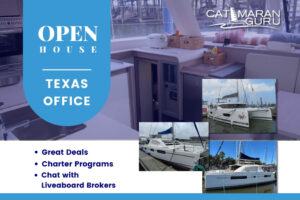
Texas Open House
Join us April 13 – 14 for our open house at our Texas office during the

First-Annual Virgin Islands Boating Exhibition (VIBE)
VIBE – It’s a Destination Boat Show! Join us May 10 – 12 at
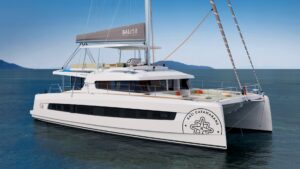
BALI Catamarans Unveils The New Bali 5.8 Flagship
CATANA GROUP launches its 14th BALI CATAMARAN model, the BALI 5.8, for the brand’s

Love Stories At Sea…because it’s valentine’s day
Because it’s Valentine’s day, we wanted to celebrate all the couples that we helped

For more than 30 years, we have been a part of the catamaran community and created Catamaran Guru™ to encourage and educate all the aspiring sailing out there. We understand the dream of traveling the world by catamaran and created a one-stop-shop to make that dream a reality for you.

- Stephen & Estelle
- Testimonials
Get Started
- Yacht Sales
- Used Yachts
- Charter Management
- Boat as Business Programs
- Seminars & Events
Click on the button to load the content from www.googletagmanager.com.
Load content

- Tailored Vacation Planner
- Cabin Yacht Charter
- Family Sailing Holidays
- Romantic Sailing Vacations For Couples
- Sailing with friends
- Greece all inclusive yacht charter
- Croatia all inclusive yacht charter
- Food & Wine Routes
- Yacht search
- Luxury sailing
Sailboats vs. Catamarans: What’s the Difference?
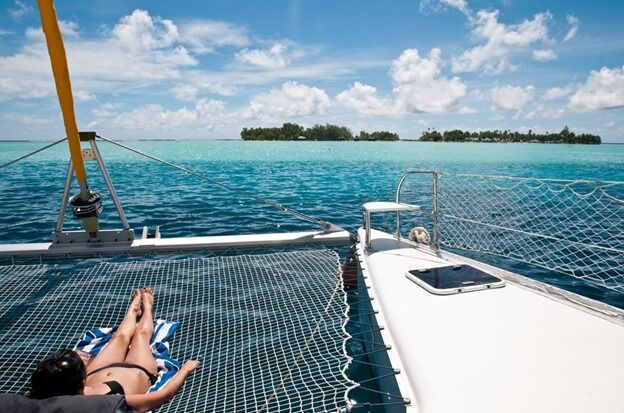
If there is one debate that never ends in the sailing world it’s one about sailboats and catamarans. And there are fans on both sides.
Some people just love monohulls and some can’t get enough of those good old catamarans. Both groups have very strong arguments and both types of vessels have advantages and minor disadvantages.
This fierce sailing debate will continue as long as there is the sea to sail on, so it’s better just to stay beside and hear what they have to say. Most of them certainly agree that a lot of ‘arguments’ come from personal taste and preference .
On the other hand, most of the arguments are hard facts. Nonetheless, this debate will maybe help fellow navigators to choose the perfect boat for rent .
For a better understanding of the space that a catamaran or a sailboat offers we prepared a layout for you:
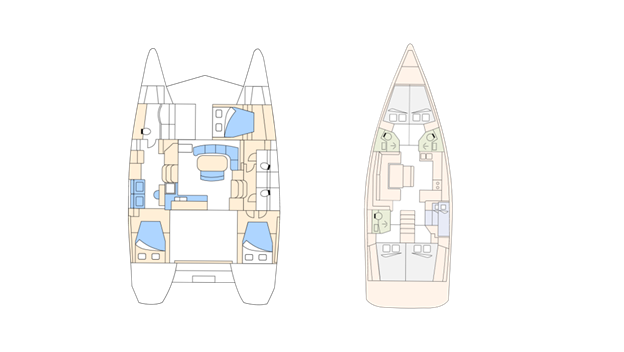
Advantages and disadvantages Sailboats and Catamarans
Stability & safety.
The first thing that interests future navigators is stability and accordingly, safety. And when talking about stability, we are talking about healing.
Everybody agrees that heeling is very small on catamarans because of their shape and weight-bearing. Monohull lovers argue that because of this stability sails cannot heal themselves, the hulls are straining and this makes the voyage noisy.
They also say that heeling on the sailboat actually helps stability and spills gashes of wind out of sails.
When speaking about safety, the main argument for catamarans is that they are unsinkable.
Sailboats can sink, but very rarely can capsize, because they have better abilities for straightening.
Those who love catamarans say that is better to capsize than to sink, but another side argues that when you’re capsized, you’re pretty much done.
Straightening ability gives a chance to fight with waves. Tough arguments on both sides.
Can’t make up your mind?
Get in touch with us for additional information!
- Contact us today
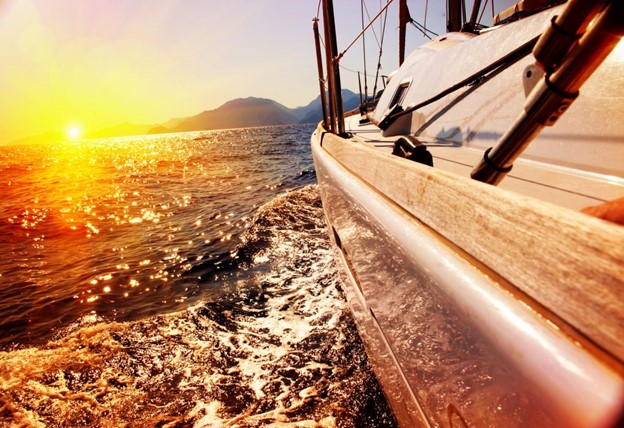
Speed & handling
When it comes to speed, catamarans are certainly faster than sailboats. It is because more surfaces of monohulls are below the sea level and therefore the resistance of the sea is much higher.
A lot of people agree that riding with catamarans is more uncomfortable than with sailboats because of the hydrodynamic design of sailboats which fits with the sea.
In all fairness, both of those are extremely comfortable, these are just minor details.
When talking about handling, the thing that goes in favour of catamarans is two engines, which can work separately for better manoeuvring. Also, catamarans have a more shallow draft which is good for shallow bays and coves.
Strong arguments for sailboats are that they can make easily sudden and sharp turns and can be handled without problems in narrow straits.
Maintenance & Price
When maintenance is considered, catamarans are more expensive because they are bigger and have ‘two of everything.’
The good thing is that catamarans can run on half power, which means, if one engine doesn’t work for some reason, you can still go out sailing.
With a sailboat, you cannot do that. Repair costs are significantly lower for the sailboat and the price of the new boat altogether.
But catamarans look good on the market, and there is a great demand for them, so if you paid a lot of money for a catamaran and now you think you cannot handle it, you can sell it very fast.
Even better, it’s always an elegant solution to put it in rent. It will pay out its value in no time because there’s always clientele who wants to rent a catamaran .
Of course, you can do the same with the sailboat. Perhaps rent is the most elegant solution of them all because you can enjoy sailing without worries about maintenance.
Who is the winner – the sailboat or the catamaran?
In the world of navigation, there are often conflicting opinions about which is better, a sailboat or a catamaran.
This article presented to you opinions from both sides, but all that matters is that the reasons are mostly subjective. The best way to decide is to compare both of them and then choose which of these two suits your needs.
We offer a wide range of different types of boats to rent and if you need help with your choice between a sailboat and a catamaran, don’t hesitate to contact us!
Share article:
Have a question.
We have answers to your questions. So don’t hesitate to get in touch with our team today!
- GET MORE INFO
Feel free to ask us anything. All hands on deck. Let's sail
Thank you for sending us an inquiry, thank you so much for your enquiry.
- First time on a catamaran: what you need to know
During your captain training, you'll have learnt how to manoeuvre a monohull sailboat . But what about when you have the opportunity to sail a catamaran? Find out everything you need to know, including differences from monohulls, important factors to consider, pros and cons, and recommended destinations and catamaran models. If you're new to catamaran sailing, this is the perfect guide for you.
5 reasons to rent a catamaran
What are the main reasons why someone decides to sail on a catamaran? Here are the top benefits of choosing this type of boat.
1. Stability
The double hulls of a catamaran provide exceptional initial stability, allowing it to remain afloat and stable in rough waters and wind. If you're looking for a smooth and peaceful sailing experience, especially with small children or seasickness-prone individuals, a catamaran is a great option. It's perfect for taking along your grandma or a nervous friend who's never been on a boat before.
YACHTING.COM TIP: Getting seasick is not only a major worry for novice sailors, but also holidaymakers on a boat trip. But it even can affect experienced sailors from time to time. Those with darker humour say it has two phases — in the first phase you become so sick you're afraid you're dying, and in the second, you're afraid you're not going to. The important thing, though, is to understand why it happens and try to prevent it. Although you'll significantly reduce suffering from seasickness on a catamaran, what works best if it does occur? Find out in our guide — How to cope with seasickness .
A catamaran offers more space than any other boat of similar length. With spacious saloons , plenty of seating and lounging areas , and ample sunbathing spots (such as the netting known as the trampoline ), you'll never feel cramped. The cabins are roomy and the bathrooms are as big as those in many apartments. People who dislike tight spaces or value their privacy will find a catamaran ideal. On larger models (50+ feet), you'll have so much space, you may have trouble finding each other. Despite its comparable length, a catamaran always feels larger than its monohull counterpart. If you're used to a 50-foot sailboat, try a 45-foot catamaran and you'll still feel like you have more space.
3. Amenities comparable to a hotel room
Not only are the cabins spacious, but they are also comfortable and cosy. They usually come equipped with high-quality bedding, pillows, shelves, reading lamps, and more, making them feel like a proper room. That's why we wrote an article highlighting 9 reasons why a sailing holiday is better than staying at a hotel and it's doubly true with a catamaran.
4. Added extras
Catamarans often come equipped with the latest technology and gadgets. These include solar panels, generator, a seawater desalinator, a modern plotter with GPS, and autopilot . These will make you more self-sufficient at sea without needing the facilities of a marina as often.
5. Shallow draft
The reason why catamarans are so popular with sailors, especially in exotic countries , is the very shallow draft — 0.9 to 1.5 metres, depending on the length of the vessel, which means skippers don't have to concern themselves so much about hitting the seabed. While caution and monitoring charts are still necessary, it provides greater freedom in choosing anchorage spots, allowing you to sail almost right up to the beach and anchor to enjoy the peace and tranquillity.
Only small fishing boats can get as close to the shore as catamarans.
Check out articles about other boats and boating gear
Advanced sail trim techniques
The ultimate yacht cleaning kit
The most popular catamarans of 2023
How to sail a yacht on a tailwind
How to sail a yacht in crosswinds
Götheborg: the greatest sailing ship
New boats for rent in 2024
Sail trim 3: become a pro
Sailing through time: a history of sailing ships
Catamaran vs. sailboat: the main differences.
Sailors have differing preferences, with some sticking to single-hulled boats and others preferring catamarans. In fact, which is best has been a hot topic since sailing began. This makes understanding the benefits and drawbacks of each hull design essential so you can make your own choice.
1. Rental price
One major drawback of catamarans is their higher cost on the charter market. Single-hull sailboats can be rented for 1,000-2,500 euros per week, while a well-maintained catamaran typically starts at 3,000 euros per week. However, this may not be the case for all models.
YACHTING.COM TIP: If you want to save money on your catamaran charter, we recommend booking it in advance. Check out our 8 reasons why Early Bird deals are the best way to rent a boat .
2. Capacity
The higher cost of catamaran charters is offset by the extra space, comfort, and capacity — it can often hold up to 12 guests comfortably. This results in a per-person cost comparable to sailboats and cheaper than coastal hotels, making them popular for island cruising and party boats. However, for a safe and responsible party experience, we recommend checking out our guide — How to enjoy a party on a boat: 10 tips to keep your crew and your boat safe .
YACHTING.COM TIP: Never exceed the maximum capacity of the boat. And remember that even small children count as crew members.
A large crew can comfortably sail on a catamaran
3. Port charges and marina fees
Keep in mind that having two hulls means a wider boat, leading to higher docking fees . This increased width can take up more space than two smaller sailboats. However, the cost per person can be offset by the fact that more people can be accommodated.
4. Speed vs. consumption
Catamarans typically feature two high-powered engines , making them faster than similar-sized sailboats. Even without the power of the wind, you can be flying across the waters and with a better fuel efficiency than motor boats.
Catamarans typically have two basic sails: the mainsail and the foresail and operating them follow similar principles as on single-hulled sailboats. Self-tacking jibs can also be used, reducing the work required to trim and manoeuvre the sails.
For those looking to enhance their sailing experience, a gennaker can often be rented with the catamaran, providing added benefits, especially in light wind conditions. Take a look at our 5 reasons to rent a gennaker .
6. Flybridge
This elevated deck is a common feature on catamarans. Here you'll find the helm station and sometimes additional seating or lounging space. It is a valuable addition that provides extra living space on the boat.
The catamaran's second deck provides another spot to sit and enjoy views of the ocean
Who is the catamaran suitable for?
Catamarans are the preferred choice for a group of friends wanting a laid-back holiday on the water but are also popular for corporate team-building events and specialised stays like yoga. As their spacious deck provides a safe play area for children , they are also ideal for multi-family vacations.
YACHTING.COM TIP: If you are sailing with small children, safety is paramount. So, check out our guidelines for safe boating with kids , our article on how to survive on a boat with kids , the Skipper mom logbook: sailing with a baby and always try to stick to the 4 essential tips for smooth sailing with kids . If you don't have kids or don't want to bring them along, why not take your four-legged friend? Catamarans offer ample space for dogs to run around, and following these 7 tips can help make your pet a true sea dog.
On the other hand, we wouldn't suggest a catamaran to sporty sailors to chase the wind in, as the catamarans for charter aren't intended for racing or regattas. Due to their design, they have limited upwind capabilities (sailing boats can sail up to 30° wind angle, while charter catamarans can only handle up to 50° to 60° wind angle), making them unsuitable for competitive sailing.
YACHTING.COM TIP: If you have doubts about your ability to safely operate the boat, consider hiring a skipper. We can arrange a skipper for you who is knowledgeable about the area and can take care of the navigation for you or teach you any sailing skills you may be lacking. Remember when planning that the skipper will occupy one cabin or berth in the saloon.
Specifics of sailing on a catamaran
The principles of sailing a catamaran are similar to those of a monohull sailboat, but there are some differences to keep in mind. These may have already been covered in your captain's training course.
Travelling on the engine
A catamaran has two motors , each of which can be controlled separately using its own throttle control. Want to turn on the spot? That's no problem at all with a catamaran — simply add throttle with one motor and reverse with the other. Once you get the hang of this trick, you'll no longer need a bow thruster, although catamarans are sometimes equipped with one. This makes docking your catamaran a breeze compared to single-hulled sailboats.
Travelling on the sails
Sailing varies mainly in what courses you can sail and how strong the winds are. Most charter catamarans perform best on courses at 50 to 60 degrees to the wind. This is a greater angle compared to sailboats. So be prepared to have to adjust your planned route.
If you sail a sailboat too hard, the boat itself will tell you that you've over-steered by heeling. A catamaran won't do that, so you have to be very attentive to when to reef the sails. Usually, you will put in the first reef at a wind speed of 18 to 20 knots and the second reef at 23 to 25 knots.
Best destinations for catamaran sailing
In addition to the more traditional locations of Croatia , Greece , Italy , Spain and Turkey , we rent catamarans all over the world. In these destinations, you appreciate plenty of space , comfortable access to the water via steps, stability on the waves and amenities such as a barbecue and air conditioning .
However, catamarans are perfectly suited for more exotic destinations . In remote locations, the low draft comes in particularly handy as the seafloor is often poorly charted and the beaches are stunning. The large water and diesel tanks, along with an electricity generator, a desalinator to produce fresh water from seawater, and solar panels are especially useful in exotic locations where the yachting infrastructure is less developed. These features help sailors to be self-sufficient and avoid the need to find a dock every few days.
Popular destinations for catamaran sailing include the beautiful Seychelles , Thailand , French Polynesia and the Caribbean (Grenada, St. Lucia, Martinique, Antigua, St. Martin, Cuba , British Virgin Islands, Bahamas, and Belize).
YACHTING.COM TIP: Don't be apprehensive about sailing to more tropical destinations! Check out our guide to exotic sailing holidays . If you are headed to these warmer climes, you will need to find out when the rainy season or the hurricane season starts.
Views in the Caribbean are picture perfect
The most popular catamarans
Popular charter catamaran brands include Lagoon , Bali , Fountaine Pajot , Nautitech , and Leopard . These are the models that have received positive feedback from our clients for years and that we confidently recommend.
The Lagoon 380 offers a true sailing experience, or the larger Lagoon 46 , where you may end up spending the whole morning lounging in its spacious cabin.
The Bali cat space provides amazing seating up at the helm.
The Fountaine Pajot Elba 45 where you'll enjoy relaxing at the bow on the seating or the trampoline.
The Nautitech 46 with its huge saloon.
The Leopard 45 with its gorgeous bright interior, or the Leopard 50 that's so luxurious, you'll feel like a king.
YACHTING.COM TIP: For the discerning sailor, the Lagoon 620 and Dream 60 large catamarans are also worth mentioning. However, it's important to note that most captain's licenses are not valid for these giants and you'll need to hire a professional skipper.
Special types of catamarans
Catamarans have been around for quite some time, leading shipyards to continuously innovate and create new models with unique features and characteristics. So, what are some of them?
Power catamaran
The popularity of power catamarans has been increasing lately due to the fact that they provide the stability and spaciousness of a catamaran without the need to handle sails.
Do you believe that more is always better? Not satisfied with just two hulls? Then we have a unique chance for you to rent a trimaran , a three-hulled catamaran that offers an unparalleled sailing experience. Trimarans are still rare, so you're sure to attract attention wherever you go.
All catamarans in our offer:
Not sure if you want a catamaran or a sailboat no problem, we'll be happy to assist you in finding the perfect vessel. just let us know..

Denisa Nguyenová
Faq sailing on a catamaran.
What are the main differences between a sailboat and a catamaran?
- Number of hulls = stability
- More space = higher passenger capacity
- Higher charter and port charges
- Speed per engine

Catamaran Or Monohull? 27 Important Facts (Explained)
Catamarans and monohull boats are two very different kinds of vessels. Each craft offers distinct advantages and disadvantages that you’ll want to consider before choosing between the two.
In this post, we’ll go over some of the important things to consider when choosing between catamarans and monohull boats:
Table of Contents
Cost & Availability
Both catamarans and monohull boats come in small recreational sailing versions, larger motorboat versions, and larger sailing models. In all cases, the catamarans will cost more and will be harder to find.
The reason catamarans are harder to find because there are not as many of them, and they’re mostly made overseas.
Also, there aren’t as many catamaran manufacturers, so sailors have fewer options when buying them.
On top of this, catamarans have only recently become popular in the United States and other areas of the developed world. This means the used market for boats doesn’t have as many catamarans on it. You might find that you have fewer options when making a used catamaran purchase, which could bring costs up to a premium.
Two Times The Fun with Catamarans

Another reason that catamarans are more expensive than monohulls is the fact that catamaran buyers have to purchase two hulls, two engines, and two of all of the components that help make an engine work.
Traditional sailboats and large powerboats with one engine don’t have this cost issue.
On top of this, a catamaran is much wider than a monohull, and thus you have more space to build and equip.
On the other hand, once you’ve purchased the boat, you do get to enjoy the benefits of having two of everything. We’ll talk about the advantages of this further down in this post.
Maintenance Cost Makes A Difference
The maintenance on a catamaran is also more expensive than the maintenance on a monohull boat. This goes back to the fact that there is twice as much of everything to maintain.
Catamaran owners will need to do preventative maintenance on two different engines, and they’ll have two hulls and a large deck area to clean and maintain as well. If they’re getting the bottom of the boat treated, they’ll have to do this twice (once for each hull).
Even the interior components can usually be found twice.
Each cabin will usually have a head in it, so you’ll have at least two toilets and sinks to maintain, which obviously has its plusses and minuses.
One positive aspect of this is that catamaran owners do have the option of deferring some of their maintenance. For example, if one head is no longer functioning properly, you always have the second one that you can use.
It also adds a bit of safety as well.
This is because while the catamaran does have two engines to maintain, the owner does have power even if one of the engines happens to go down.
Some catamaran owners also like to point out that maintenance may not have to be done as frequently. This is because the engines don’t have to work quite as hard, and other items like additional bathrooms and sinks might only be used half as much.
How Much Space Do You Need?

A catamaran has more space than a monohull. This is because the boat is wider, and it has a much larger deck area. It also has twice as many hulls, so you have more overall space between the two of them.
The additional space is great for people looking to throw parties on their boats.
Most boat owners would agree that the catamaran is usually the party boat of choice at the docks.
Even if you aren’t into throwing parties, the extra space can still be nice for relaxing on the deck or getting a suntan. The wide-open space also makes it easy to use the boat as a fishing platform.
Additionally, you have more space for stuff like surfboards, rafts, and other items that can easily clutter up the deck of a monohull. Even fishing can be easier from a catamaran as the deck provides plenty of space between different anglers.
Catamaran owners also have additional space for carrying fresh water and adding generators and solar panels.
Interior space is generally more plentiful on a catamaran, and luxury catamarans have an easier time fitting large items like washers and dryers inside of them. You can have these on larger monohulls as well, but it will be harder to make them fit than it is in a catamaran.
On the other hand, all of the additional space means the catamaran owner has more space to maintain and clean. Also, all of the additional items that can be brought onto the boat will make it heavier. A heavier boat will use more fuel, and it will travel more slowly.
Living Quarters Vary Between The Two
The living quarters on a catamaran are much different than they are on a monohull. Most people would agree that the berths in a monohull are much more spacious than in a catamaran.
A monohull offers people the opportunity to have a large bed with space on either side to walk around it. This is great for couples who want to get out of bed without waking up their partner.
Catamarans, on the other hand, have the advantage of being able to offer large above-deck salon areas. The galleys, the dining areas, and the living areas can all be above-deck, while the two hulls can provide heads and berths.
Some boat owners say that living in a monohull is akin to living in a basement apartment . Other boat owners prefer the monohull because it brings them closer to the water and gives them the feeling of being at sea.
Privacy Can Be Prioritized On Catamarans
A catamaran offers up many different living areas that people can take advantage of. For example, each hull will typically have its own bathroom and bedroom.
This gives each sleeping area complete privacy from the other.
The living quarters are usually up on the deck, so early risers can wake up and move to these quarters without waking up the others.
The same holds for night owls. A night owl can stay up late without bothering the people who want to retire to their beds earlier.
With two hulls, large catamaran owners can hire a crew and give them their own hull to live in so that there is separation between the cruisers and the crew. This is a wonderful advantage for honeymooners looking to have their own space.
The downside to all of this, of course, is that sometimes a family may not want the additional privacy. For example, a family with small children might not want their children in a different hull than they are.
Additionally, the extra privacy can make it hard for people on the boat to communicate. This could become a big problem in the event of an emergency.
For this reason, it is often recommended that each hull have a radio in it so that the occupants can quickly communicate with each other. Remember, even in inland areas, cell phone reception may not be very good inside the boat hulls.
Recreation In a Monohull vs. a Catamaran
Most sailors agree that sailing a monohull boat is much more exhilarating than sailing a catamaran. Traditional sailboats heel, and sailors get instant feedback while they’re sailing. For the most part, catamarans stay stable, and you don’t get the same feeling with the movement of the wind and the water.
When it comes to monohull powerboats, you have the advantage of being able to pull water skiers, kneeboarders, and tubers with ease, as long as the boat has the power and a planing hull. A power catamaran usually doesn’t have the speed or maneuverability to pull off these recreational opportunities because they are displacement hull designs.
Catamarans excel in more leisurely recreational activities. A catamaran makes a great party deck as well as a great cruising deck. Catamaran owners can comfortably walk around a catamaran without having to worry that the boat might knock them over the next time it decides to heel. This allows boaters to sit and talk with one another comfortably.
A catamaran can also be used as a beaching vessel. This makes it a great platform for people looking to go swimming or fishing around sand bars and other shallow water areas. It also makes it a great boat for sailors looking to sail a larger boat on a river or lake known for having shallow areas.
Swimming and Diving
Swimming and diving off of a catamaran are usually much easier than doing the same from a monohull. The wide stance of the two hulls offers boat designers the option to put in staircases at the back of both hulls.
In between these staircases, some boats will have an additional diving platform and/or a dedicated frame for pieces of equipment and dinghy storage. This makes catamarans great for swimmers, snorkelers, and divers.
On the other hand, modern monohull sailboats can also have good transom stairs for easy access to the dinghy and swimming. Both types of boats can easily travel far out to sea, giving boaters the option of diving in areas that can’t be accessed from beaches and developed areas.
Boat Draft In Shallow Waters
For the uninitiated, the boat’s draft refers to how deep the boat’s hull sits within the water.
A monohull typically sits deep within the water, while a catamaran sits much higher on the water. This is why we stated that a catamaran is good for shallow waters.
The advantage of having a boat that can go into shallow waters isn’t restricted to just recreational activities like swimming and fishing. A boat that can go into shallow water is safer to operate in areas where a boat with a deeper draft might become damaged.
Additionally, a catamaran has more stability on calm waters. This helps make a catamaran more comfortable to relax or sleep on while at anchor or the dock.
The deeper draft of a monohull boat has its advantages as well. A deeper draft provides more stability in rough waters and allows a boat to go further into the sea.
For this reason, many coastal cruisers will prefer catamarans, while many ocean voyagers will prefer monohull boats. In fact, some areas of the Caribbean and the Florida Keys can be off-limits to boats with deep drafts as it simply isn’t safe for the boat to navigate these waters.
This isn’t to say that you can’t navigate these waters in a monohull boat, but you will have to be cautious depending on how deep your monohull’s boat draft is. You wouldn’t have this issue in a catamaran.
Stability On The Sea

A catamaran offers a lot more stability in shallow waters, in calm waters, at the dock, and anchorage. This makes the boat great for cruising and for relaxing in port.
A monohull offers a lot more stability in rough waters.
This makes this boat great for heading out to sea and for navigating vast distances.
Safety Issues To Consider
Both catamarans and monohulls can be built to navigate the waters they were made for safely. This will be determined more by the boat’s category designation rather than the type of boat.
However, each boat deals with unsafe situations in different ways. For instance, a monohull boat is likely to right itself if it is capsized.
This means that even in rough seas, you’re unlikely to find yourself permanently capsized.
The downside to this is that should you become completely swamped from a capsize in a monohull boat, you are much more likely to sink. In fact, if there is a hull breach on a monohull boat, your boat could sink.
Catamarans are said to be unsinkable. This isn’t completely true, but it is very unlikely that a catamaran will sink. Even if a hull is breached, you still have a second hull to keep the catamaran afloat.
However, a catamaran can’t right itself. If you capsize your catamaran, it will stay capsized.
One other safety concern to consider is that a monohull sailboat will heel while a catamaran will not. This increases the chances that someone could fall off the boat or onto the deck in a monohull boat.
Catamarans Are Faster Than Monohull Boats
A catamaran is faster than the average monohull boat.
This is because they face less water resistance, and their narrow hulls don’t have to deal with their own bow waves as a monohull does.
Of course, catamarans aren’t always faster. Old cruising catamarans may not go faster than 8 knots, and modern monohulls can exceed 10 knots.
Monohull boats tend to sail downwind and in choppy seas better than catamarans. This gives them a speed advantage during ocean voyages.
We have a separate post with complete average speeds per type of catemaran . It’s a must read if you are at all concerned about speed!
Fuel Consumption Considerations
Catamarans have two engines to burn fuel, which can drive up fuel costs.
However, a catamaran is lighter on the water, so it usually takes less energy to move a catamaran. This means you’ll end up using less fuel in a catamaran than you would in a monohull.
On top of this, catamarans can decide to use just one engine in low wind areas. This further decreases the amount of fuel that a catamaran consumes.
These rules only apply to calm waters.
A monohull navigates waters with high waves and strong winds much more efficiently than a catamaran. In this case, you’ll use less fuel in a monohull than you would in a catamaran.
Sailing Differences To Notice
Sailing a monohull boat can be exhilarating. These boats can glide through choppy waters, and you get to feel the motion of the boat as the sea rushes by the cockpit and the wind causes you to heel.
This type of sailing also provides instant feedback as you’ll know what you need to do with the sails as you’ll feel what is going on through the boat’s motion.
Sailors all over the world have been using monohull sailboats for years, and you’ll find plenty of outlets for recreational sailing with a monohull sailboat.
Sailing catamarans do not heel like a monohull sailboat.
These boats, therefore, do not provide the sailor with instant feedback. Also, if you incorrectly sail a catamaran, you do risk capsizing the boat more easily.
Training Can Be Quite Hard
Sailing a catamaran and sailing a monohull boat are two different experiences. People looking to sail either should probably get professional training.
Obtaining this training will always be easier with a monohull boat.
This is because monohulls are more popular, so you’ll have more instructors available to you.
Do You (Or Your Friends) Get Seasick?
People who are prone to getting seasick easily might want to consider a catamaran. A catamaran provides much more stability in calm waters, and you get a lot less movement.
On the other hand, people who are not prone to getting seasick might prefer a monohull in choppy waters.
This is because a monohull will deal with deep and choppy waters with high waves much better than a catamaran will.
As a result, a catamarans movement can seem extreme under these types of conditions. People who have never gotten seasick before can end up sick under these conditions.
Here’s a separate article we wrote with everything you should know about seasickness on Catamarans . There are some things you can do and some things you should know!
Docking Is (Usually) Easier With A Monohull Boat
Docking a catamaran can be a difficult endeavor.
This is because catamarans are often too wide to be docked within the slips located in central areas of a marina.
Because of this, they need to be docked at the end of the dock. This leaves them with fewer spots to dock. It also makes docking more expensive.
Catamaran owners traveling through areas that are unlikely to have many catamarans in them may find it difficult to find a dock at all. This is true in areas of the northern Atlantic where monohulls are much more popular than catamarans.
Storage Issues To Consider
Even storing a catamaran can be more difficult. This is because storage facilities often do not have the equipment to get a catamaran out of the water.
The wide width of these boats requires special lifts, and not all boat marinas will have them.
Storage facilities that do get the catamaran out of the water will often charge more money for it. They’ll charge additional fees for taking the catamaran out of the water, and they’ll charge additional fees for the actual storage of the boat as well.
Redundancy And Backup Equipment
We touched upon this earlier, but it is worth repeating that catamarans have many redundancy built into them. This can be a big advantage when it comes to safety.
For example, if one rudder becomes inoperable, the boat can still be steered with the other one. If one engine becomes inoperable, the boat can still be driven with the other one.
In extreme cases, a hull could become damaged, and you could still stay afloat because the other hull will keep the boat safely above water. These safety advantages can save lives and keep people from becoming stranded out at sea.
The primary downside is the maintenance issue that we mentioned earlier. All of these redundant components will need to be maintained. As a result, maintenance costs will be close to twice as expensive in a catamaran.
Cooking Is Easier On Catamarans

Cooking on a catamaran is usually easier than it is on a monohull. The main reason for this is that a catamaran doesn’t heel like a monohull, so you don’t have to worry as much about things falling over.
This not only makes cooking easier, but it makes cooking safer as well.
Additionally, catamaran galleys tend to have more space in them to move around. Also, they are often up on the deck, so you don’t have to climb in and out of the hull with your dinner in hand.
Dinghy Storage
Monohulls and catamarans can both hold dinghies. The larger the boat, the larger the dinghy can be.
However, catamarans have a wide area at the rear of the boat that is perfect for holding dinghies.
This makes getting in and out of the dinghy easier. Also, people can often have larger dinghies on their catamarans because the boat’s stern is so accommodating.
Power Generation Is Easy On A Catamaran
A catamaran has a lot of space for solar panels and wind turbines. Rigid panels can be placed in areas that won’t be walked on, like overtop of the bimini, and flexible panels can be placed in areas where the panels might end up getting stepped on.
The width of a catamaran even gives them more opportunities to put hydro generators into the water.
This means catamarans can generate more power than the average monohull boat can generate.
On the other hand, a monohull usually has less powered items to worry about. Monohulls need less power to operate at full capacity, so you may not need all of the additional space for generating power.
Ventilation Issues To Think About
Some people feel that monohull boats don’t offer enough ventilation. This is especially true in warmer areas of the world.
Catamarans also lack ventilation within their hulls, but fortunately for them, much of the living space is located up on deck. This gives catamarans an edge when it comes to cruising in warm weather.
On the other hand, monohull owners aren’t exposed to the cold winds that you might find up on deck in harsher climates.
This lack of airflow may actually be of benefit in this instance.
Some people find monohulls to be better looking than catamarans and vice versa.
This all comes down to personal preference, so you’ll have to decide for yourself which type of boat has the advantage in this case.
Some people think catamarans are the most elegant thing in the world while others prefer monohull boats as they look more classic.
Resale Value Is An Important Factor
If you read our extensive guide to boat depreciation per boat type , you know that no matter what boat you buy, it will always go down in value. This is just a sad fact of boat ownership that people need to consider before buying a boat.
Many factors go into how much you’ll be able to get for your boat when you resell it. These factors are the condition of the boat, the age of the boat, and the economy in general. For example, people are less likely to want to buy boats during a recession. This is especially true when it comes to smaller boats.
However, one additional factor that catamaran owners need to consider when thinking about resale value is the value of the dollar.
People from the United States don’t have many American catamarans to choose from and will usually need to buy these overseas.
This means that a catamaran will be less expensive to buy when the dollar is strong compared to the Euro and more expensive to buy when the dollar is weaker in comparison. This will affect the used market as well because higher values on new catamarans can help to bring up the value on the used market.
With a monohull boat, you may not have to consider situations like this as there are makers of monohull boats all over the world.
Don’t Let The Length Trick You!
One thought to keep in mind when comparing monohull boats and catamarans is that their different shapes account for different space advantages.
For example, a 40-foot long catamaran will have much more cubic space than a 40-foot long monohull.
Because of this, when comparing boats, you should look at the cubic space rather than the length. In this case, you may be comparing a 48-foot long monohull with a 40-foot long catamaran.
When you compare the two types of boats in this manner, the price differences aren’t quite as large, and the comparison is fairer. It also may make the operating and maintenance costs more similar.
This is an important distinction to make because the length of the boats can trick you!
Consider Trying Both (Before Buying)
Boats can be an expensive purchase, so it makes sense to try them out before you decide to make your purchase.
Rent each type of boat and use it on the types of waters that you intend to cruise on the most.
Try the boat out in different weather conditions as well, and don’t be afraid to do multiple rentals before you make your final choice. The time and money invested into making sure you get the boat you really want will be more than worth it in the end.
Click to share...
- Marine Supplies
- Maintenance & Boating Guides
Catamaran vs Monohull: Pros, Cons & Main Differences
By: B.J. Porter Editor

The choice of catamaran vs monohull ultimately comes down to preference. What’s critical for one buyer may mean little to another. If your partner refuses to set foot on a boat which heels, that’s a deal-breaker for a monohull. But if you’re passionate about classic looks and styling, your quest for beauty may override other considerations and rule out catamarans.
We can’t tell you whether a catamaran or a monohull is right for you. But we can help you with the pros and cons of each for your search.
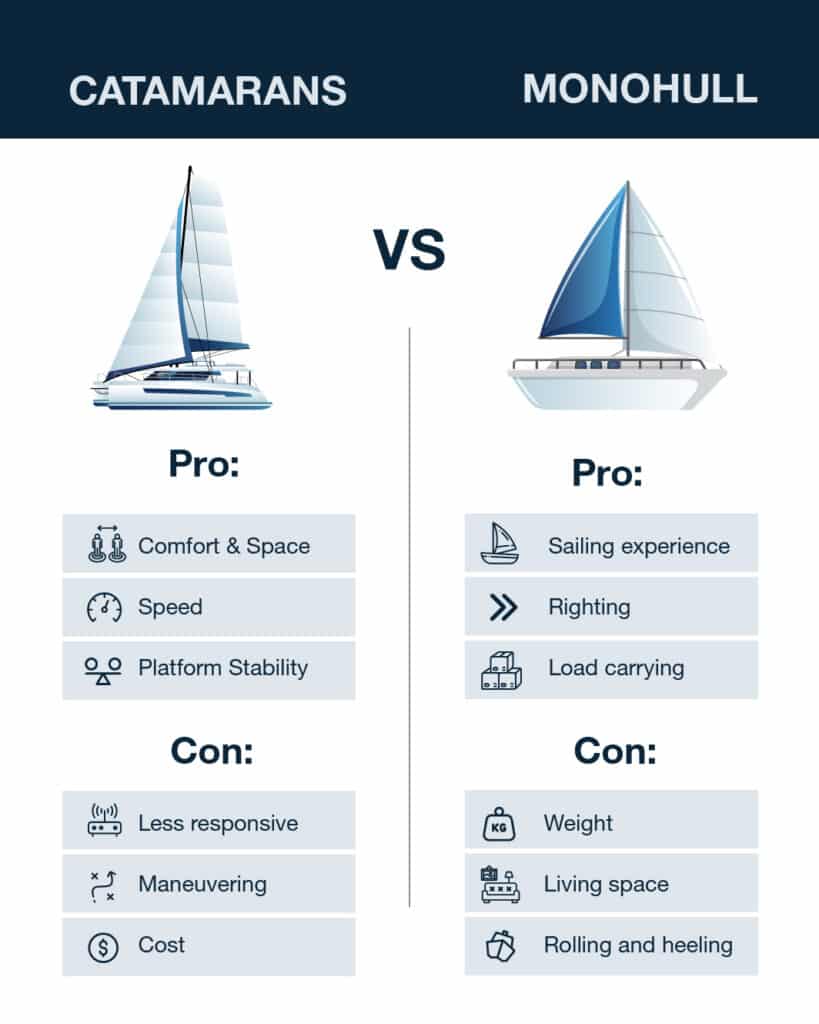
The Strengths and Pros
No matter your choice of monohull or catamaran, there are safe, comfortable, and excellent sailing boats of both types. Neither has an exclusive lock on any strength, and both sail safely and comfortably. But there’s a different emphasis on how they do it. No matter what you are trying to do – sail fast, cruise the world, or just host a crowd at the dock, there are monohulls and catamarans that can work for any requirement.
Catamaran advantages
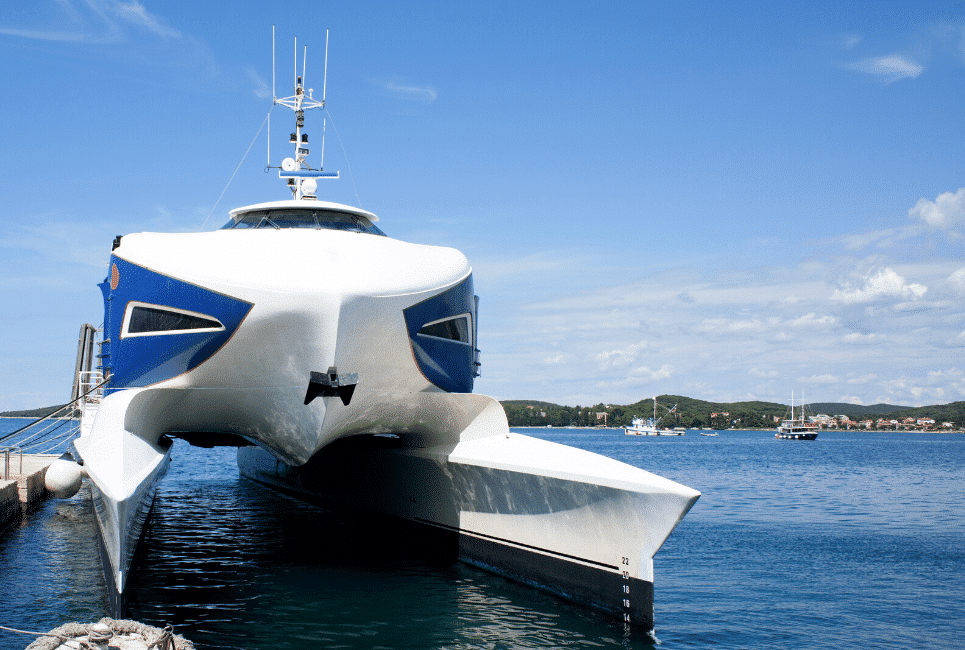
Space and comfort: Two hulls and a wide beam make a very stable platform with lots of volume in the saloon and cockpit. Most living space is above the waterline, with wonderful light and airflow. Cabins in the hulls offer better privacy and isolation, usually with standing headroom.
Straight line speed: Most catamarans are faster in straight-line sailing speed (1) that similar sized or even longer monohulls. Without a lead keel, they’re lighter, so more driving force from the sails converts to speed, and narrower hull forms may have less drag than wide hulls with deep keels. Some heavier cruising catamarans may not be faster, especially if they keep rig size small for ease of handling.
Stability : The beam of two hulls with a bridge deck leads to much higher stability and resistance to roll (2). Waves in an anchorage that induce violent roll in a monohull may make a catamaran bounce or bob. Under sail, catamarans do not heel appreciably even when powered up.
Twin engines. : With one engine in forward and balanced in reverse, most catamarans can spin in a circle in place and make sharp adjustments to the boat’s direction. If you have an engine failure, you also have a second engine, giving a safety edge when you can’t sail.
Monohull advantages

Upwind sailing performance: While catamarans have the edge at straight-line speed, monohulls sail closer to the wind. When you’re racing or you have to sail upwind to get to the next island, this can get you there faster.
Sailing feel and responsiveness : The “feel” of sailing a monohull is much better. With a single hull, you’ll feel wind pressure and trim adjustments immediately for a more responsive helm and a better ability to sail to the wind.
Maneuvering under sail: Monohulls are quite nimble tacking and turning under sail, and there’s less risk of slow or missed tacks.
Righting Moment: The primary offshore safety argument for monohulls is their ability to right when capsized. The heavy keel keeps the boat deck up when sailing, and most monohulls will come back upright even after a complete capsize.
Cargo and Loading: A higher displacement boat with thousands of pounds of lead hung from the bottom isn’t going to be as affected by loading as a relatively light multihull.
Aesthetics: This is subjective, as many catamaran enthusiasts love how they look. Classic sailboat styling, with swept sleek looks, springy sheer lines, and all the “right” proportions are more common on monohulls.
Also read: The 5 Best Electric Anchor Winches
Weaknesses and Cons
Like strengths, weaknesses are relative; just because one class has a strength doesn’t mean the other doesn’t. There are spacious monohulls and beautiful catamarans, just like there are cramped catamarans and unattractive monohulls. The differences have to be highlighted relative to each other, and the weaknesses of one are most apparent compared to the strengths of the other.
Catamaran Cons
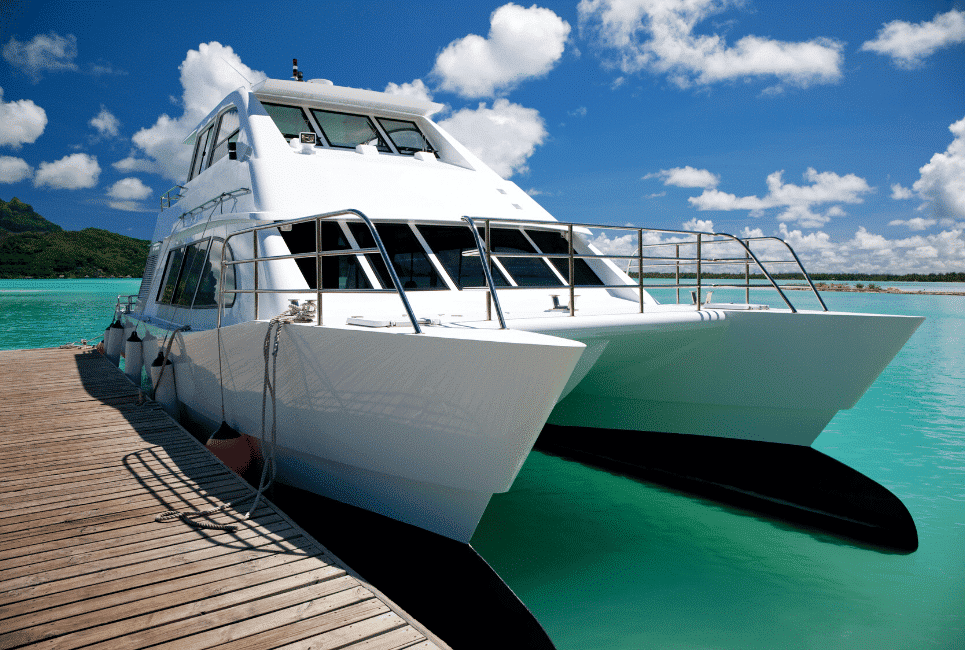
Upwind performance: Cats don’t sail as close to the wind, but they make up for it by sailing faster off the wind. You’ll sail a less direct course upwind. Even if you get in at the same time, you’ll have to sail farther.
Less responsive sailing: Two hulls with two rudders and a very broad platform reduce the helm feel when sailing, cutting responsiveness sailing in shifting wind and wave conditions. It also makes tacking slower.
No-flip zone: It is very difficult, but not impossible, to flip a large catamaran (3). But if a catamaran capsizes, it will not flip back over by itself.
Large in marina/close quarters: You have two problems in marinas. Beamy cats are tough to maneuver in tight spaces because they’re big and visibility is tough over the hulls. And many marinas charge extra because the wide beam extends into the next slip. The good news is that twin engines make tight maneuvering easier.
Price point: Catamarans are more difficult to build and need more materials. This is directly reflected in the cost of the boats.
Monohull Cons
They are heavier: Every large monohull needs a keel for stability (4). They can not sail or stay upright without thousands of pounds of ballast, and this makes them heavier and slows them down. Tiny monohulls can use a centerboard or daggerboard for stability, but most boats big enough to sleep on need ballast.
Darker interiors : Most monohull living space is lower in the boat, where you can’t put enormous windows for light and circulation. It’s very hard to get space as bright and airy as catamaran saloons.
Less living space: With one hull and no bridge deck saloon, most monohulls feel cramped compared to spacious catamarans.
More prone to rolling motions : Only one hull makes monohulls susceptible to rolling in waves, and the movement can be quite uncomfortable.
Heeling: Tipping is just part of sailing monohulls upwind and is unavoidable. It can be reduced on some other points of sail, but not eliminated. Many people, especially non-sailors and new sailors, find this movement uncomfortable or distressing.
You might also be interested in: How to Buff a Boat | A Detailed Guide by a Boating Expert

Troubleshooting Pontoon Boat Battery
Pontoon boats are a great way to enjoy the water and spend quality time with family and friends. But just like any other boat, they rely on a battery to power various systems, including navigation lights, trolling motors, and other…
Boat Accessories

Best Ice Fishing Fish Finders in 2023
In search of the best ice fishing fish finders in 2023? Not all fish finders are created equal, particularly when it comes to ice fishing. Specialized features are crucial to ensure successful outings in harsh winter conditions. You require a…

Best Side Imaging Fish Finders in 2023
Navigating the world of angling equipment can be challenging. That's especially true when it comes to side imaging fish finders, given the extensive range of options available in 2023. This post makes it easy for you to narrow down your…

How to Choose a Fishfinder for Your Boat: A Comprehensive Guide
Today, we embark on a journey to unravel the secrets of choosing the perfect fish finder for your boat. As we navigate through an ocean of options, we'll explore different types of fish finders, delve into their key features, and…
Accessories
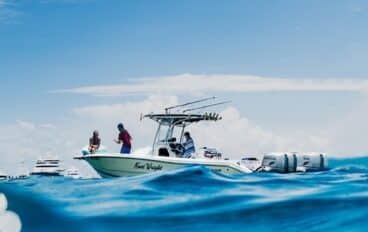
5 Best Portable Fish Finder in 2023
Looking for a portable fish finder for kayaking, ice fishing, or other activities? The good news is that there are a lot of solid products out there. The year 2023 has ushered in an array of advanced models, each brimming…
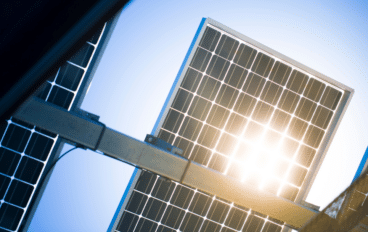
Charging Your Trolling Motor Battery with a Solar Panel
Charging your trolling motor battery with a solar panel is not just the right thing to do for the environment, it is extremely convenient. When you’re out on the boat, with any luck, you’ll have access to a good amount…
Don't miss out

Are Catamarans More Stable?

Last Updated by
Daniel Wade
June 15, 2022
Catamarans are known for stability. But why are they so even-keeled, and how much better are they than monohulls?
Catamarans are significantly more stable than monohulls, and they don’t heel at dramatic angles when underway. This is because catamarans distribute their displacement across a wide beam and keep minimal contact with the water.
In this article, we’ll examine why catamarans are more stable than monohull sailboats and what the true extent of their stability is. We’ll compare catamaran and monohull sailboat stability underway and at anchor, along with the few instances where monohulls have an advantage.
We sourced the information used in this article from experienced sailors and the testimony of marine architects and engineers.
Table of contents
How Catamaran Stability Works
Catamarans are stable because of their unique design and wide beam. A wide boat can’t be shaken back and forth as easily, but the magic comes from the dual-hull design of a catamaran.
Catamarans distribute their weight equally over two identical hulls. Like outrigger sailboats, they resist tilting to one side because the other hull’s buoyancy overcomes the force of the rising or falling sea.
But unlike outriggers, which usually have their sails and weight on the larger hull, catamarans have it all in the middle. That means that the effect is equal on both sides.
It also makes much of the wave interference simply travel underneath the center of the catamaran instead of pushing it off to one side.
Other Benefits of Catamaran Buoyancy
As we alluded to before, catamarans can be made virtually unsinkable due to their inherent buoyancy and additional positive buoyancy that’s worked into the design by manufacturers.
Additionally, catamarans often employ low-buoyancy bows, which further increase speed and stability. They create an effect called ‘wave-piercing,’ in which the low-buoyancy bows are forced through waves instead of riding over them.
This plowing effect causes the catamaran’s bows to cut through the tops of waves like a knife, thus effectively decreasing the difference between the peak and the trough. This reduces front-to-back rolling and also prevents pounding in most situations.
The Pendulum Effect
The pendulum effect is based on a simple rule that monohulls have to contend with. Every action has an opposite reaction. Let’s examine a typical monohull to see how this phenomenon works.
Most monohull sailboats have a low center of gravity. On a single-hull vessel, this is an important safety feature as it allows the boat to recover from rolls. It also slows the rolling motion somewhat for the sake of the crew.
Picture this scenario. A displacement monohull with a deep and heavy keel is traveling perpendicular to the roll of the waves. A large wave rolls under the boat, lifting it up on the opposite side and causing it to roll towards the next wave.
Then, the weight of the keel swings it back, but the momentum carries it to a roll in the opposite direction, just like a clock pendulum. By the time the next wave arrives, the vessel is in the perfect position to be knocked sideways again.
This effect doesn’t occur on catamarans for a few reasons. Firstly, they have virtually no ballast and thus nothing to compound the roll or overcompensate for it—no pendulum effect.
Additionally, catamaran hulls can’t be rolled sideways without pushing the other hull down into the water, which its high buoyancy and shallow draft resist with great force. No push, no roll.
Heeling While Underway
Catamarans don’t heel for the same reason they don’t roll dramatically—buoyancy. Catamarans are highly buoyant, as they carry no ballast and feature thin hulls with tall freeboard. As a result, the sideways force of the wind isn’t sufficient to force the leeward hull very far down.
Benefits of Anti-Heeling Characteristics
Boats that don’t heel excessively have numerous benefits, especially for inexperienced sailors. A heavily-heeling monohull is very difficult to move around inside, as the floor is suddenly sideways.
Additionally, the deck and cockpit become wet and perilous. Catamarans stay level regardless of how fast they’re moving, which allows anyone to safely move around the boat, cook, eat, shower, and sleep without being thrown to the side or rolling out of bed.
Catamaran Reserve Buoyancy
Reserve buoyancy is any watertight space or material that keeps a boat afloat beyond its open and occupied spaces. It’s basically how much ‘float’ a boat has left when open spaces begin to float. And catamarans have a whole lot of it.
Because of their split design and wide footprint, catamarans can store a lot of reserve buoyancy in the form of un-ballasted spaces, unsinkable foam, and more. This is excellent for safety, but it doesn’t necessarily mean a boat will roll less.
What makes catamarans so special is how their hulls are designed. They sit high in the water and high above the water because the weight is well-distributed, and there are huge pockets of air in each of the hulls.
Examples of Incredible Catamaran Stability
But how stable are catamarans, and what does it mean for the passengers and crew? We found some anecdotes told by catamaran owners that are sure to make monohull owners envious.
For example, catamarans are known to be so stable that wine glasses don’t fall off galley tables during high winds. Additionally, people can enjoy a meal on the deck and stay dry during afternoon chop and plentiful whitecap activities.
Can Catamarans Capsize?
Under normal circumstances, the chances of a catamaran capsizing are extremely slim. The same factors that give way to superior inherent stability also do an excellent job preventing capsize. But the answer is a little more complicated than that.
There are some limited instances where a catamaran can capsize, and the results are a lot more troublesome than monohull capsizing. Yes, when a massive wave undercuts a catamaran under the right conditions (usually perpendicular to the waves and wind and in rough weather), a catamaran can flip over.
Unlike monohull sailboats, which rely on a low center of gravity and deep displacement for stability, catamarans gain most of their stability from factors above the water. This means that, when capsized, catamarans cannot self-right. In other words, if a catamaran capsizes, it’ll stay that way.
However, there are some benefits to catamarans when it comes to capsizing. For example, a capsized catamaran has the same buoyancy as an upright one. That means that the now inverted vessel makes for a great life raft and will remain stable in the upside-down position.
Given that catamarans are very difficult (or impossible) to sink, this can still be considered a safer scenario than a serious capsize in a monohull sailboat.
Are Catamarans Stable at Anchor?
Yes, catamarans are highly stable at anchor and generally don’t noticeably roll. Instead, they tend to bob up and down (if they even move at all). This is advantageous, as it keeps decks level and prevents guests from getting seasick.
Related Articles
I've personally had thousands of questions about sailing and sailboats over the years. As I learn and experience sailing, and the community, I share the answers that work and make sense to me, here on Life of Sailing.
by this author
Learn About Sailboats
Most Recent

What Does "Sailing By The Lee" Mean?
October 3, 2023

The Best Sailing Schools And Programs: Reviews & Ratings
September 26, 2023
Important Legal Info
Lifeofsailing.com is a participant in the Amazon Services LLC Associates Program, an affiliate advertising program designed to provide a means for sites to earn advertising fees by advertising and linking to Amazon. This site also participates in other affiliate programs and is compensated for referring traffic and business to these companies.
Similar Posts

Affordable Sailboats You Can Build at Home
September 13, 2023

Best Small Sailboat Ornaments
September 12, 2023

Discover the Magic of Hydrofoil Sailboats
December 11, 2023
Popular Posts

Best Liveaboard Catamaran Sailboats
December 28, 2023

Can a Novice Sail Around the World?
Elizabeth O'Malley

4 Best Electric Outboard Motors

How Long Did It Take The Vikings To Sail To England?

10 Best Sailboat Brands (And Why)
December 20, 2023

7 Best Places To Liveaboard A Sailboat
Get the best sailing content.
Top Rated Posts
Lifeofsailing.com is a participant in the Amazon Services LLC Associates Program, an affiliate advertising program designed to provide a means for sites to earn advertising fees by advertising and linking to Amazon. This site also participates in other affiliate programs and is compensated for referring traffic and business to these companies. (866) 342-SAIL
© 2024 Life of Sailing Email: [email protected] Address: 11816 Inwood Rd #3024 Dallas, TX 75244 Disclaimer Privacy Policy

COMMENTS
A catamaran is much better than a monohull in many ways. Catamarans are more stable, faster, and spacious. They also offer safer anchorage and are easy to control. Monohulls are more maneuverable, have lower costs, and better when sailing upwind.
The catamaran will move around with the wind, always staying flat, while the sailboat will rock from side to side and might even get you seasick. This is especially noticeable when the wind is opposing the waves, making the boat have the wind pushing it from one side and the waves banging it from the other side.
Backing into a slip is easier on a catamaran than a monohull. To back into a slip (which will make it more convenient for crew to step on and off) pull up until perpendicular with the slip, pivot the boat with the engines and then use both in reverse, adjusting as you back up if there is a beam wind.
In deciding between a sailboat and catamaran, there are several considerations to keep in mind. A catamaran is easier to sail and will provide a more spacious and luxurious experience. The sailboat, on the other hand, is more immersed in the water and provides a more realistic and exciting experience. It can be challenging knowing which boat is ...
Aug 17, 2015. Two sailboat experts argue monohull vs. catamaran. Contributed by Denison Yacht Sales. The great debate over which is better—one or two hulls—boils down to several factors, each with distinct advantages and disadvantages. The verdict usually defaults to personal preference and intended use of the vessel, but that didn't stop ...
1. Stability: Sailboat: Embraces the classic elegance of a single hull, providing a responsive and traditional sailing experience. The tilting motion, counterbalanced by the daggerboard, adds a dynamic element to the journey. Catamaran: Boasts unparalleled stability with its two hulls, virtually eliminating the pronounced tilting effect.
Unlike a sailboat, a catamaran is practically unsinkable.However, from a physics point of view, it is easier to capsize a catamaran, although the probability of this happening is relatively low, and the boat stays afloat, providing a haven for the crew.. The limit of positive stability (or angle of vanishing stability), which can make the boat capsize, is considerably smaller in the case of a ...
A catamaran is a twin-hull boat with two equally-sized hulls placed side by side. They're powered by engines, sails, or both—and they're known for efficiency and speed. Catamarans are the most common kind of multihull boat. In this article, we'll go over the characteristics of catamarans and how to differentiate them from other types of ...
A catamaran is a two-hulled boat that is used for sailing. It is common practice for cats to use their paws as a means of stabilizing themselves. Monohulls are stabilized by keels that are blasted. Catamarans' displacement, hull volume, and draught depth are all less than those of roughly equivalent monohulls.
Stability: Sailboats: Monohulls can heel (lean) while sailing, which some sailors enjoy for the thrill but can be discomforting for others. Catamarans: Greater stability due to the dual hulls ...
Performance: The sailboat is usually more sporty than the catamaran. Cost: Generally speaking, the sailboat is more suitable for smaller budgets. Comfort: The catamaran has more living spaces, which gives in more comfort in general. Space: Catamarans have a more interior and exterior space, ideal for families or large groups.
The question of whether to choose a monohull vessel or a catamaran is an eternal dispute between boat lovers. These arguments are usually based on one's preferences and philosophy. In fact, the popularity of catamarans has grown significantly since their design facilitates many aspects of sailing. But, both mono-hulls and multi-hulls have their advantages and disadvantages. So, in this ...
Catamaran sailing has become more popular with the general public over the past few years, mostly because catamarans are a lot easier to sail than other types of boats, and they can also be a lot safer, especially if you don't really know how to sail. In the next few paragraphs, we will explain exactly what a catamaran is and what a sailboat ...
ADVANTAGES OF A CATAMARAN. 1. Speed Equals Safety. The speed of a catamaran makes it possible to outrun bad weather. While catamarans do not point as high into the wind as a monohull (or if it does, it makes more leeway or slides sideways), it is about 20% faster than a monohull.
When it comes to speed, catamarans are certainly faster than sailboats. It is because more surfaces of monohulls are below the sea level and therefore the resistance of the sea is much higher. A lot of people agree that riding with catamarans is more uncomfortable than with sailboats because of the hydrodynamic design of sailboats which fits ...
A catamaran offers more space than any other boat of similar length. With spacious saloons, plenty of seating and lounging areas, and ample sunbathing spots (such as the netting known as the trampoline), you'll never feel cramped.The cabins are roomy and the bathrooms are as big as those in many apartments. People who dislike tight spaces or value their privacy will find a catamaran ideal.
Gunboat 62. gunboat_catamarans. An original performance catamaran cruiser from the iconic Gunboat manufacturer, the Gunboat 62 has truly cemented its place as one of the best catamaran sailboats to ever grace the oceans. Honestly speaking, this cat-inspired a whole range of other incredible boats including HH66 Catamaran and the Balance 526.
A catamaran has more space than a monohull. This is because the boat is wider, and it has a much larger deck area. It also has twice as many hulls, so you have more overall space between the two of them. The additional space is great for people looking to throw parties on their boats.
Upwind sailing performance: While catamarans have the edge at straight-line speed, monohulls sail closer to the wind. When you're racing or you have to sail upwind to get to the next island, this can get you there faster. Sailing feel and responsiveness: The "feel" of sailing a monohull is much better.With a single hull, you'll feel wind pressure and trim adjustments immediately for a ...
What is a Catamaran? Catamarans are a kind of multi-hull sailboat with two hulls joined together. They are often short and wide, resembling a square or rectangle from above. Catamarans are colloquially distinct from outriggers, which are double-hulled vessels with one large primary hull and a small outboard stabilizing hull.
Catamaran sailing vessels for sale on YachtWorld are listed for a range of prices from $53,723 on the relatively moderate end all the way up to $7,224,894 for the most unique, one-of-a-kind yachts. Catamaran By Condition. Used Catamaran 1,269 listings . New Catamaran 451 listings .
The best liveaboard catamarans are the Manta 42, the Nautitech 44, the Voyage 44, the Privilege 435, the Elba 35, and the Lagoon 380. These vessels are seaworthy, comfortable, and ideal for long-term living. We sourced the technical specifications of these vessels from maritime records and directly from sailboat manufacturers.
Catamaran Vs Trimaran. Gabriel Hannon. August 30, 2022. As boatbuilders make faster and more luxurious multi-hulls for cruising and racing, it is time to settle the debate: Catamarans vs. Trimarans. Catamarans and trimarans have distinct characteristics regarding comfort, sailing performance, safety, and personal preference.
Catamarans are significantly more stable than monohulls, and they don't heel at dramatic angles when underway. This is because catamarans distribute their displacement across a wide beam and keep minimal contact with the water. In this article, we'll examine why catamarans are more stable than monohull sailboats and what the true extent of ...